Bockscar (The Plane That Ended WWII)
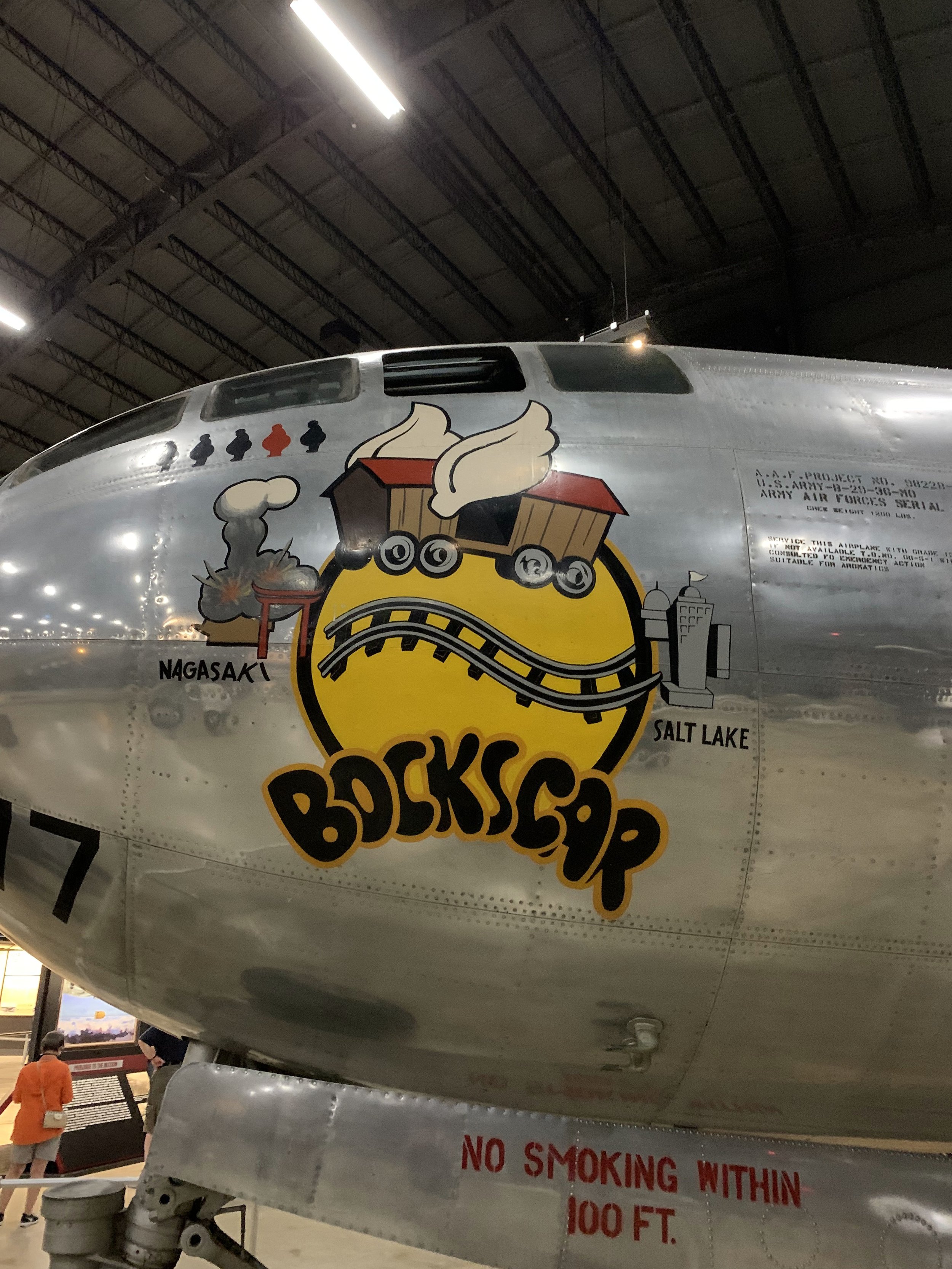
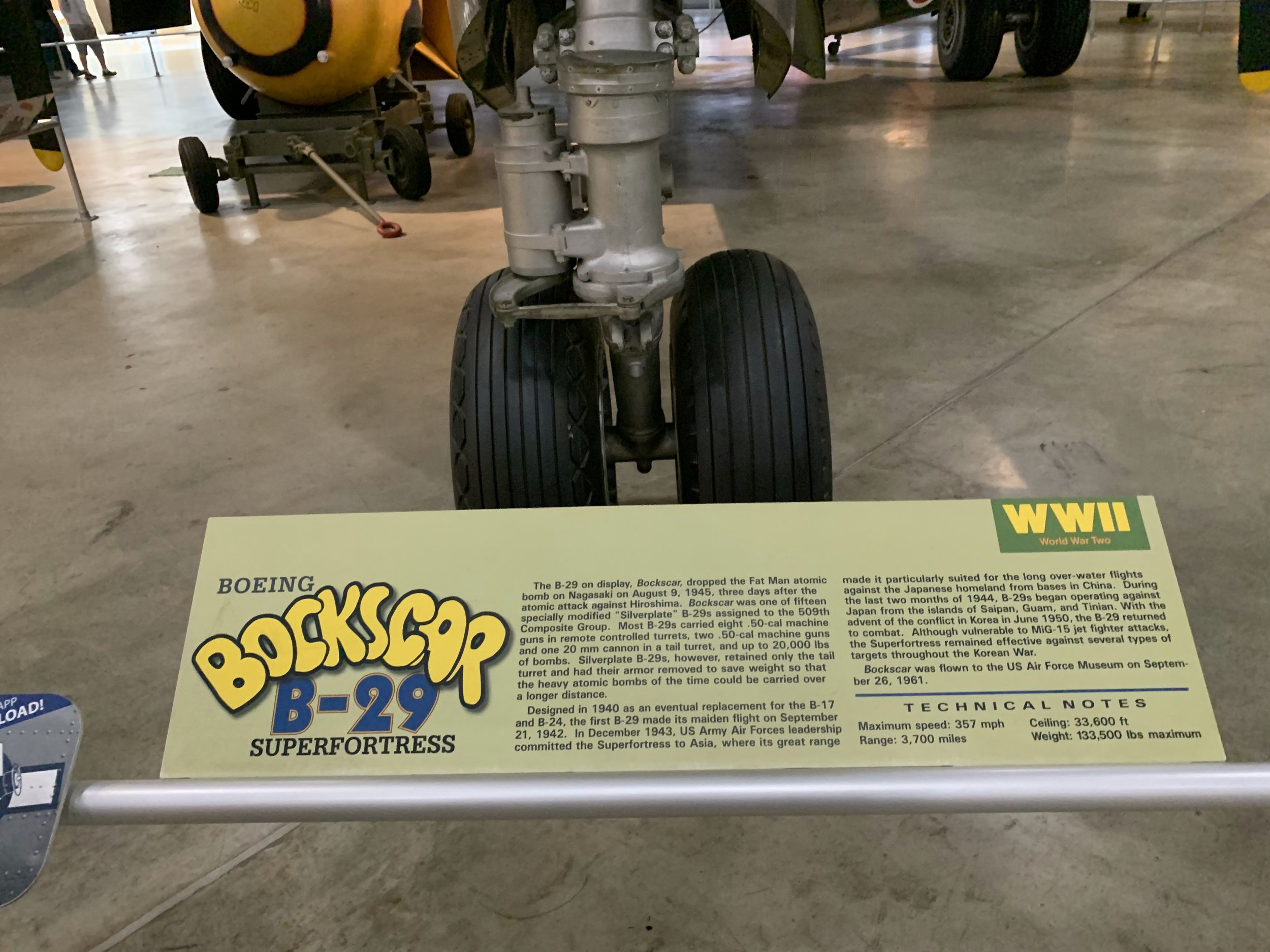
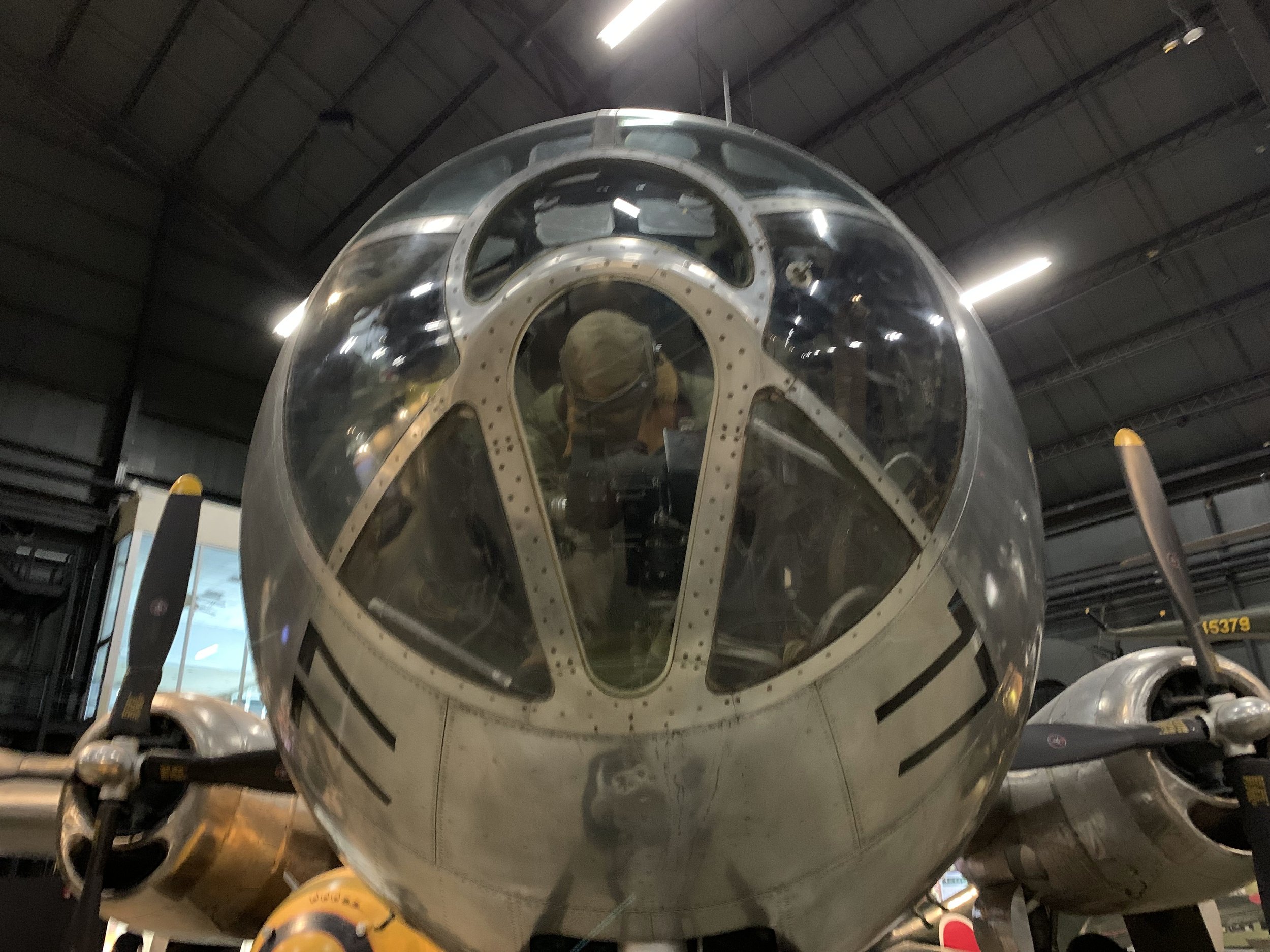

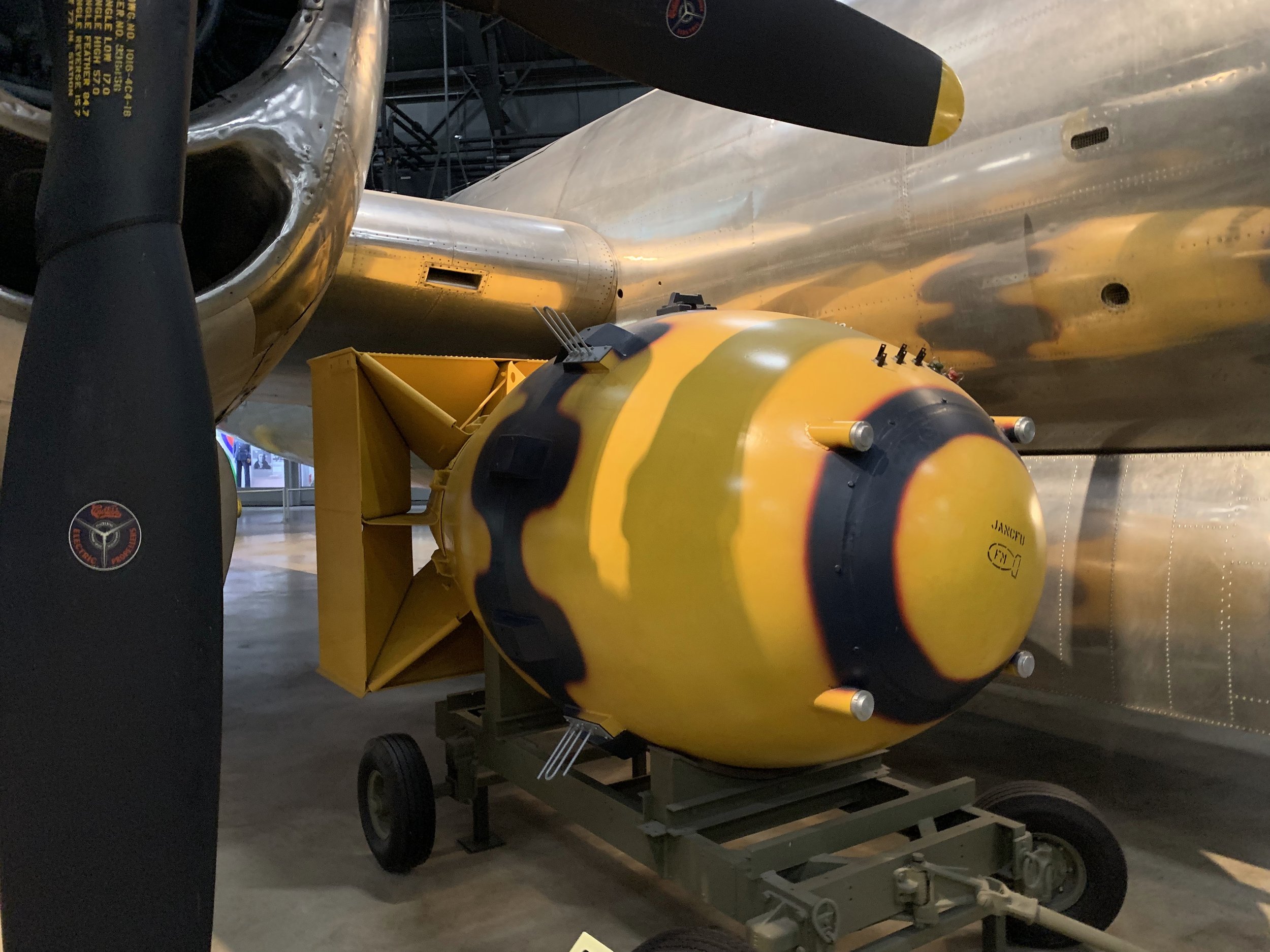

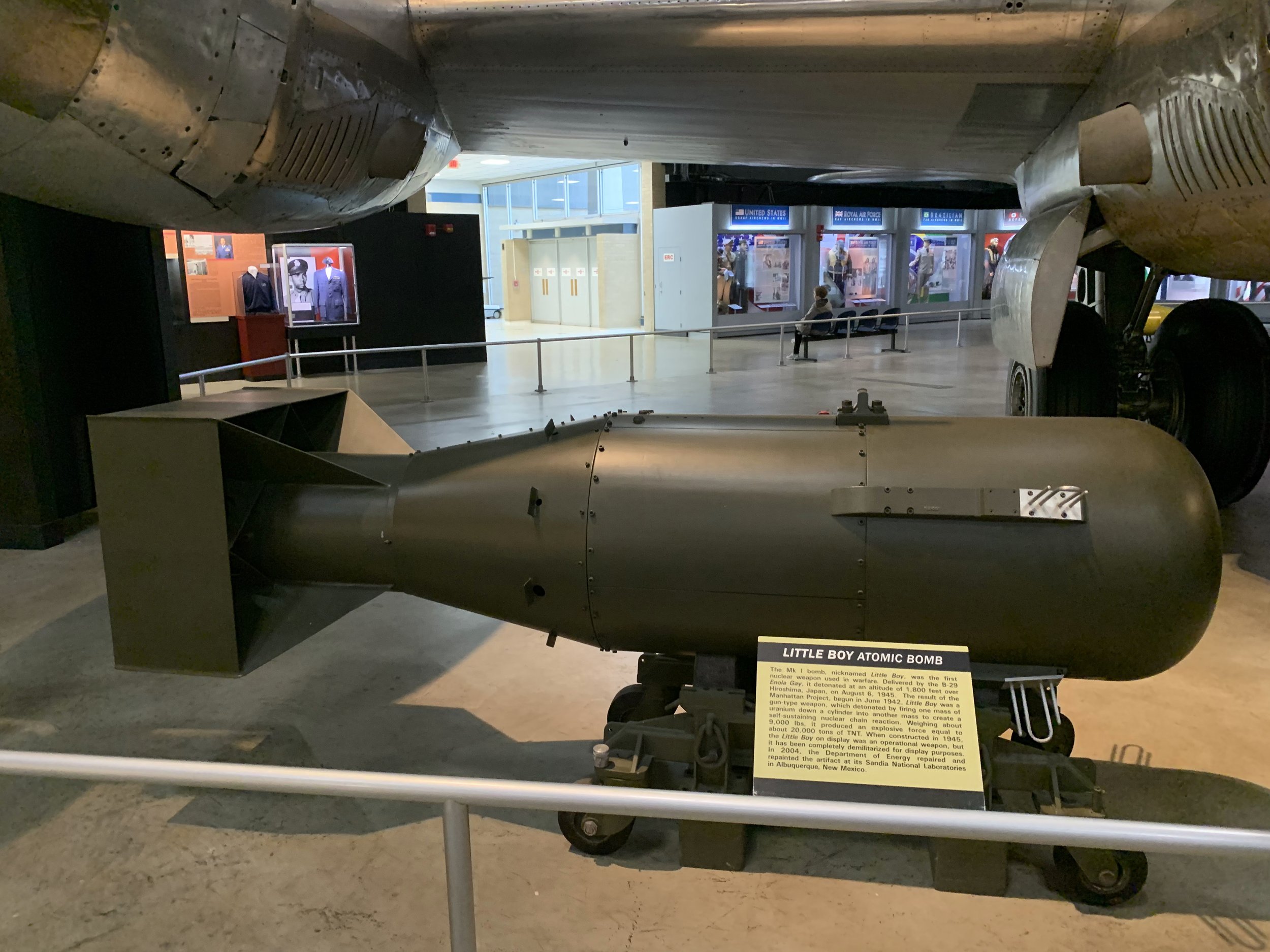
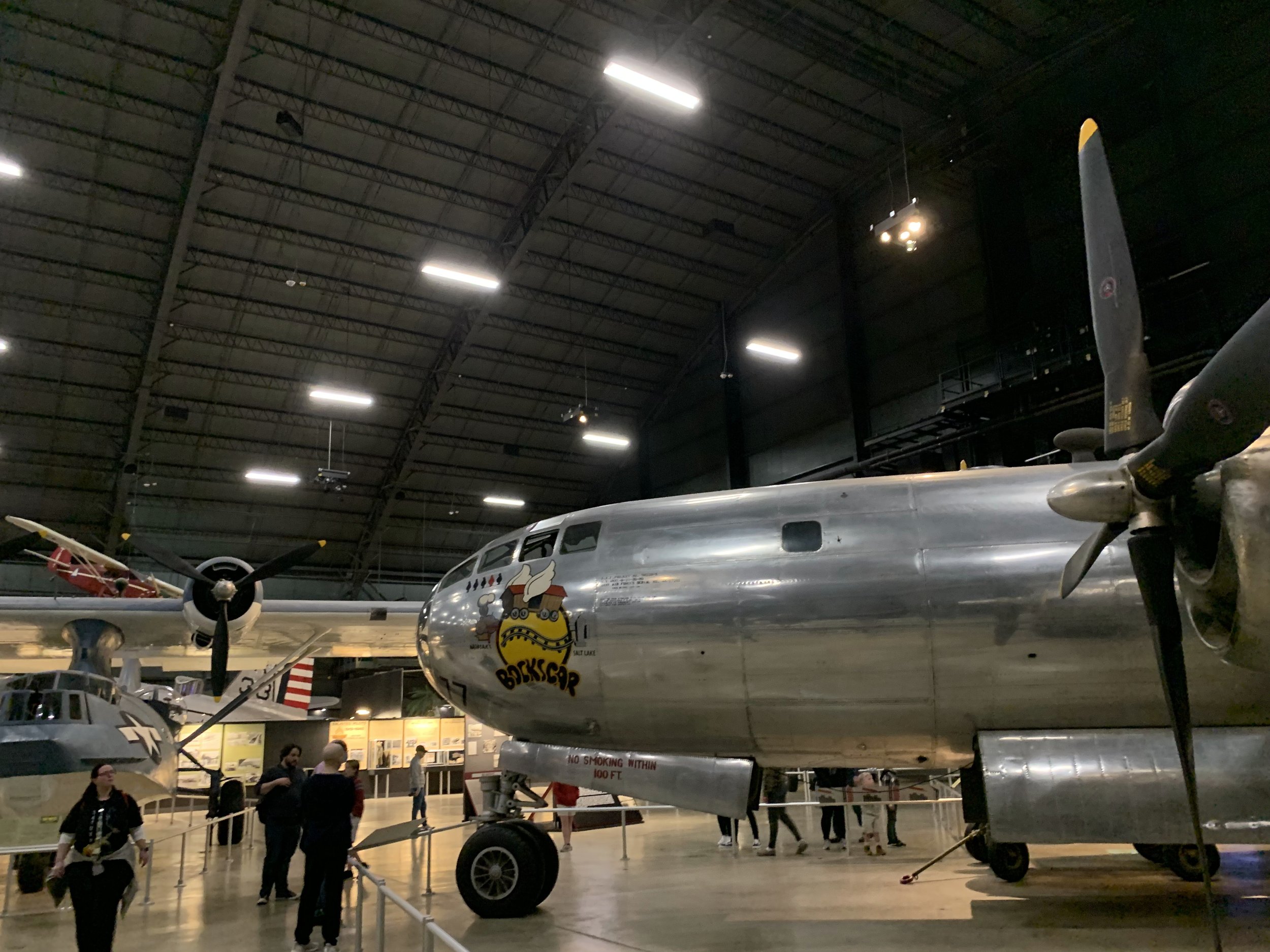
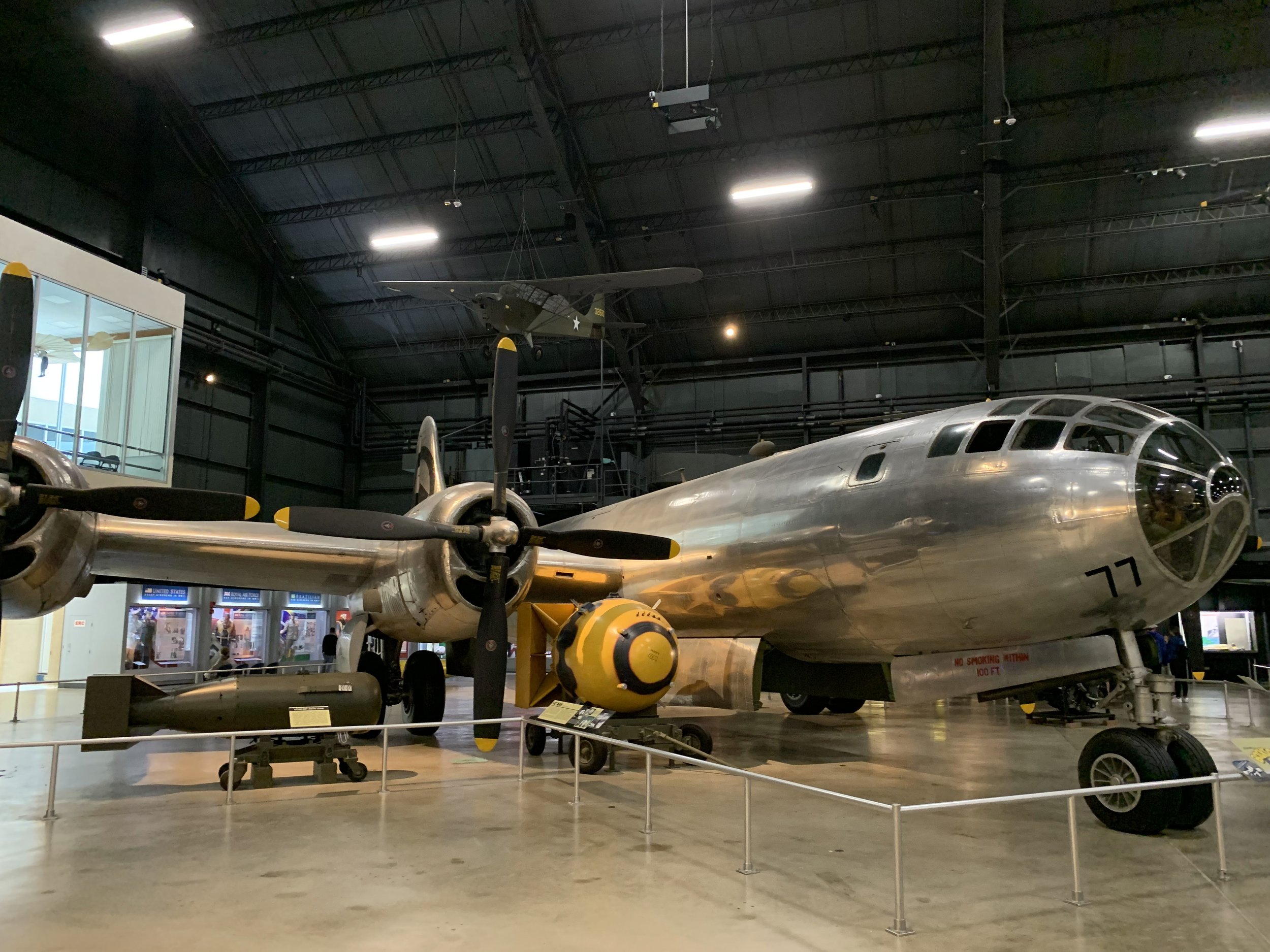
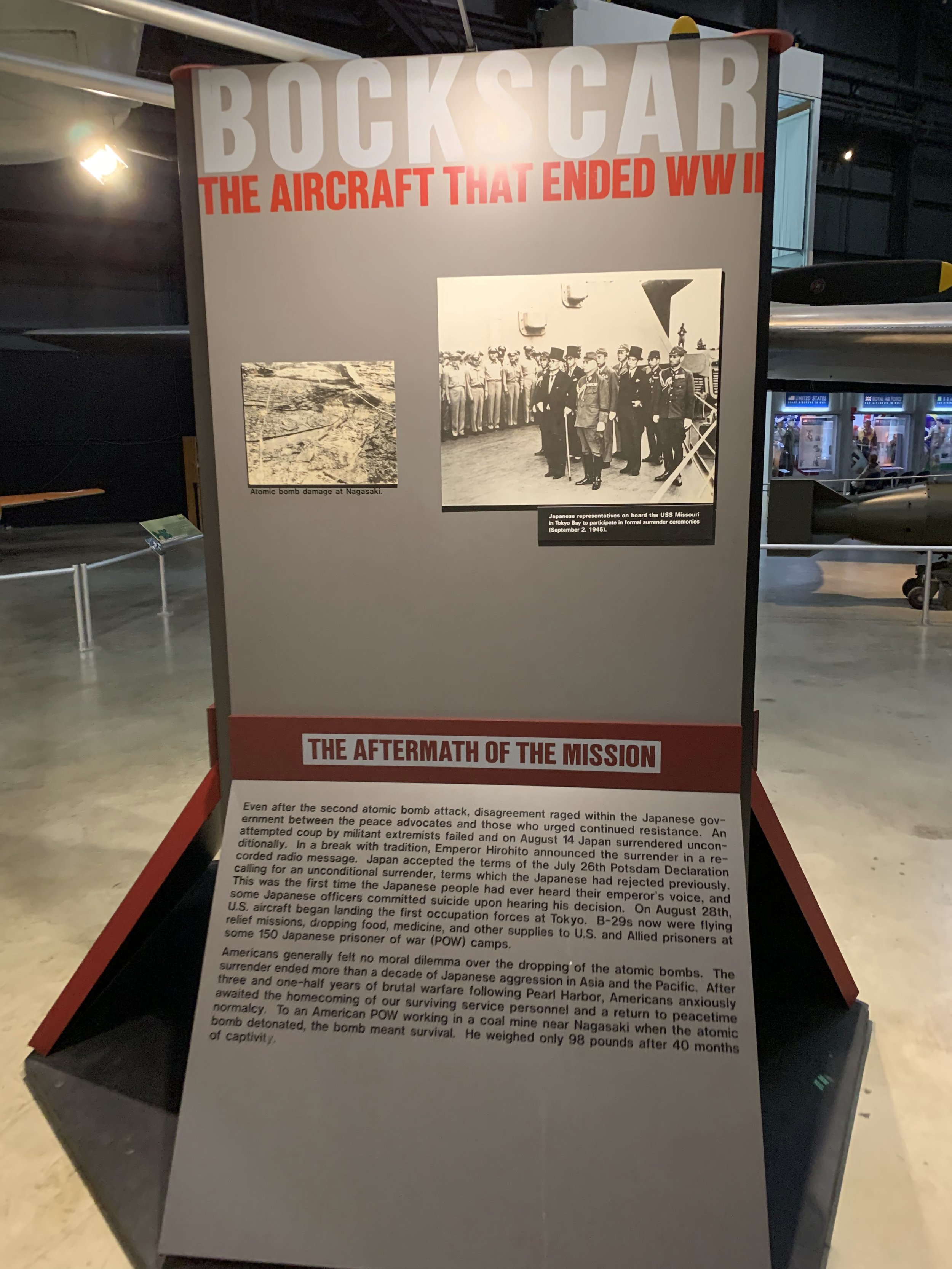
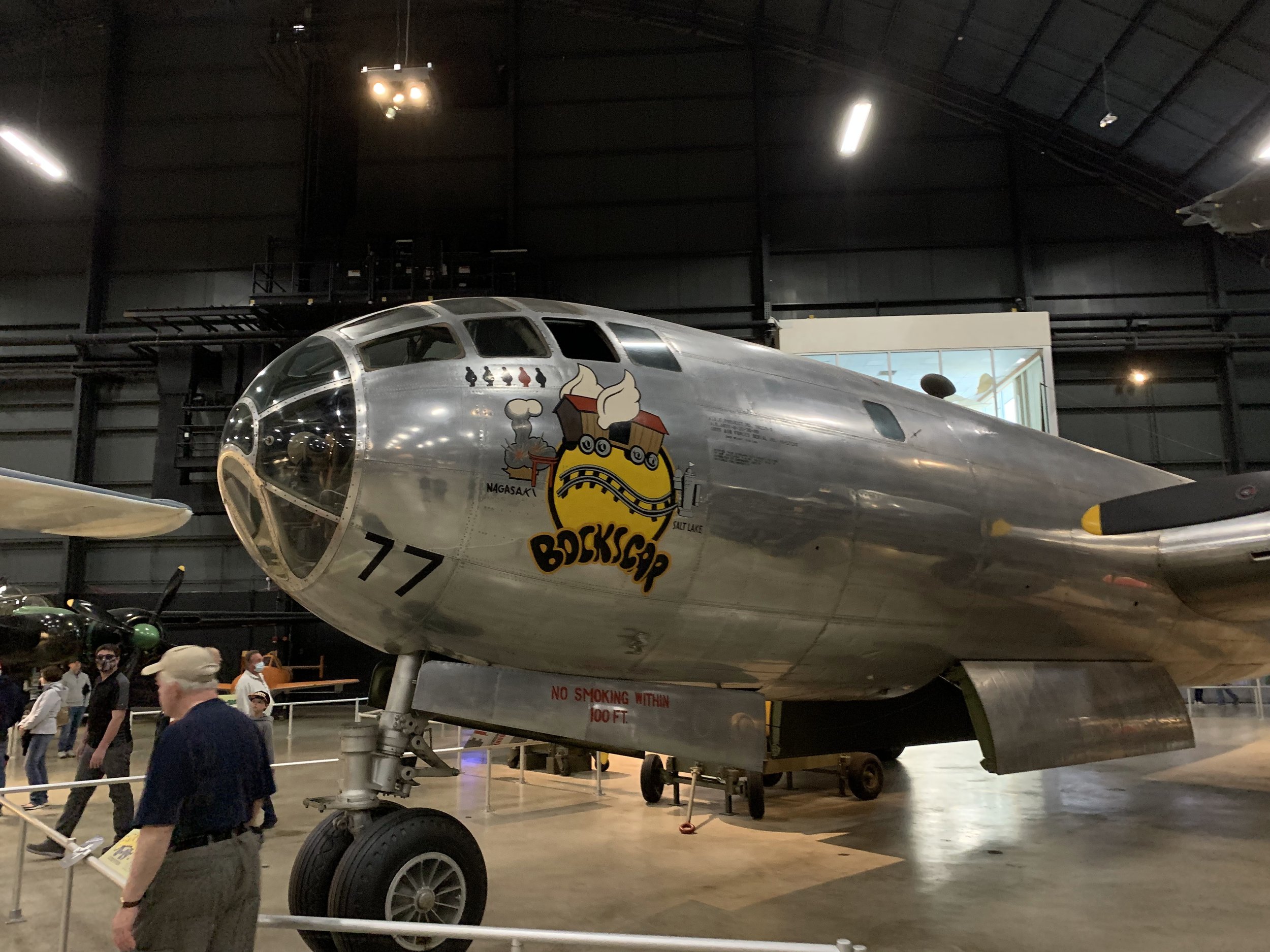

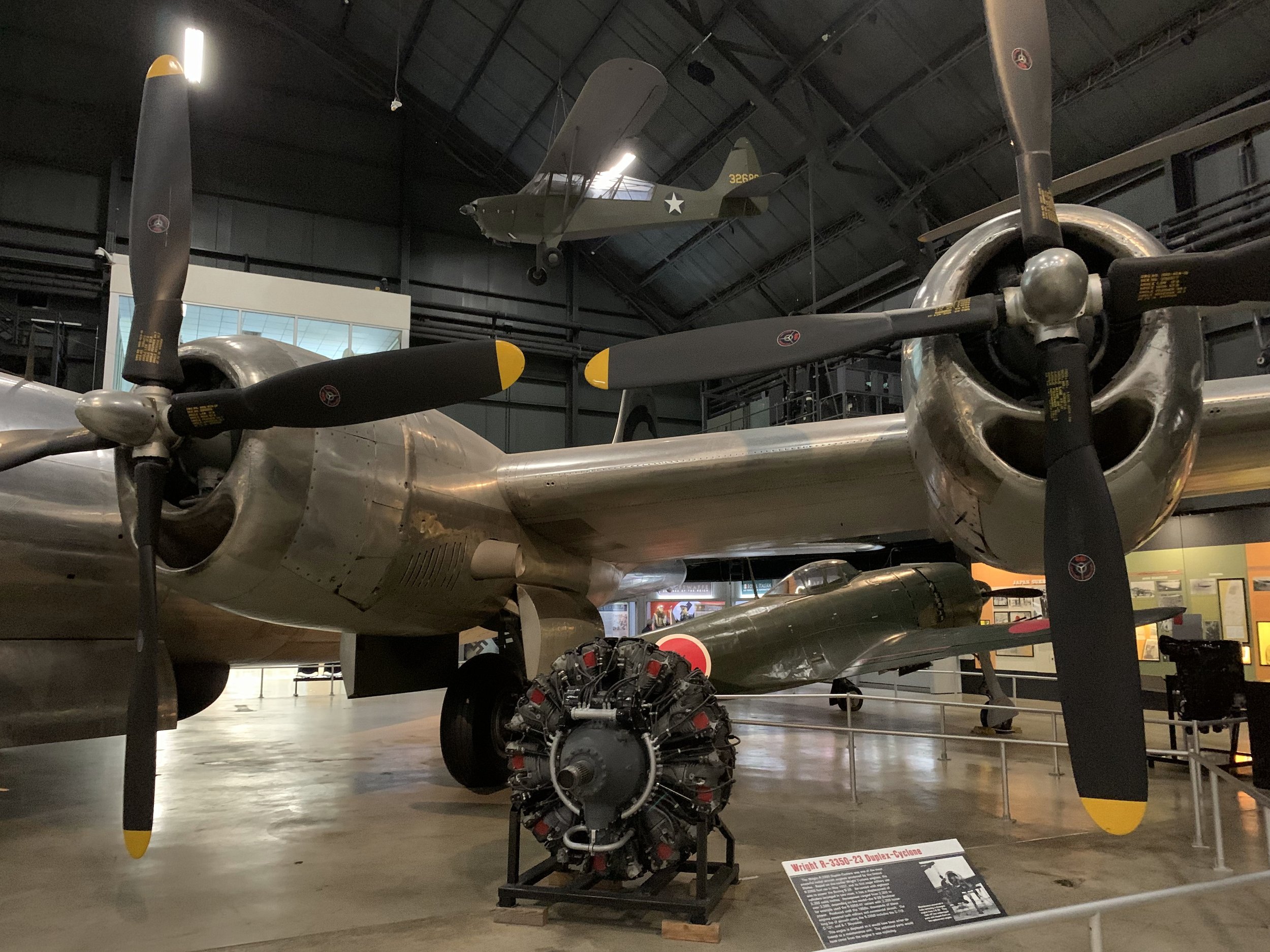
On August 9th 1945 Major Charles W. Sweeney and his crew piloted this B-29 on a most terrible mission. At 10:58 AM local time, they would drop the “Fat Man” bomb onto the city of Nagasaki. Although they actually missed their target, allowing the natural features of the land to protect a good sized portion of the city, with the flip of a switch these men would end the lives of an estimated 35,000 people, and seriously injure an additional 60,000. 5 days later Japan surrendered unconditionally, finally ending the largest war the Earth has ever known.
Major Sweeney had been handpicked by his commander Colonel Paul Tibbets (who had previously flown the Enola Gay to deploy the world’s first atomic bombing) for this important mission. However, Bockscar was not Sweeney’s regularly assigned plane. His personal craft, The Great Artiste had been outfitting with extensive scientific instruments in support of Enola Gay’s earlier mission. Rather than waste precious time swapping this gear, Sweeney chose instead to simply commandeer Bockscar for his mission.
Although it ultimately proved successful, the mission was plagued with problems from the start. Shortly before takeoff it was discovered that the plane's “fuel transfer switch” was damaged, which significantly reduced its fuel capacity. Then due to a miscommunication regarding the altitude for rendezvous, Bockscar was not able to meet up with its support plane The Big Stink. Waiting on this redezvous that never happened also meant burning additional precious fuel.
Now arriving late at their intended target, the crew found it obscured by smoke from nearby fires. Knowing that their seriously depleted fuel levels would ultimately limit their chances of success, Sweeney diverted to his secondary target. After completing its mission, Bockscar would essentially land on fumes, seeing both engines die out due to lack of fuel shortly after touchdown.
The tragic destruction of the city Nagasaki was the result of no less than 2 failures of the American military’s primary targets. By early 1945 the military had narrowed possible bombing targets down to 4 cities. Kyoto, Hiroshima, Kokura, and Niigata. However, U.S. Secretary of War Henry Stinson had honeymooned in Kyoto, and requested that it be removed from the list, leading Nagasaki to be substituted. The city ultimately had less than favorable terrain for optimum destruction (a factor that saved a good chunk of the city after Bockscar failed to hit it’s intended target point), and featured a POW camp, essentially relegating it to the bottom of the list. On that fateful August morning, smoke coverage over the primary target, and a bomber dangerously low on fuel sealed the city’s fate.
After the war Bockscar was assigned to Roswell Airforce base for a couple of years before ultimately being retired to storage. In 1946 it was signed over to the Airforce Museum, and in 1961 it was flown to it's present home at the National Museum of the Airforce, at Wright-Patterson Air Force Base in Dayton Ohio. Today it stands at the exit of the WWII wing of the museum, in honor of its historic role in ending the war.
Note: The atomic bombings carried out by The United States against Japan remain a controversial topic. By the time the bombs were ready for deployment the war had ended in Europe, and the Pacific Theater was a lost cause for the Japanese. The Imperial Government knew this, and most of the powers that be favored a surrender. Japan did want to ensure certain terms for their surrender however, and was prepared to drag the war out a bit in hopes of securing this. Meanwhile most American's were still hungry for vengeance over the attack on Pearl Harbor, and wanted nothing less than an unconditional surrender.
At the solider level, Japanese warriors were known to favor death over dishonor. The fighting that occurred already in taking several islands of Japan had seen some of the heaviest casualties of the war. America knew that an assault on the Japanese mainland would feature a significant human cost. In anticipation of this the country ordered so many Purple Heart medals that a soldier injured in Iraq today, would be issued a medal from the unused WWII stockpile.
The atomic bomb had been developed primarily under President Franklin Roosevelt, and was so secretive that Vice President Harry Truman was not made aware of it's existence until his first Presidential briefly following Roosevelt's sudden death. Reluctant to unleash such hell upon the world, Truman was finally swayed by the projected causalities, and an advisor who reportedly told him "Mr. President, what will tell the American people at your impeachment trial when they learn you could have ended the war early?"
With all of this back-story in mind, I ultimately stand by my title. The atomic bomb was not a magic bullet that saved the world and ended the war. It was however a terrible, but effective statement to the Empire of Japan. America had unlocked a destructive force beyond comprehension. There would be no grand battles where a solider could lay down his life with honor in support of the Empire. Instead Japan could either grant an unconditional surrender as the allies demanded, or it could be wiped from the face of the Earth. In this respect, the bomb released by Bockscar provided the final push needed to convince Japan to surrender, and thus ended the war.
Want to Experience This Adventure for Yourself:
Boxcar can be found in the WWII section of the National Museum of the Airforce. Admission is free, but donations are highly encouraged to support the museum's mission of preserving American aviation history.
1100 Spaatz St
Dayton, OH 45431
The Roebling Suspension Bridge
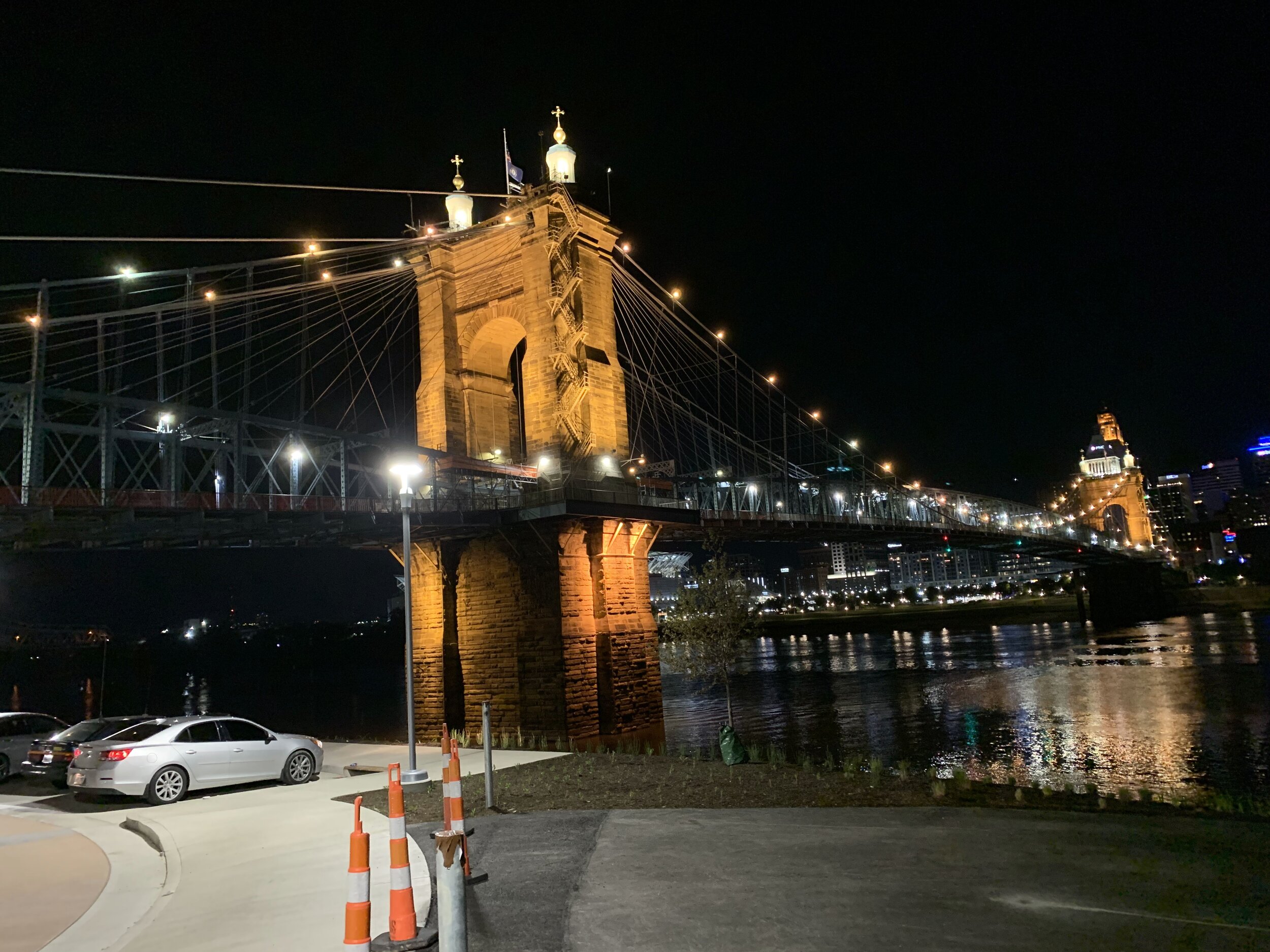

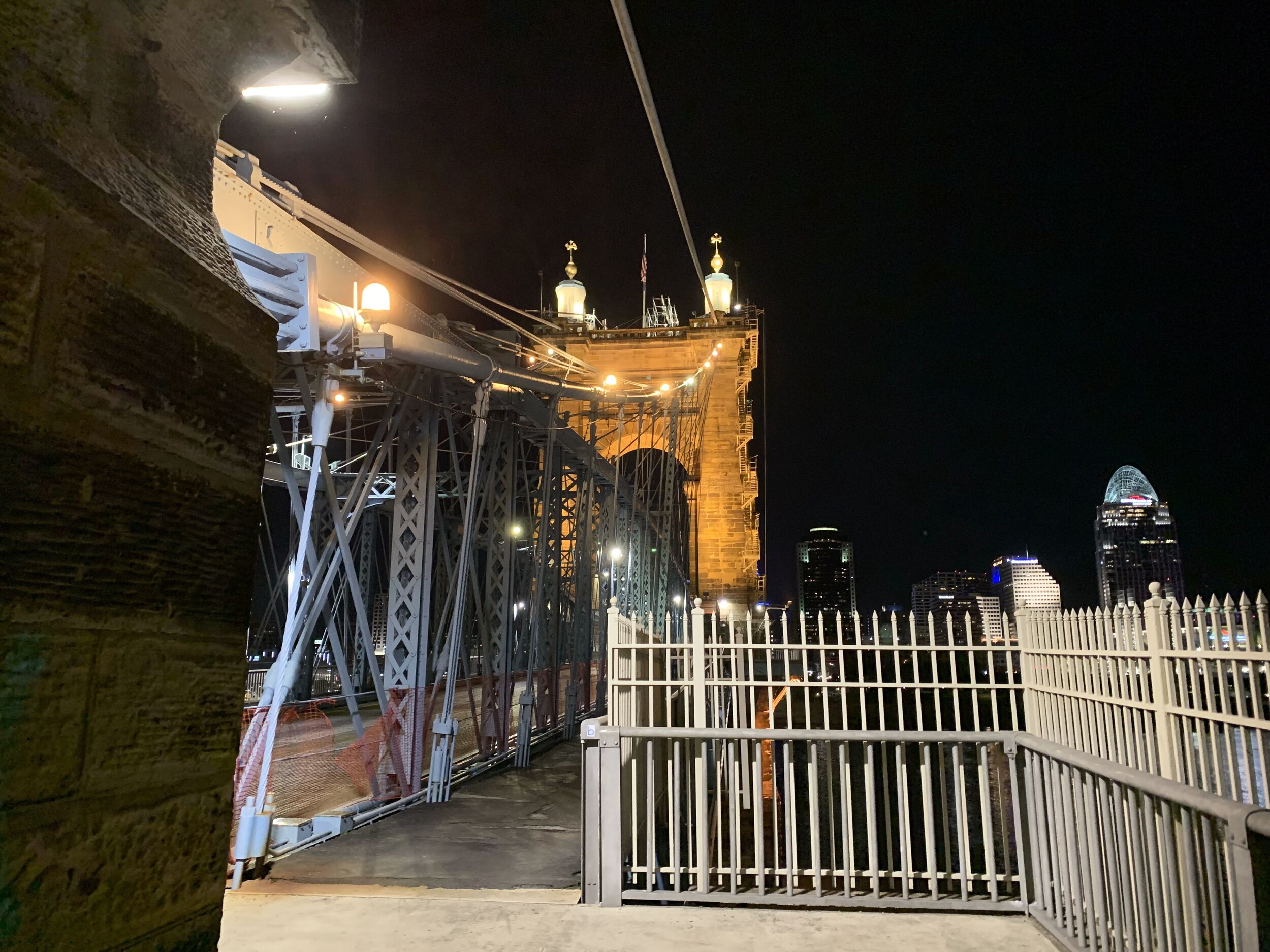
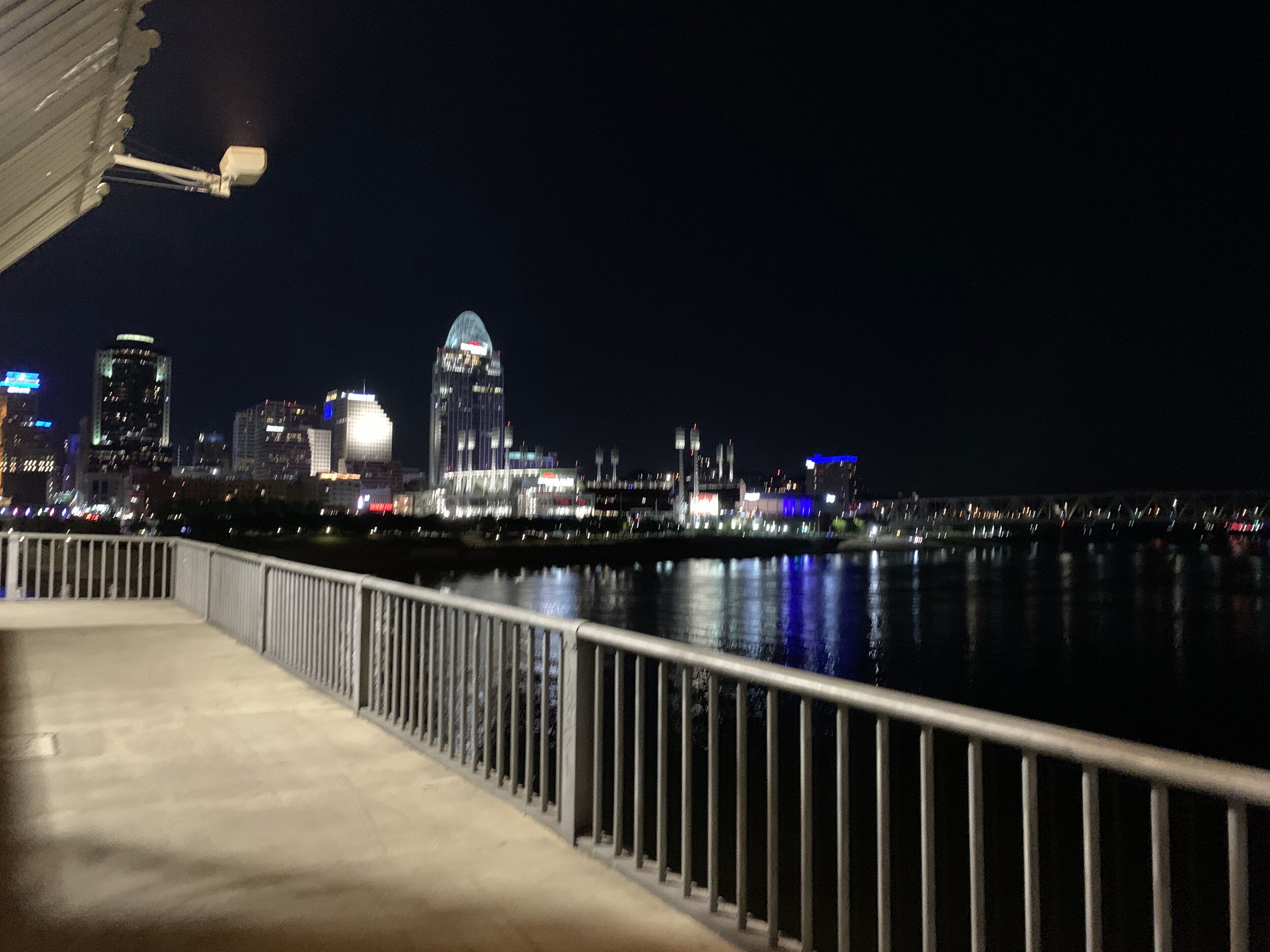
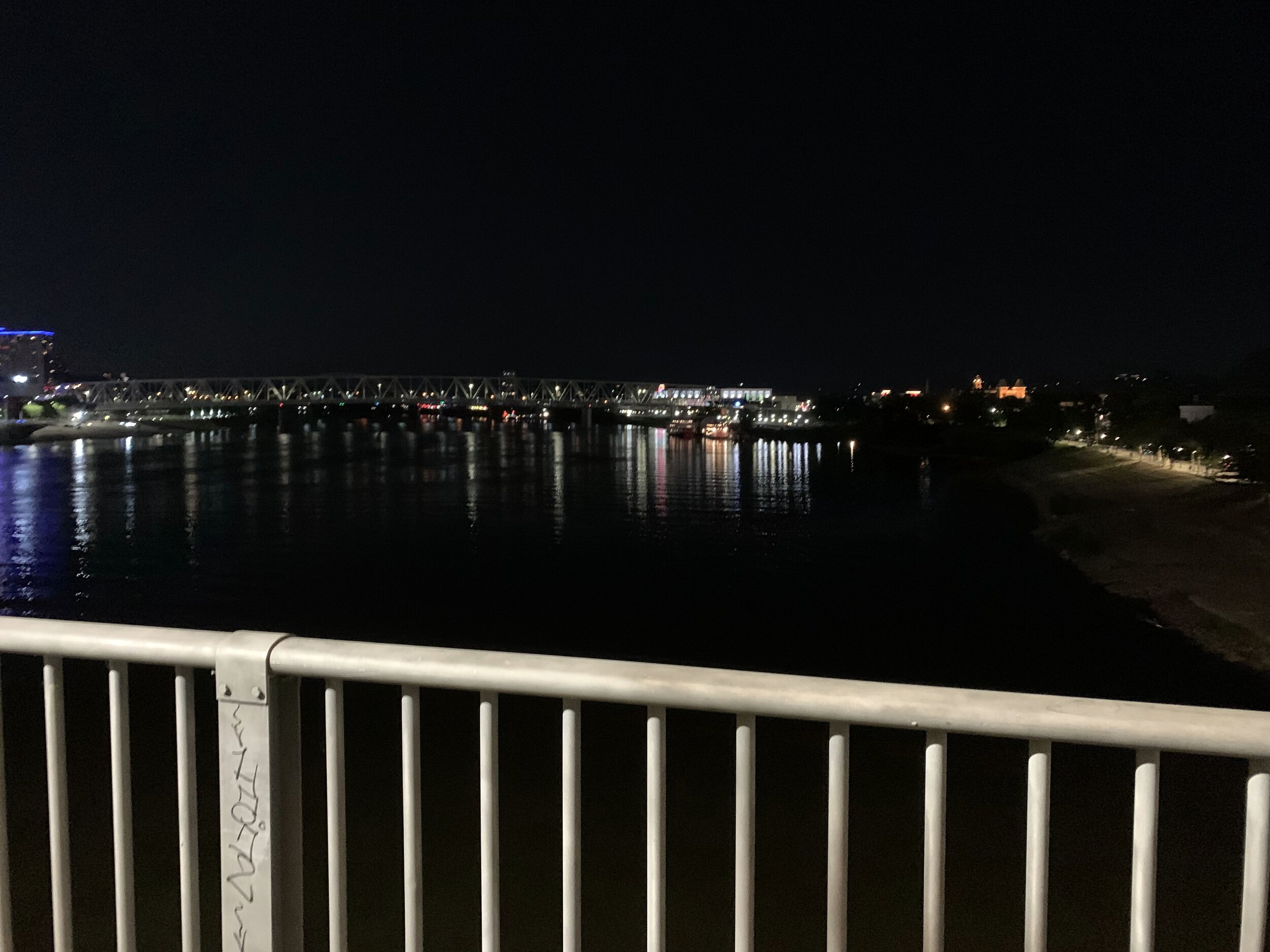
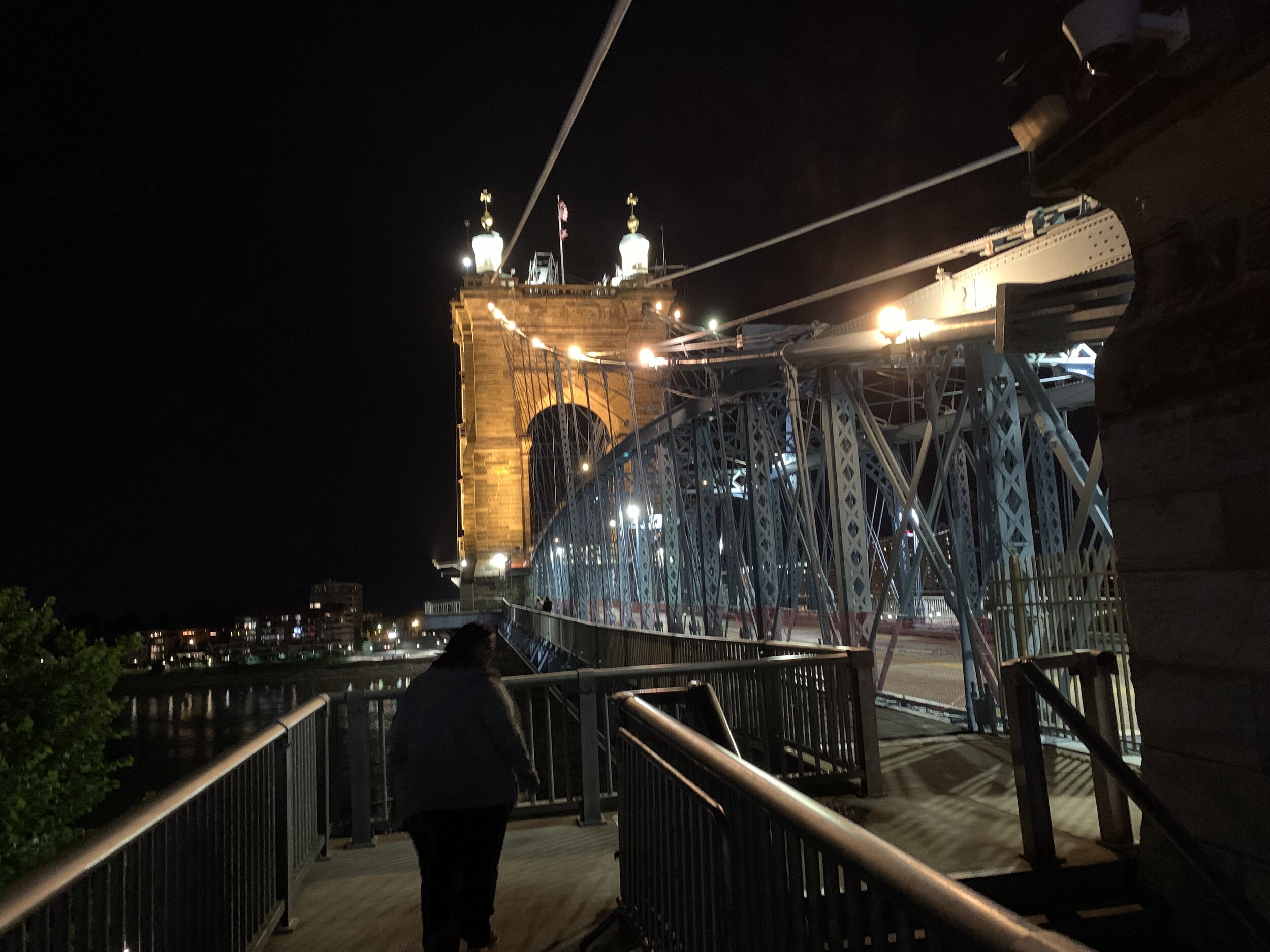

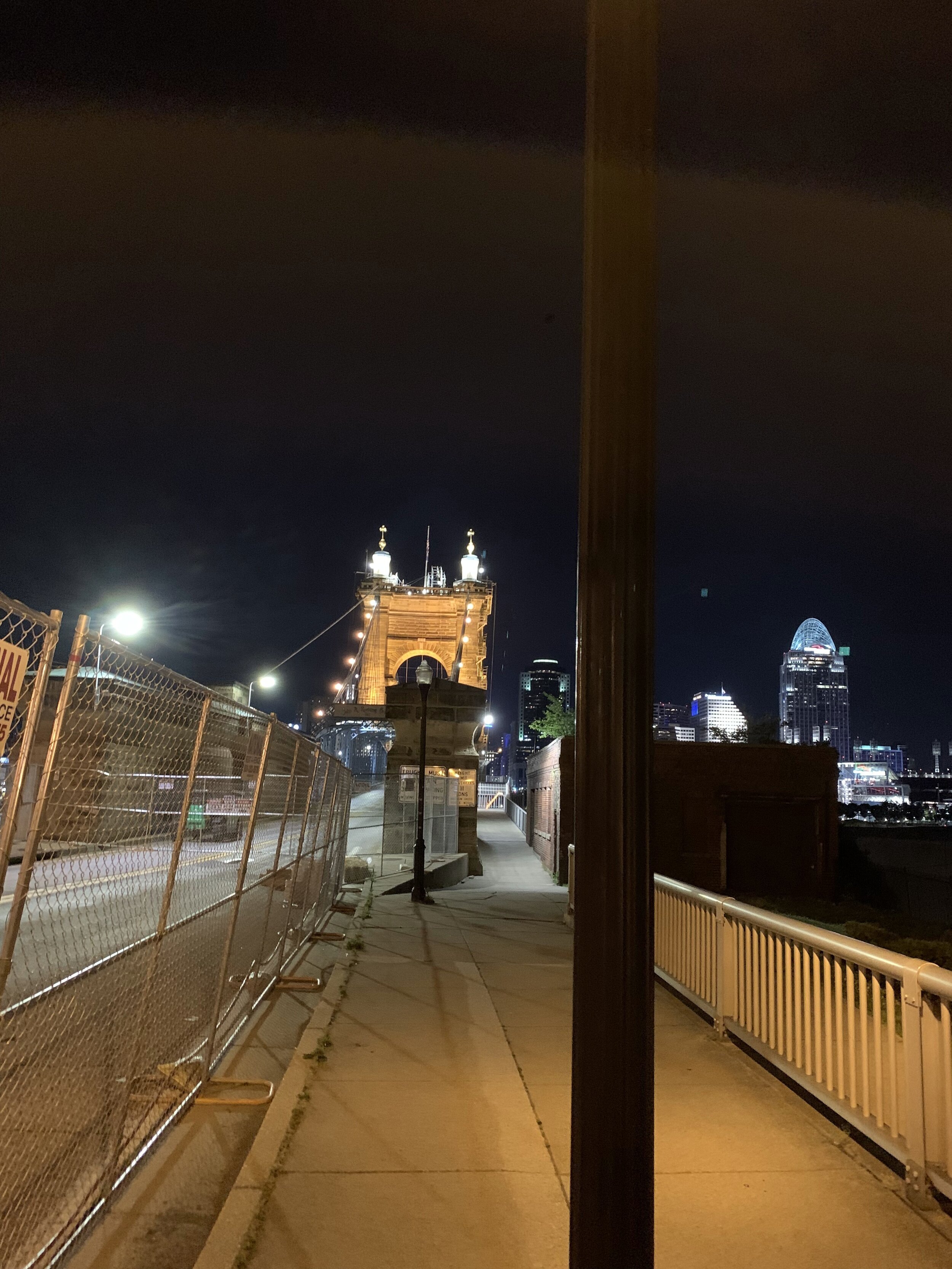
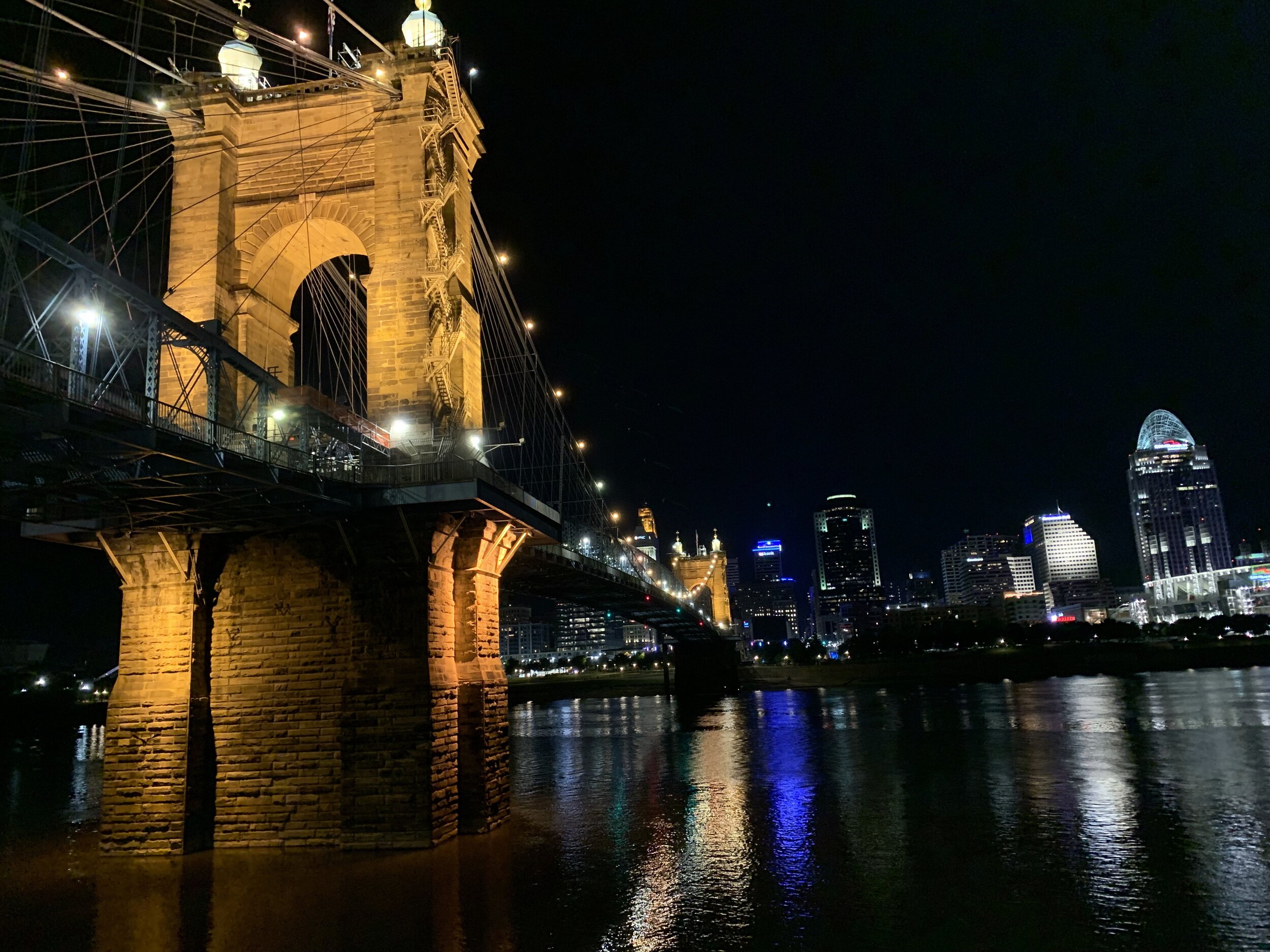
The Brooklyn Bridge is one of the most iconic landmarks of New York City. When you see it in your favorite movies and TV shows, you know instantly what it is and where your story is taking place. This famous bridge is the ultimate master work of bridge builder John A. Roebling. To truly appreciate the history and architecture of the Big Apple’s greatest bridge, we need to examine her prototype. 650 miles south-east in Cincinnati Ohio you can find the John A. Roebling suspension bridge.
Spanning 1,057 feet this “first bridge over the Ohio” was the longest suspension bridge in the world when it opened in 1866. A title it would hold until surpassed by it’s younger sister in Brooklyn when she opened in 1883. Although several bridges now span the Ohio River connecting the states of Ohio and Kentucky, the Roebling bridge proved quite controversial in its day. Cincinnati was an economic powerhouse, and Ohio feared that providing easy transport between the two states would see nearby Covington siphon away some of that dominance.
Over her 155 years of existence the bridge has seen several upgrades and renovations. Although the stone towers had been over-engineered to the point that they can support modern traffic, the supply-chain interruptions of the Civil War meant that the actual roadways of the bridge were built to the barest minimum standards. Today the bridge supports 2 lanes of vehicular traffic (although an 11 ton weight limit means no commercial trucks), as well as 2 lanes of pedestrian traffic. Current state the bridge is closed to all vehicular traffic as it undergoes a major rehabilitation project to stabilize the bridge and ensure that it can continue to service the area for decades to come.
The bridge’s pedestrian lanes are set on the outer edges of the bridge, offering an uninterrupted view of the river, as well as breathtaking night views of both Cincinnati and Covington. During the warmer months this area of the city is constantly buzzing with activity, and you’ll find plenty of couples on a romantic stroll, as well as the younger crowd traversing back and forth between the hot-spots of these two cities. If you find yourself in the Cincinnati/Northern Kentucky area at any point, it is well worth a trip to see the bridge or even drive over it if it's open. If the weather is the least bit warm though, you absolutely must make time to walk across the Ohio via this grand old bridge. The stunning architectural wonders of the bridge will be overshadowed only by the view.
Butcher Holler
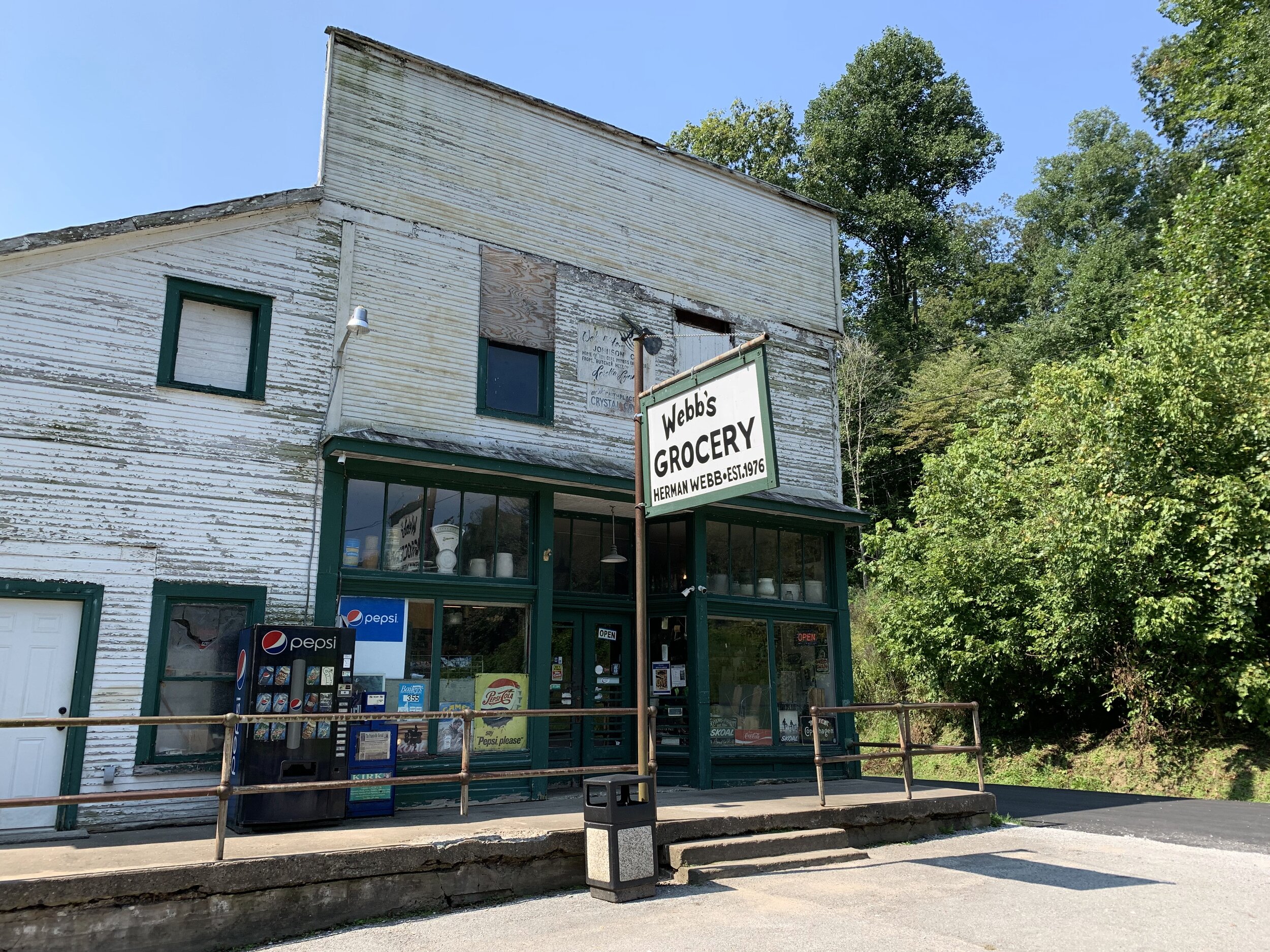
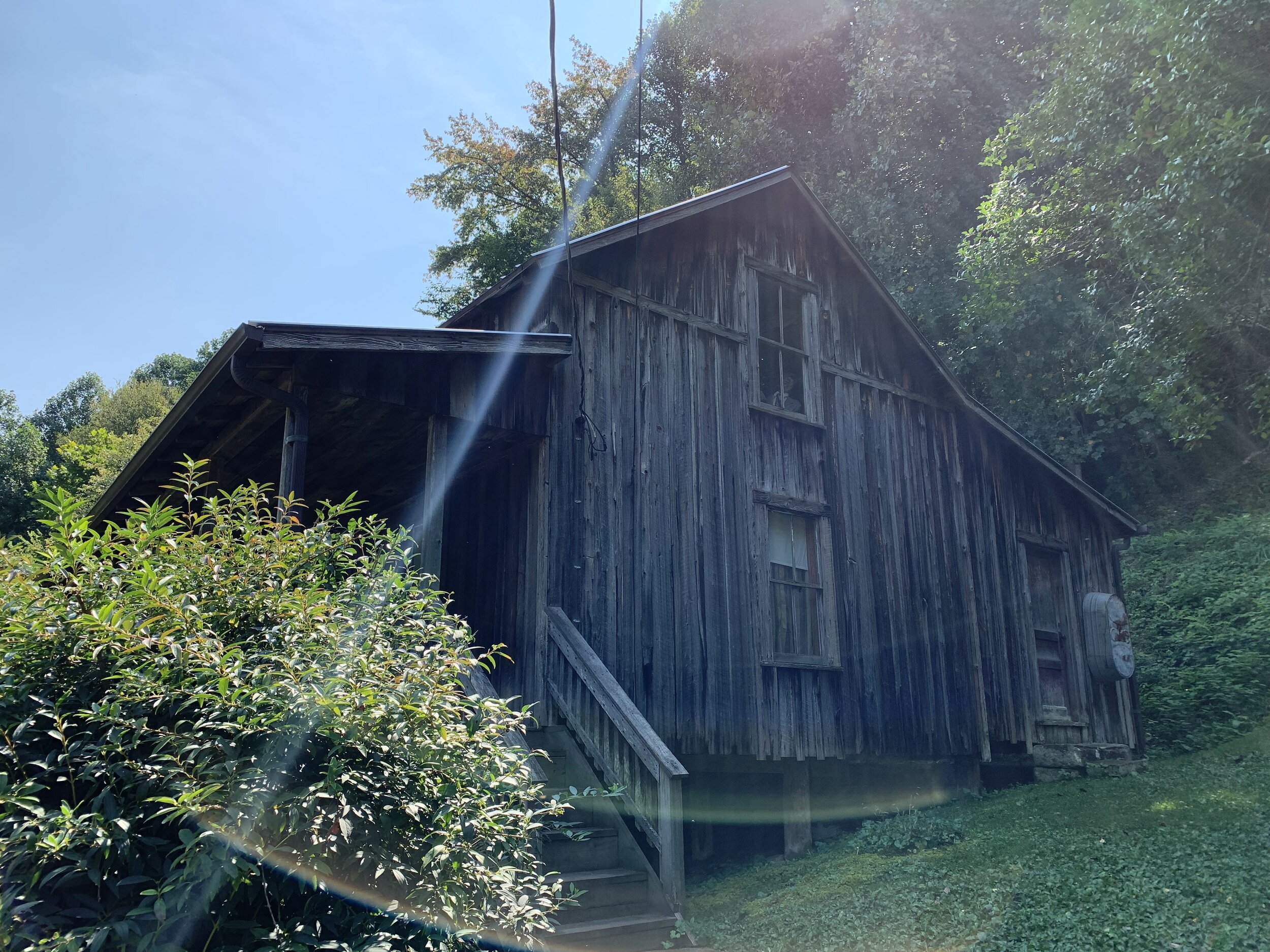

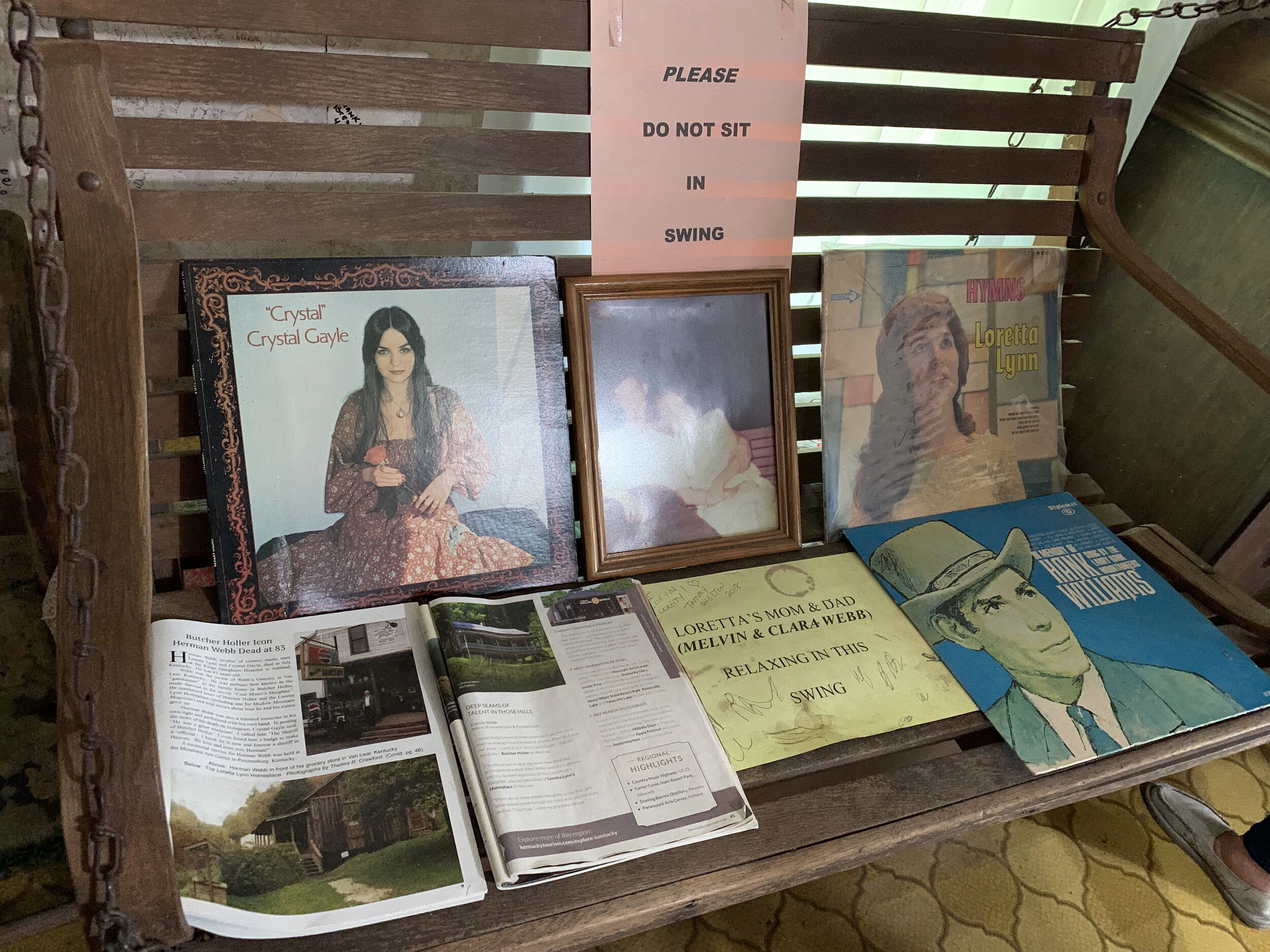
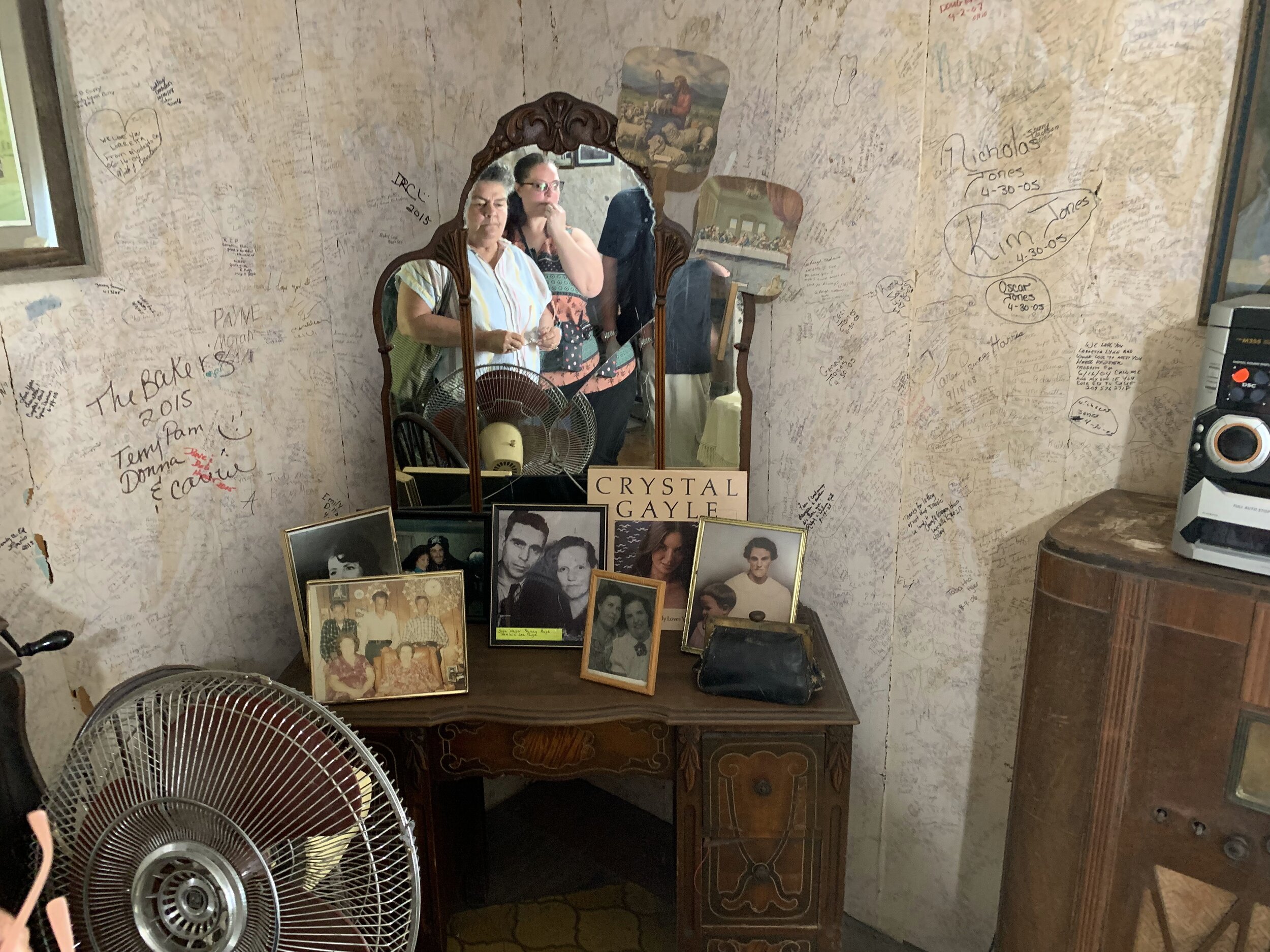
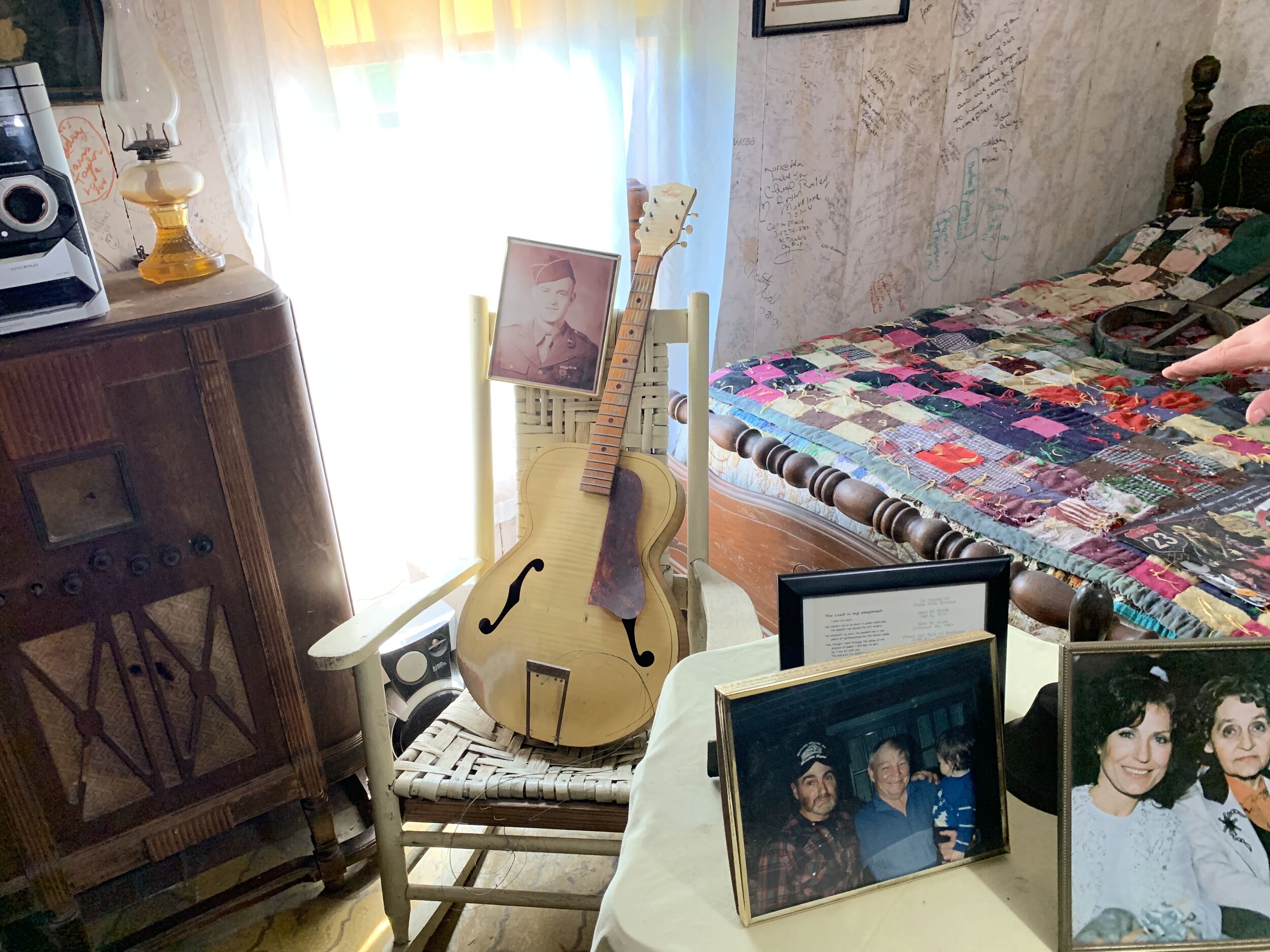
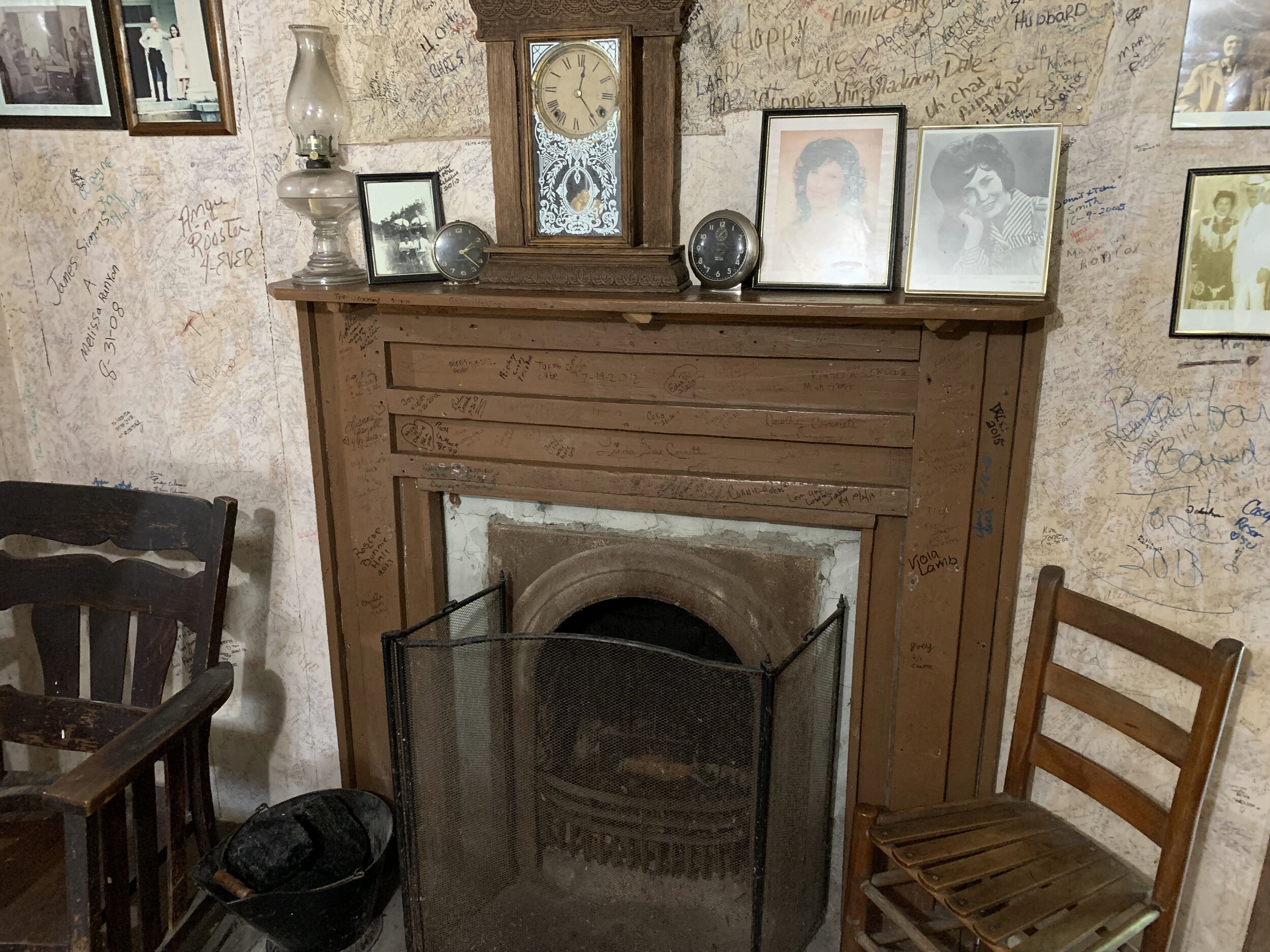
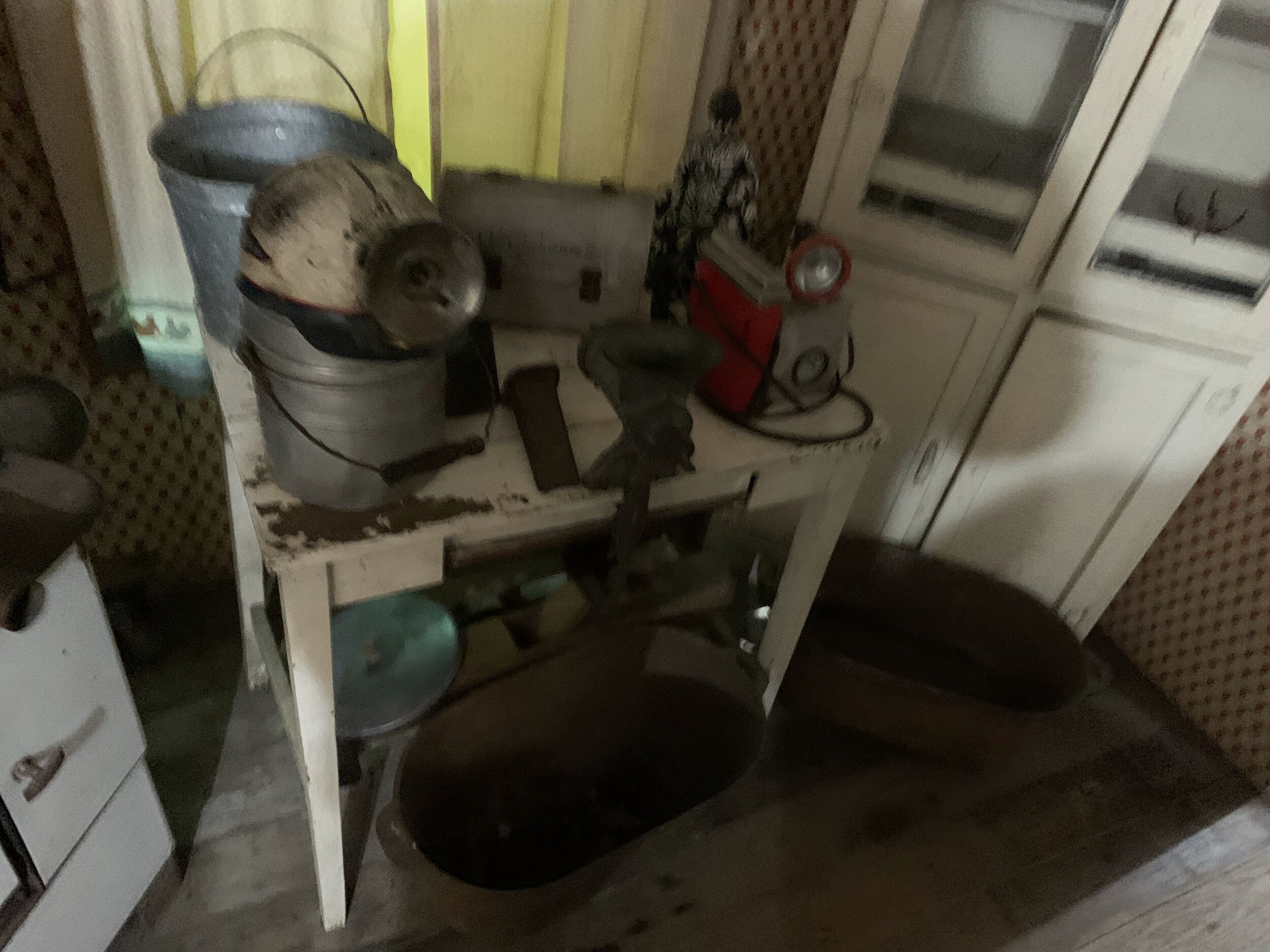
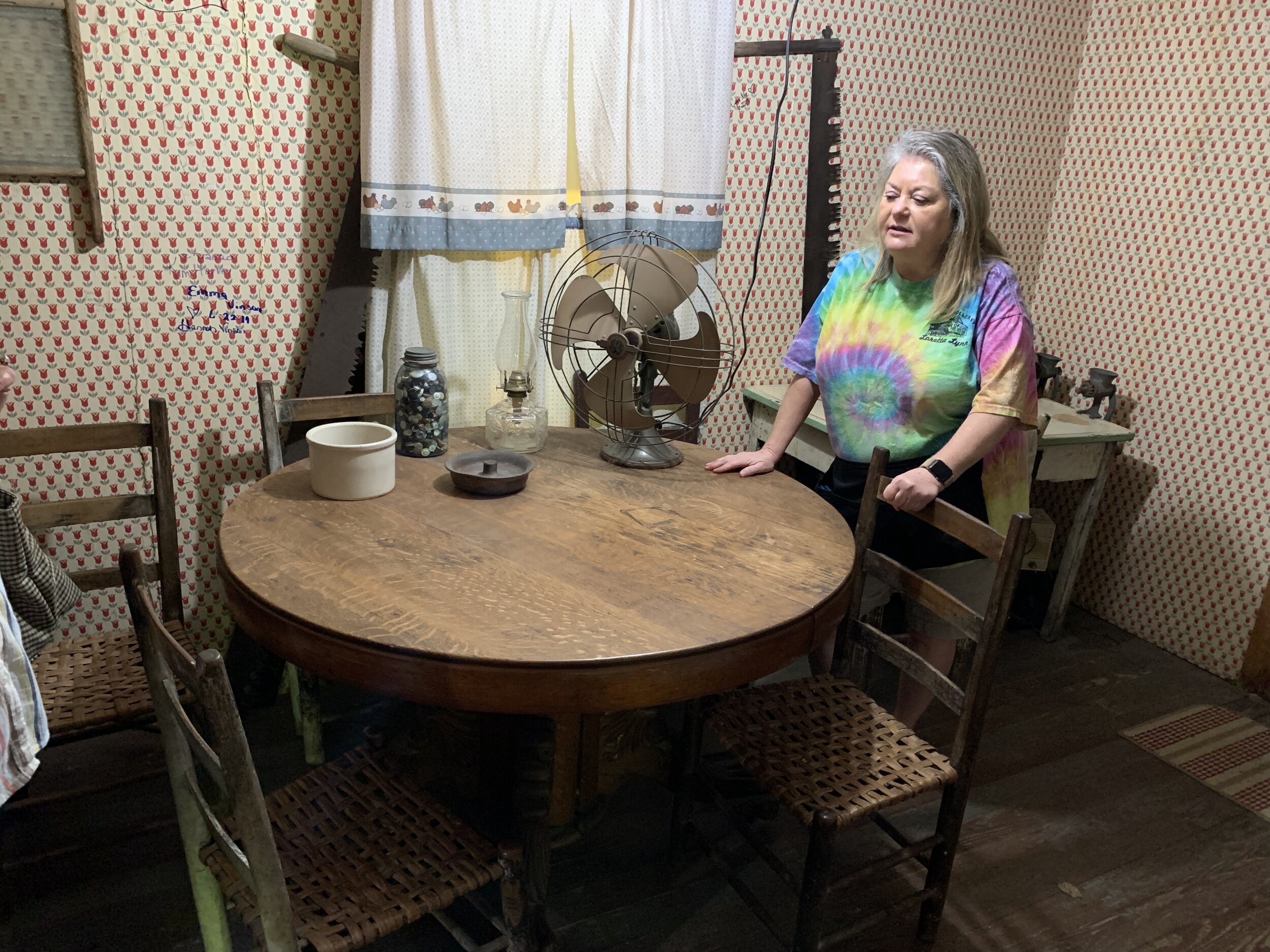

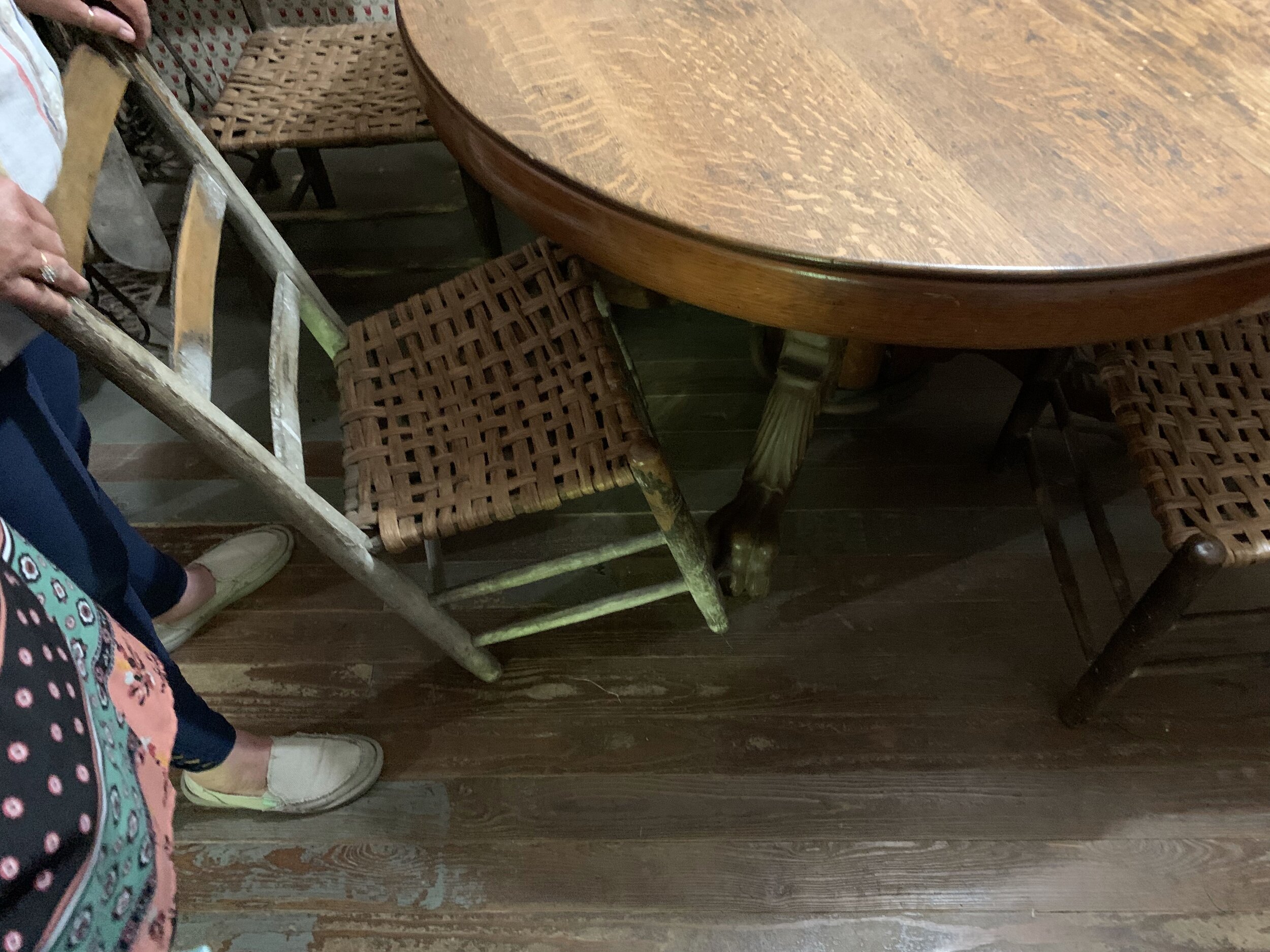
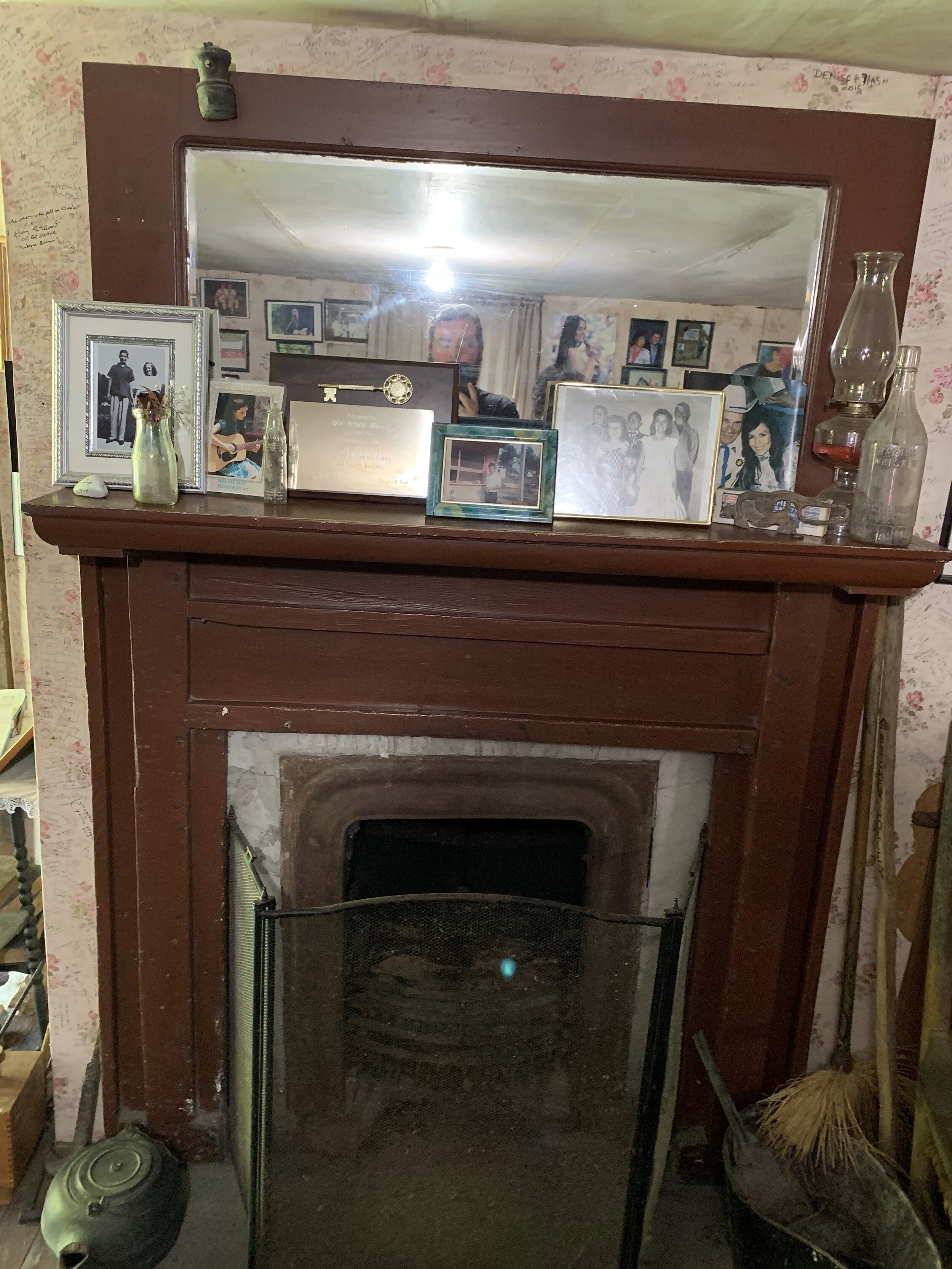
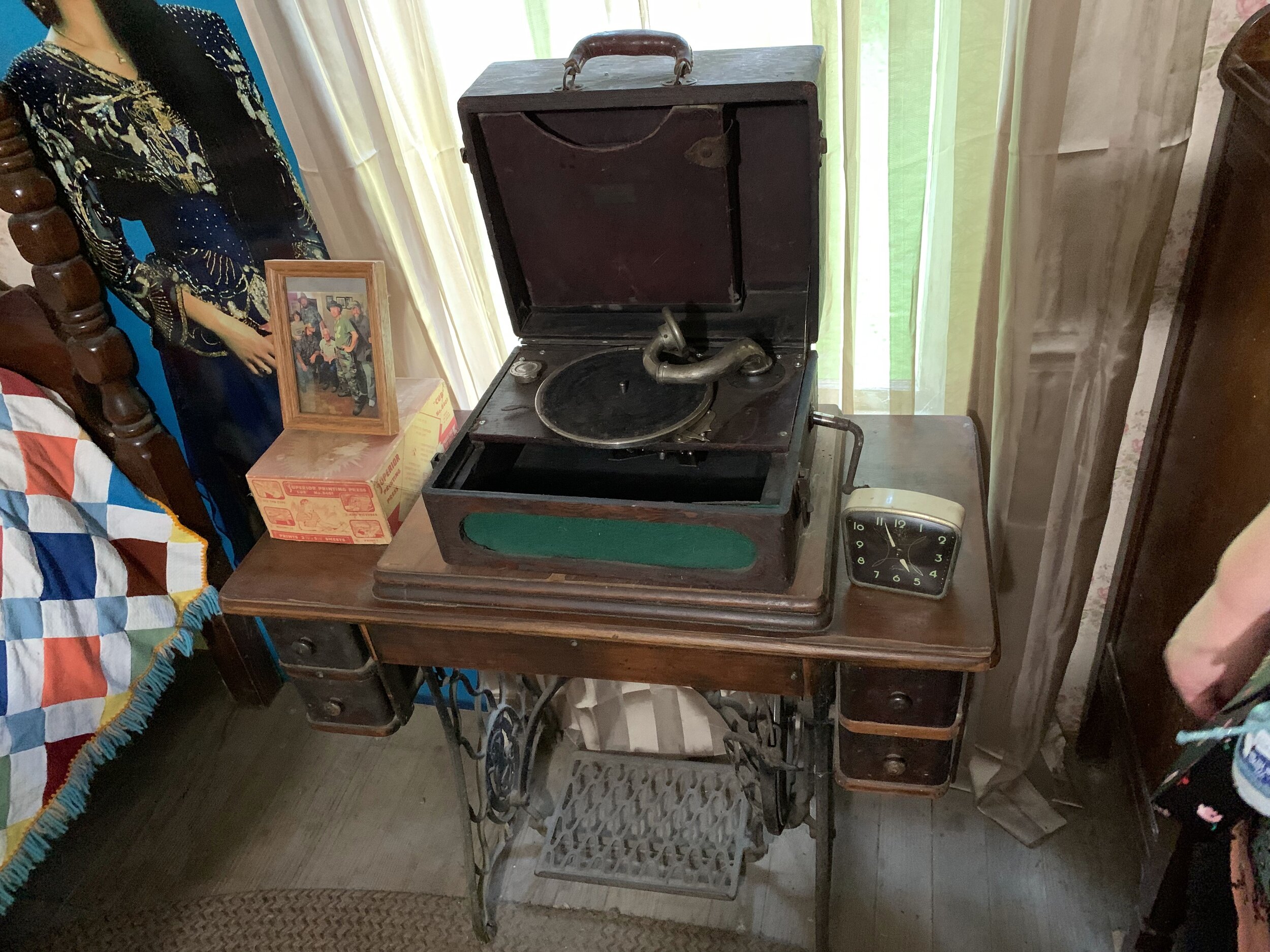
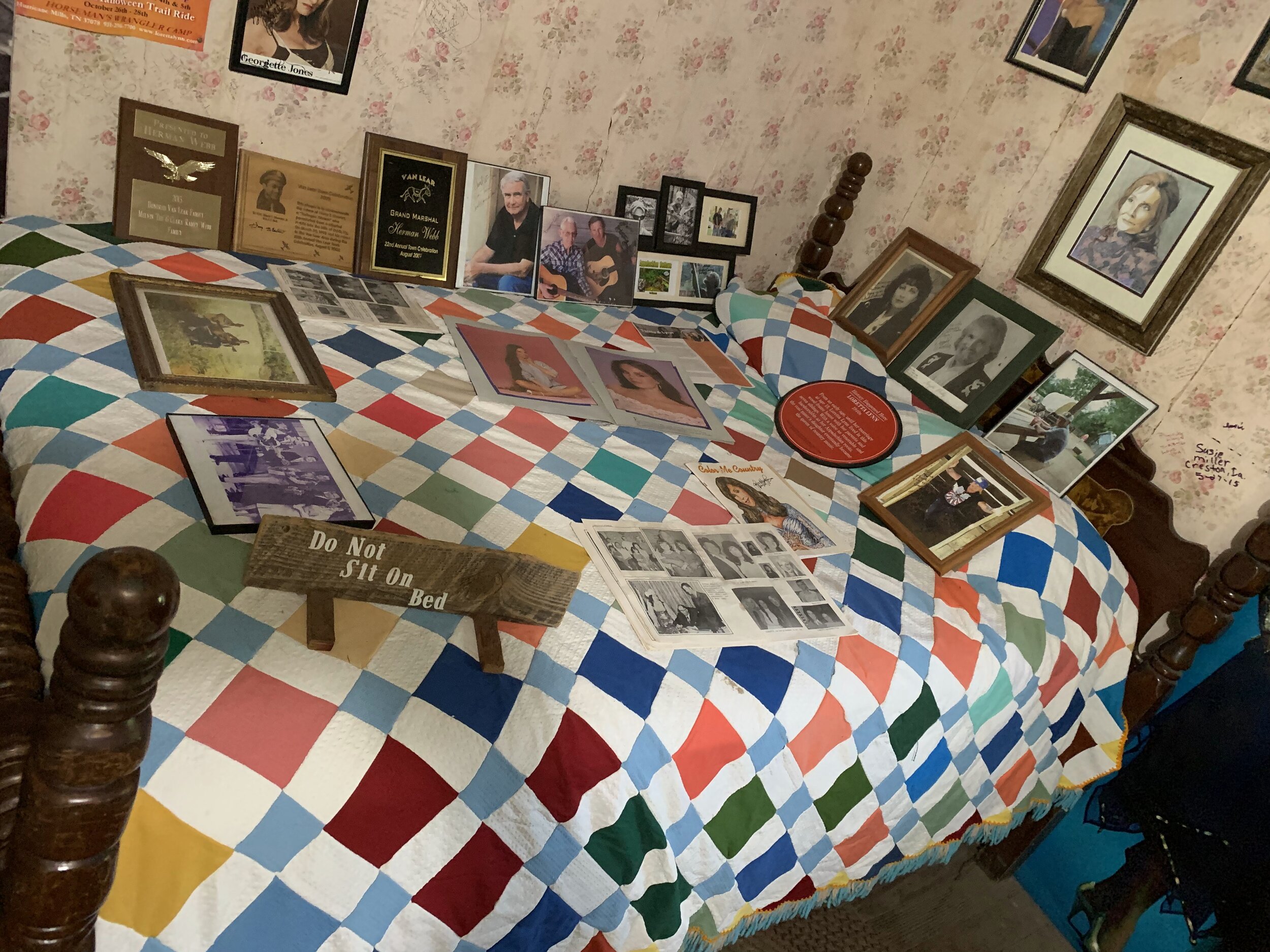
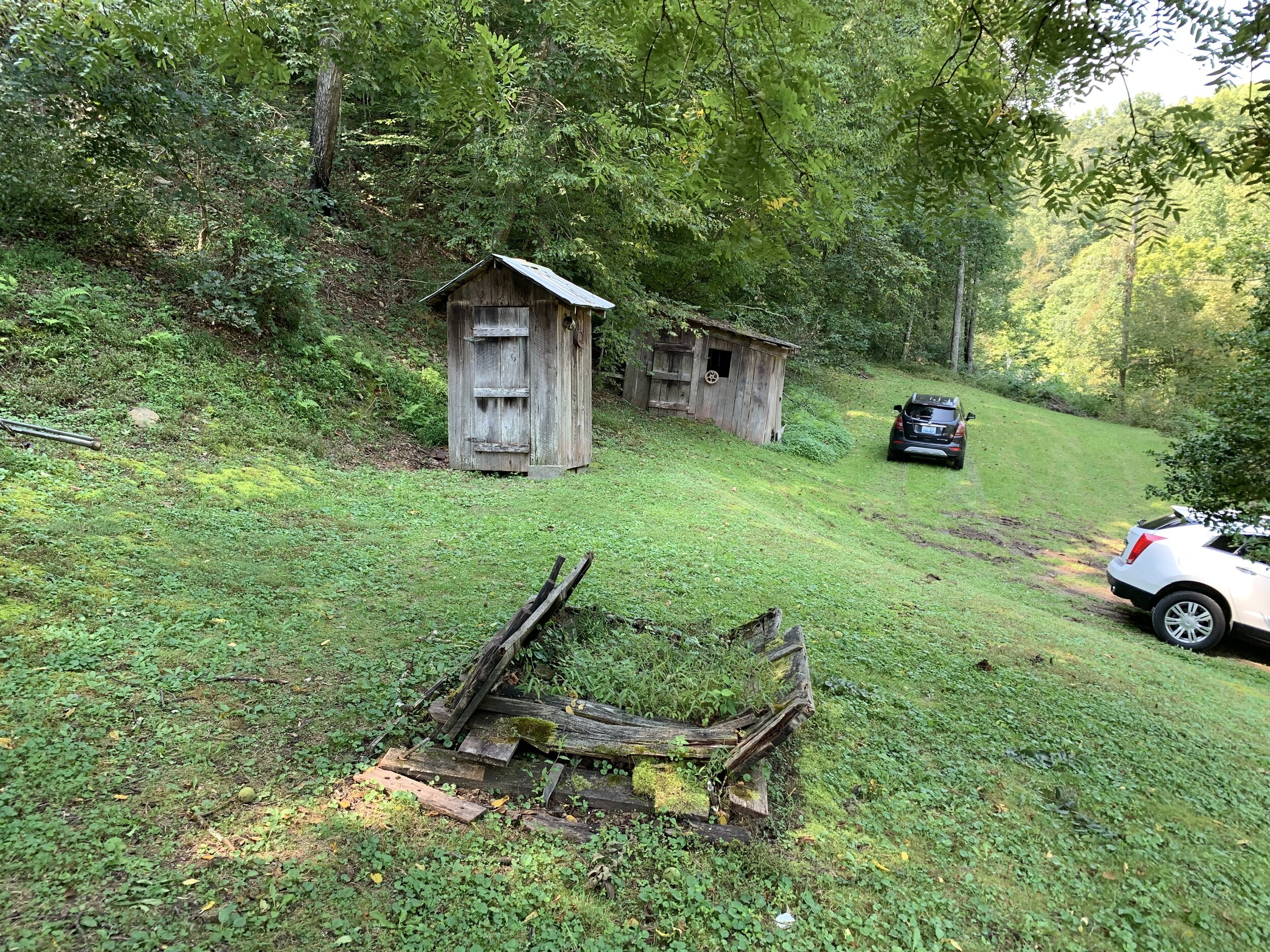
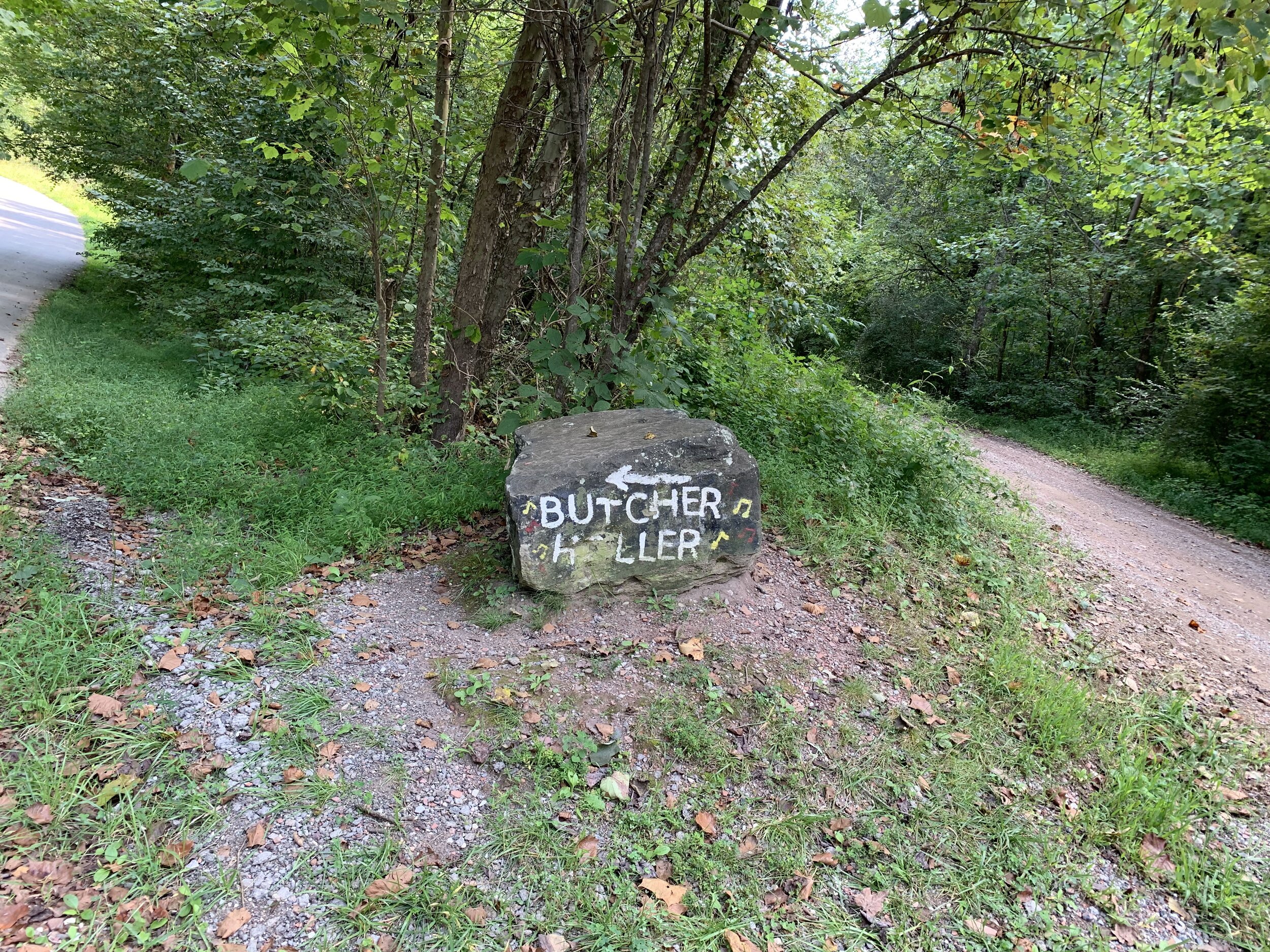
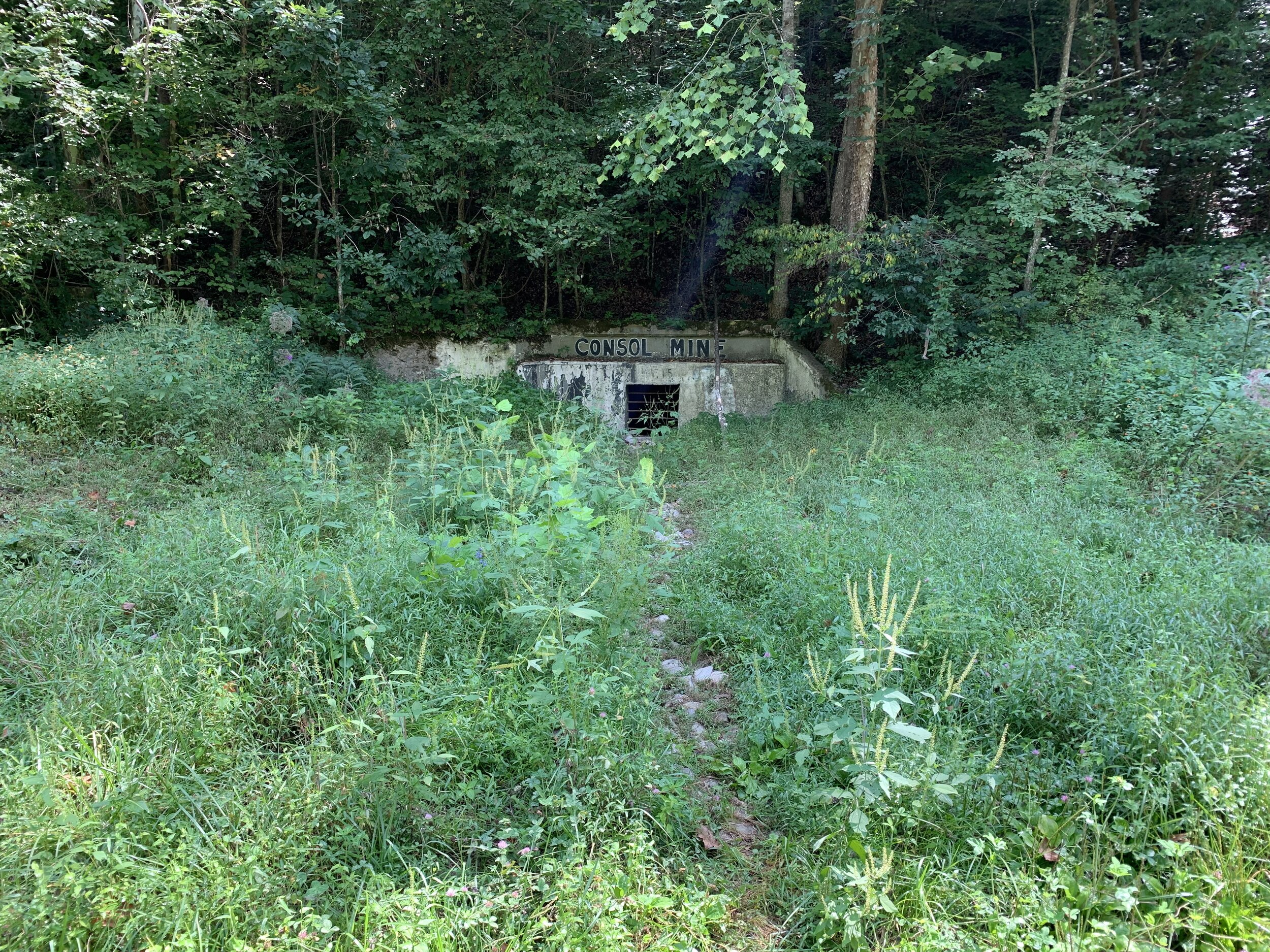
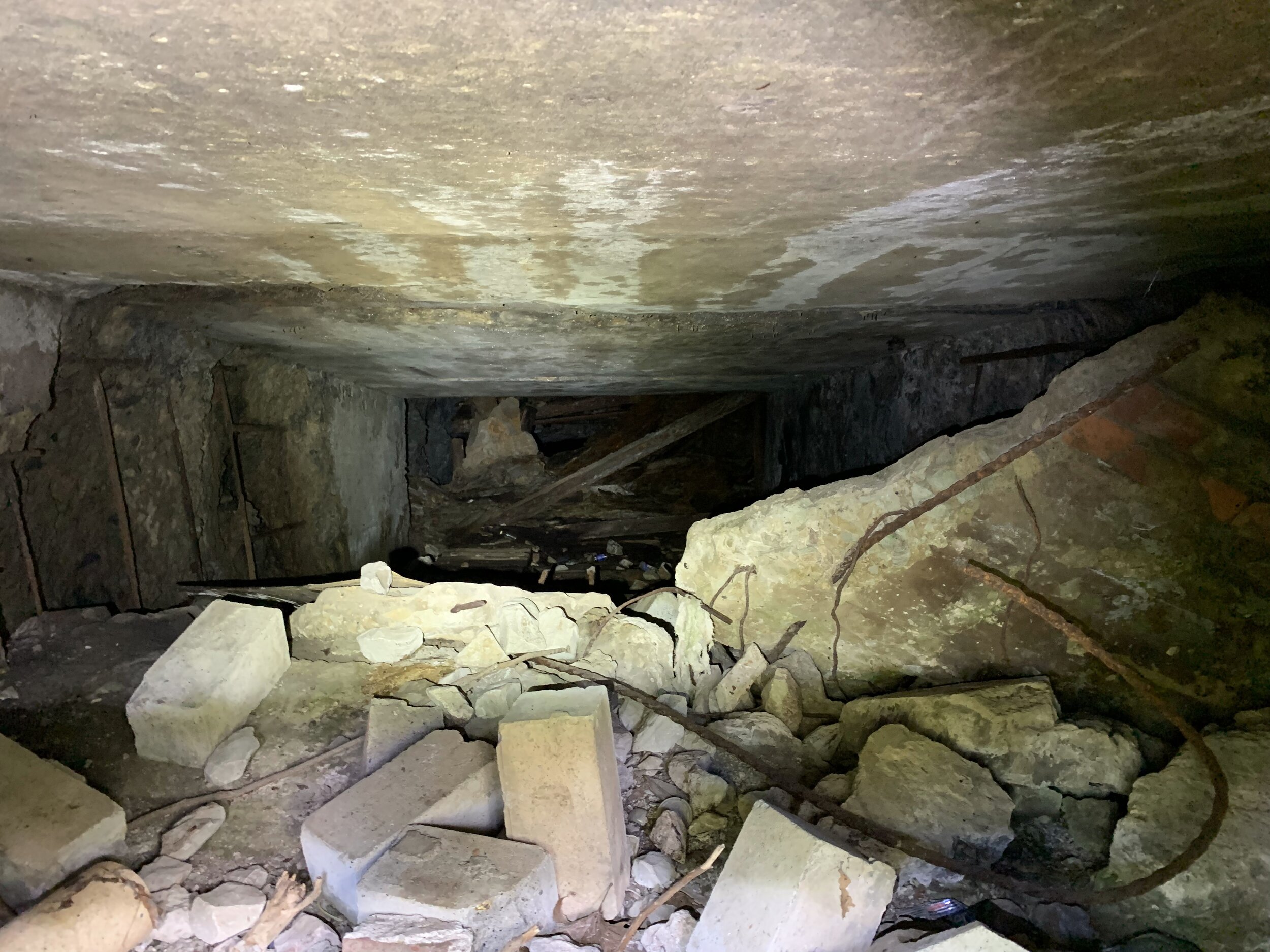
Down a one lane country road just outside of the tiny town of Van Lear Kentucky lies a place that seems completely untouched by the last 60 years of technological advancement. Were it not for the frequent signs steering you towards the area’s main attraction, you could easily mistake it as just another one of the abandoned coal mining towns that are common to the region. To walk the hills of Butcher Holler however, is to set foot on the hallowed ground of country music royalty. In her most famous song Loretta Lynn proudly proclaimed “Well, I was borned a coal miner's daughter. In a cabin, on a hill in Butcher Holler”.
Van Lear itself is a very small town, but by the time you’ve traveled the 2 miles to reach “Webb’s Store” you’ll have a new appreciation for just how isolated some of these rural communities can be. Webb’s is owned and operated by Loretta’s family (Webb being her maiden name). The store does sell the basic staples you would expect at most rural grocery stores like flour, sugar, milk, etc, but it primarily serves as a gift-shop of sorts for the Butcher Holler experience. Here you can talk to some of Loretta’s nieces and nephews, and pick up a souvenir t-shirt or coffee cup to commemorate your trip.
After taking in the delightfully frozen-in-time store, you can proceed down the road and officially enter Butcher Holler. Shortly after taking the fork in the road to enter the Holler, you will drive by on your right the site of the former coal mine where Loretta’s father made his living. The mine entrance is still clearly visible from the road, and can be reached with only a short walk. The entrance is sealed up with metal bars welded into place, but you can get a good view of the first 20 feet or so of the mine, after which the roof has noticably caved in. If you want to see the full view though, be sure and bring a flashlight.
Just a little ways further down the road you finally come to Loretta Lynn’s original home place. The driveway for the home was easily navigable in our low-profile car, but the parking was extremely limited. It can fit maybe 4-5 cars at most unless you're willing to park in a muddy little field.
Upon our arrival we were greeted on the front porch by Loretta’s niece, who now conducts the tours following the recent passing of her father. She was warm, friendly, and the very definition of southern hospitality. She seemed to have no issues with us walking around the property taking pictures for free, but was quick to offer a tour of the house for only $5 per head.
Entering the house you’re immediately aware of just how small the place is. The largest rooms are maybe 10x10 feet, and the ceiling is maybe 7 feet tall. Each room is packed with Loretta Lynn memorabilia, but the most impressive thing to me was that each room is fully furnished in original family furniture. Loretta’s parents bedroom still has their original bed, and the family radio that was originally battery powered before being upgraded to wired electricity when the Holler finally got power. The kitchen features the family’s original dining table (ornately carved, and missing a few table leaves which were transformed into the fireplace mantel). One can also see the family’s washing machine which began life as a gasoline-powered unit, before being converted to electric. Thankfully our amazing tour guide was just as knowledgeable about the family’s history as she was about Loretta’s musical accomplishments.
For me, this was honestly the most amazing part of the visit. I’m not a huge fan of Loretta’s music, but have seen her biopic enough that it was “cool” to see the real-life places from the movie. But the real value of the Lynn homeplace is that it is a remarkably well preserved museum to a time and place that simply doesn’t exist anymore. If you took away all of the pictures/posters/albums specific to the family’s most famous daughter, you would fully expect Loretta’s father to walk through the front door after his long shift at the local coal mine. It’s easy to see and understand the struggles and realities of a large family trying to tame a harsh land with almost no resources.
If you’re a fan of old school country music, Butcher Holler is obviously as much of a destination as Graceland is for Elvis fans. If you’re a student of history, or even the least bit interested in catching a glimpse of life in a different time and place, then the Lynn homeplace should be just as high on your list.
Want to Experience this Adventure for Yourself?
Webb's Store: 1917 Millers Creek Rd, Van Lear, KY 41265
Loretta Lynn Homeplace: 37.786126861958145, -82.70452504063128
Dixie Chili

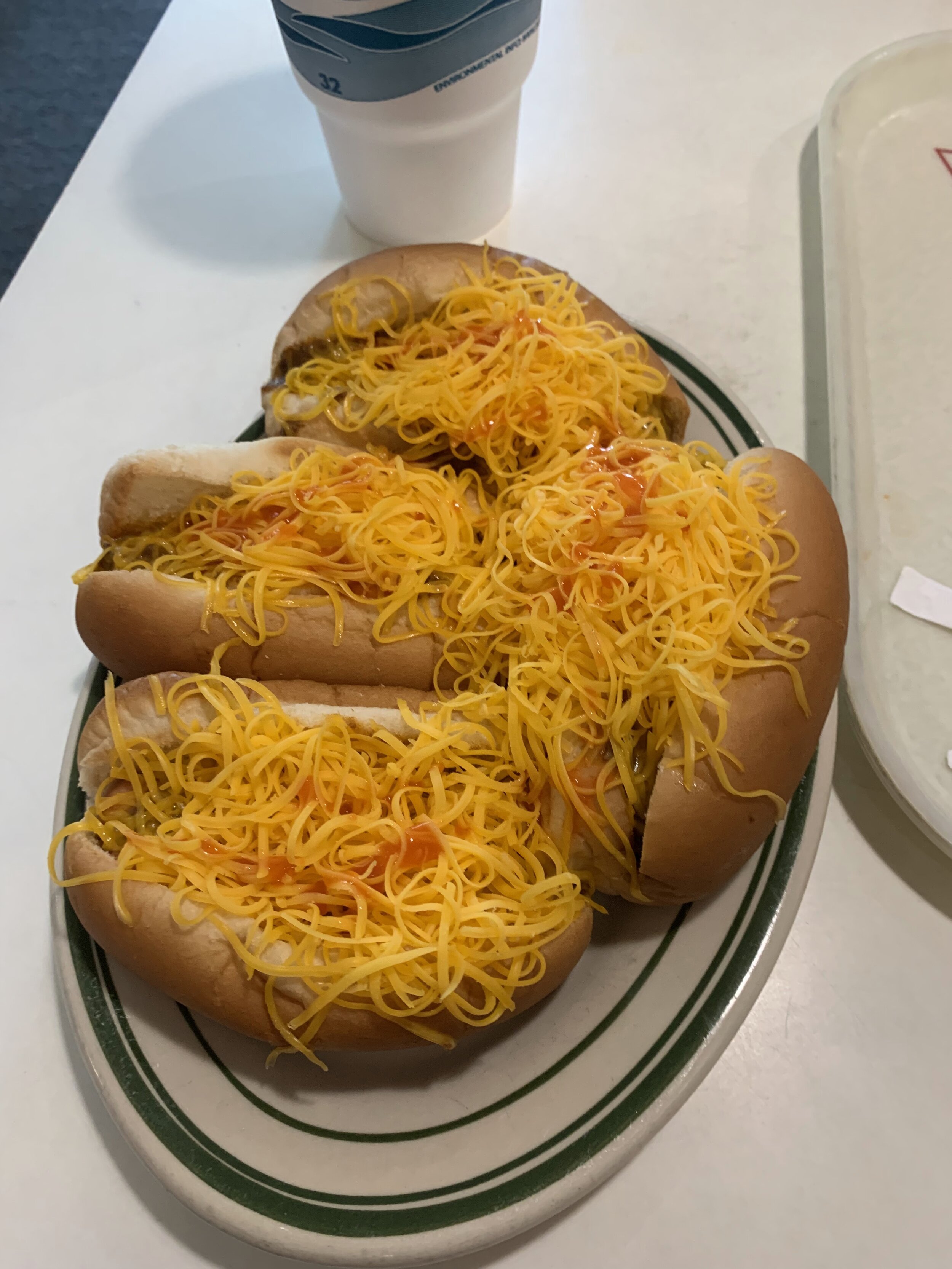
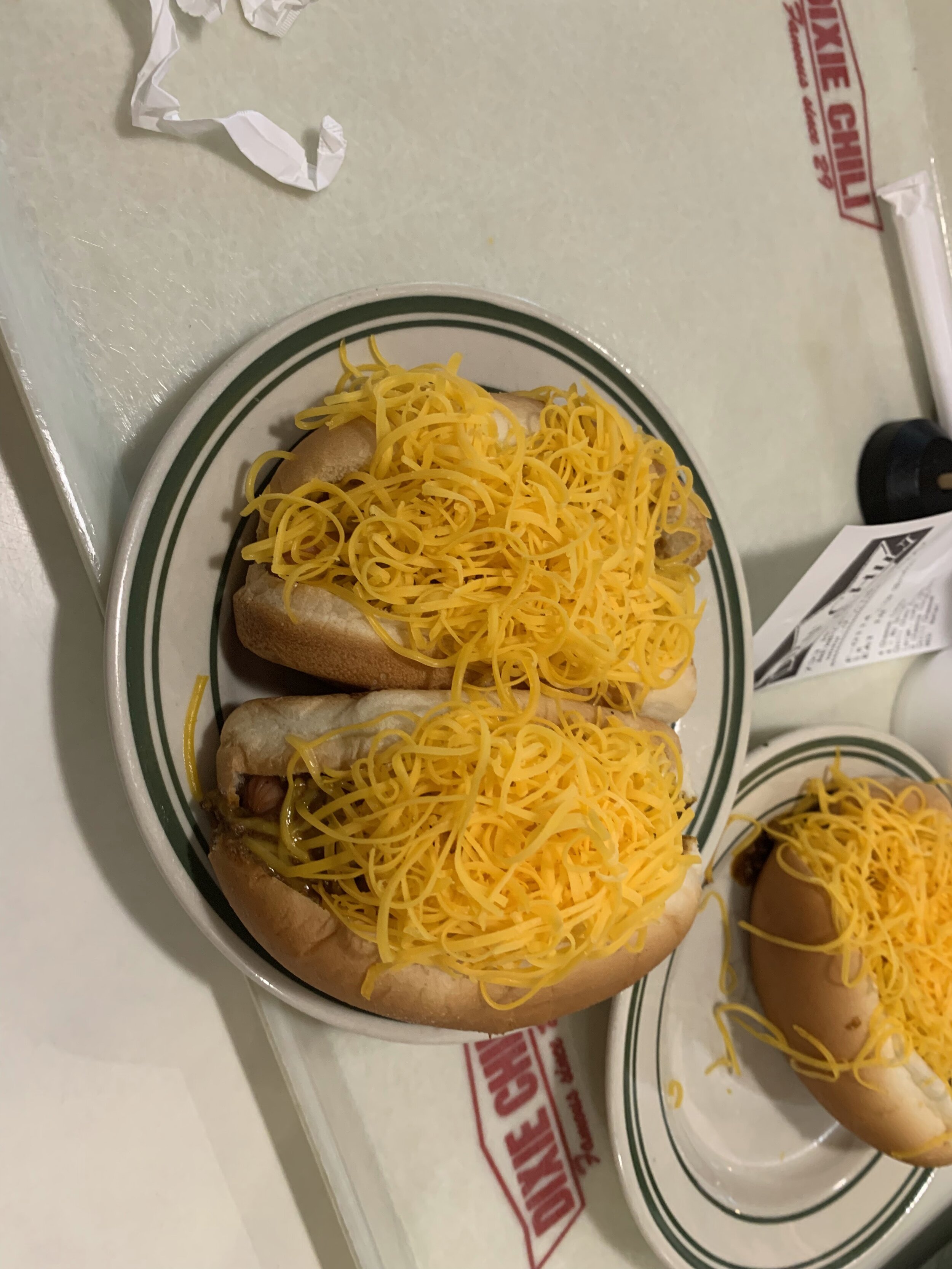
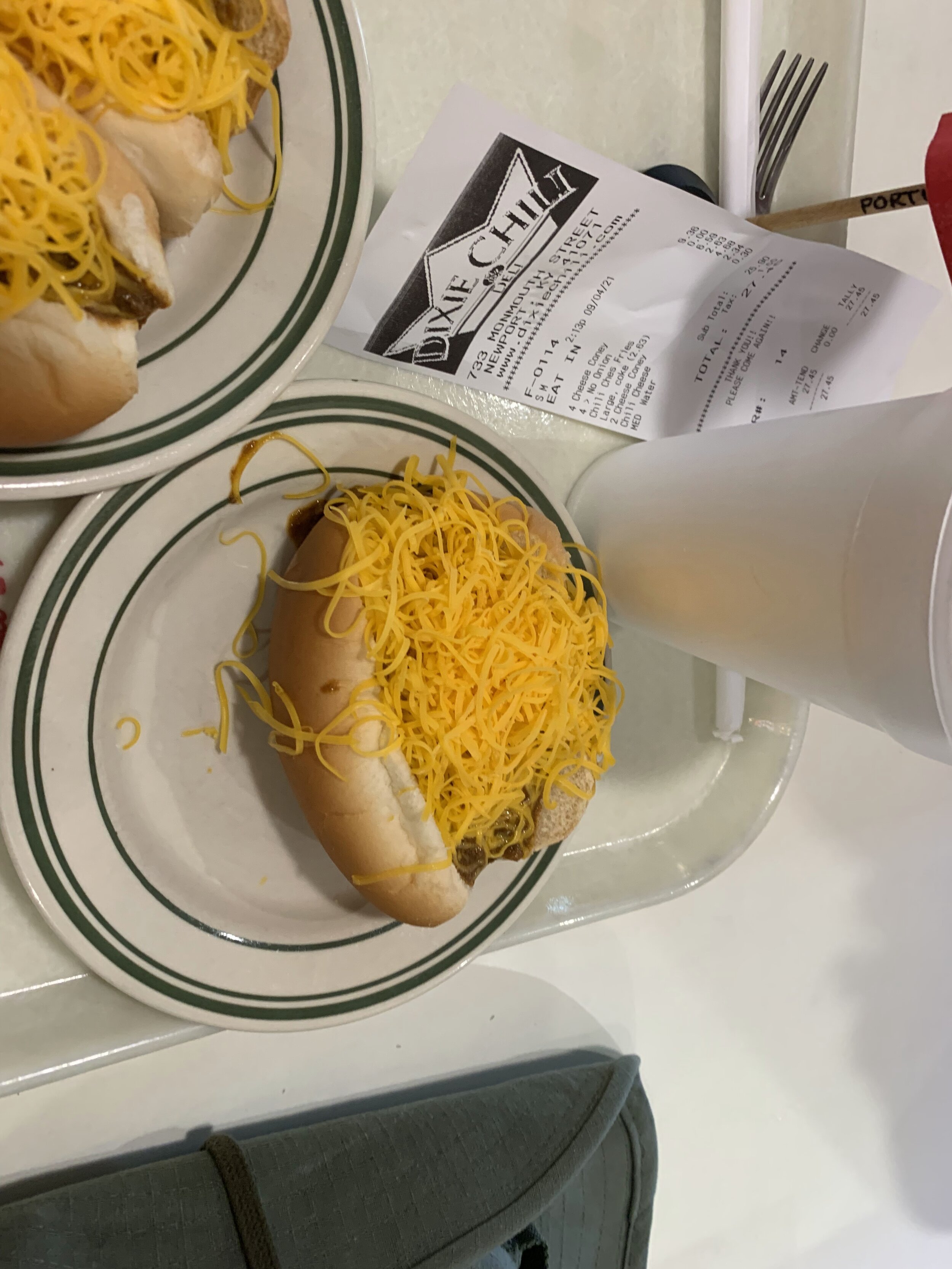

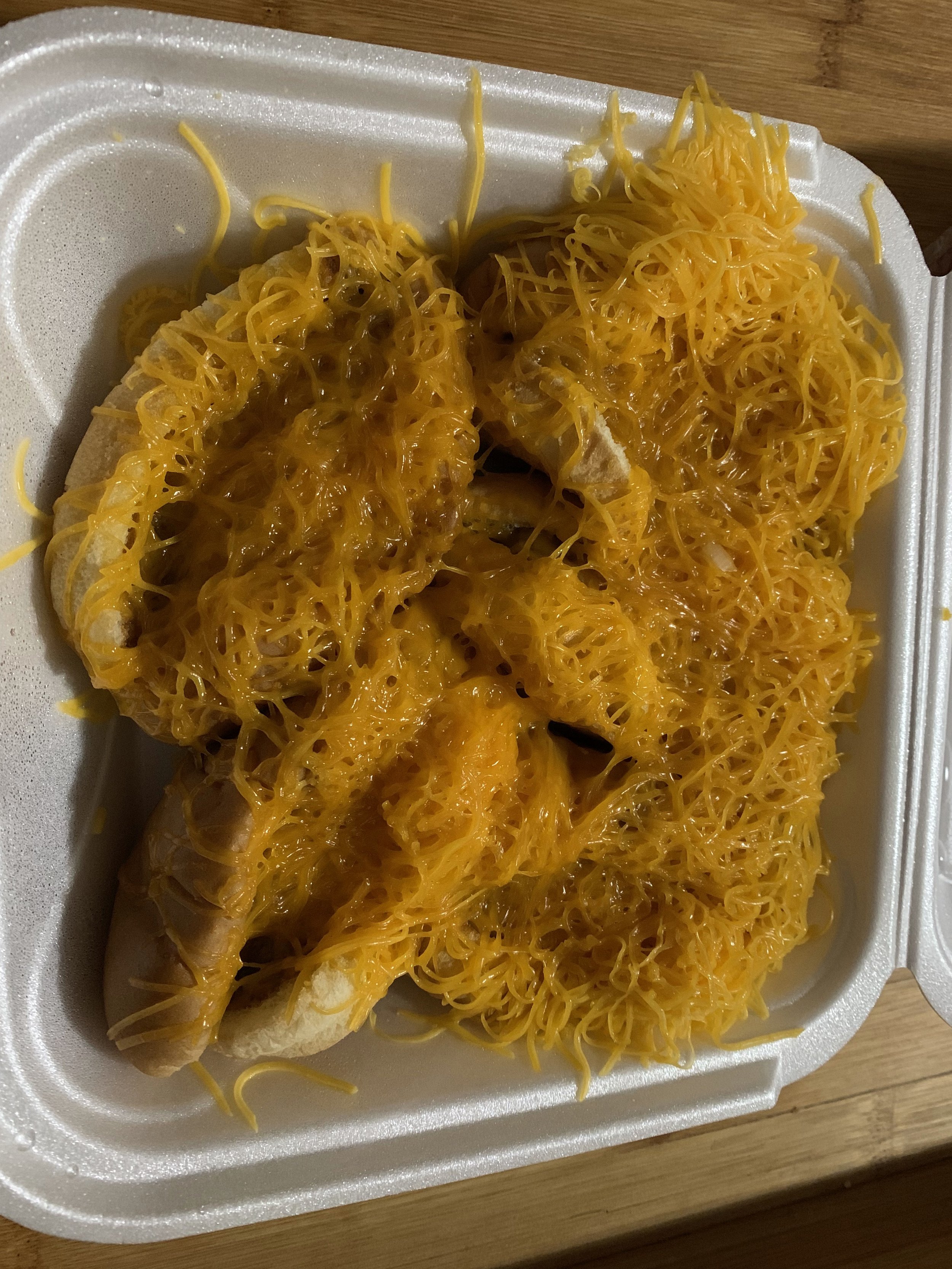
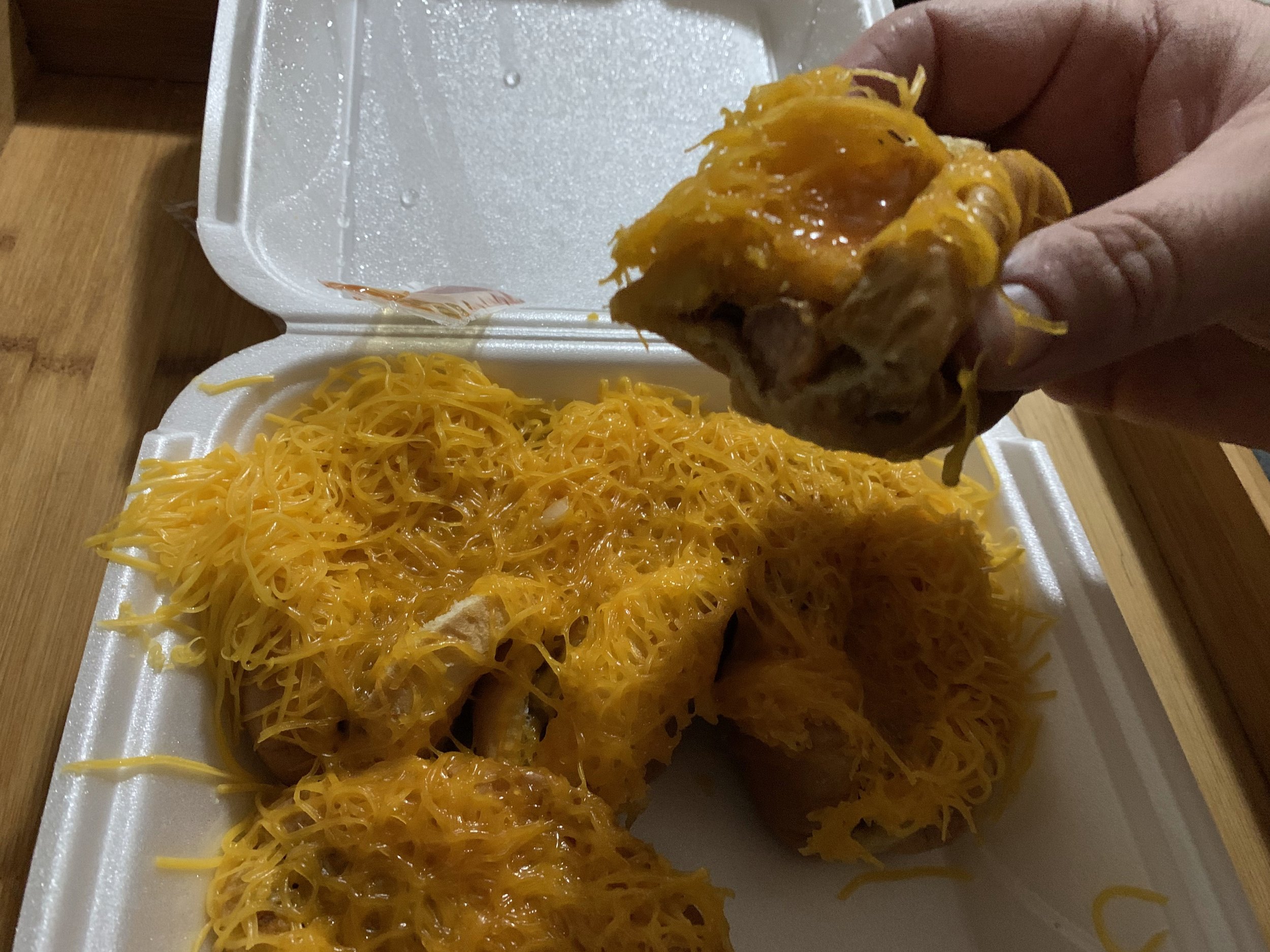
Walking down Monmouth Street in New Port Kentucky you might easily think you've slipped into a time warp. Nestled among the vibrant and freshly renovated buildings sits a perfect little chili joint that looks almost entirely unchanged since it opened 75 years ago. Opened by Greek immigrant Nicholas Sarakatsannis and still owned by 2 of his sons to this day, Dixie Chili is arguably the definitive Cincinnati style Coney. Spicy yet sweet, with a clear hint of cinnamon, one taste of this hot dog will leave you with no doubts as to where you are.
Just walking up to the front entrance, you can feel the history emanating from the building. Walk through the door, and you know that you’ll find yourself transported back several decades. The basic layout is clearly from a bygone era. After placing your order you're issued a tray. You then slide it down past the stations where your drinks and hot dogs order are placed on the tray. The fries are cooked fresh to order, so you’re told to take a seat with your dogs and someone will bring them out to you. After you've finished with your dishes a sweet little old lady appears with a smile and quickly makes them disappear.
The hip/historic vibe is amazing, but the food is just as impressive. A soft steamed bun, a small hotdog, that wonderful sweet/spicy chili, topped with a ton of fresh shredded cheese. I covered these tiny tasty dogs with their in-house hot sauce, and quickly devoured the pile. Like everything else the hot sauce is perfectly balanced with a touch of heat, and a nice vinegary bite that cuts through the strong savory flavors. Next up came the waffle fries. Decent sized, fried to crisp perfection, and then delicately seasoned. They're then drenched in the same home made chili, and an impressive pile of that fresh shredded cheddar cheese.
Having enjoyed a few sodas with lunch I made use the restrooms, and found them to also be frozen in time. Plenty of places these days try to imitate that classic Americana vibe, but Dixie Chili is the real deal. Built in an elegant style and made to stand the test of time, it's done just that.
Dixie Chili is an absolute "must eat" if you find yourself anywhere near the area. It's a culinary original in a style that has been copied to death. If you've ever eaten at a mass-produced Cincinnati chili chain like Gold Star or Skyline, you owe it to yourself to try Dixie Chili and see what it's actually supposed to taste like. One final gift of it's age, located in a town where it's common to pay $5-10 just to park at a restaurant, Dixie has their own dedicated free lot.
Note: Today my work sent me Erlanger Kentucky which has a Dixie Chili location. I included a few pics of my 20 conies, after the 90 minute car ride home. The cheese shrinks a bit from the melt, but they hold up fairly well.
Want to Experience this Adventure for Yourself?
Dixie Chili:
733 Monmouth St, Newport, KY 41071
The Tragic Tale of Floyd Collins




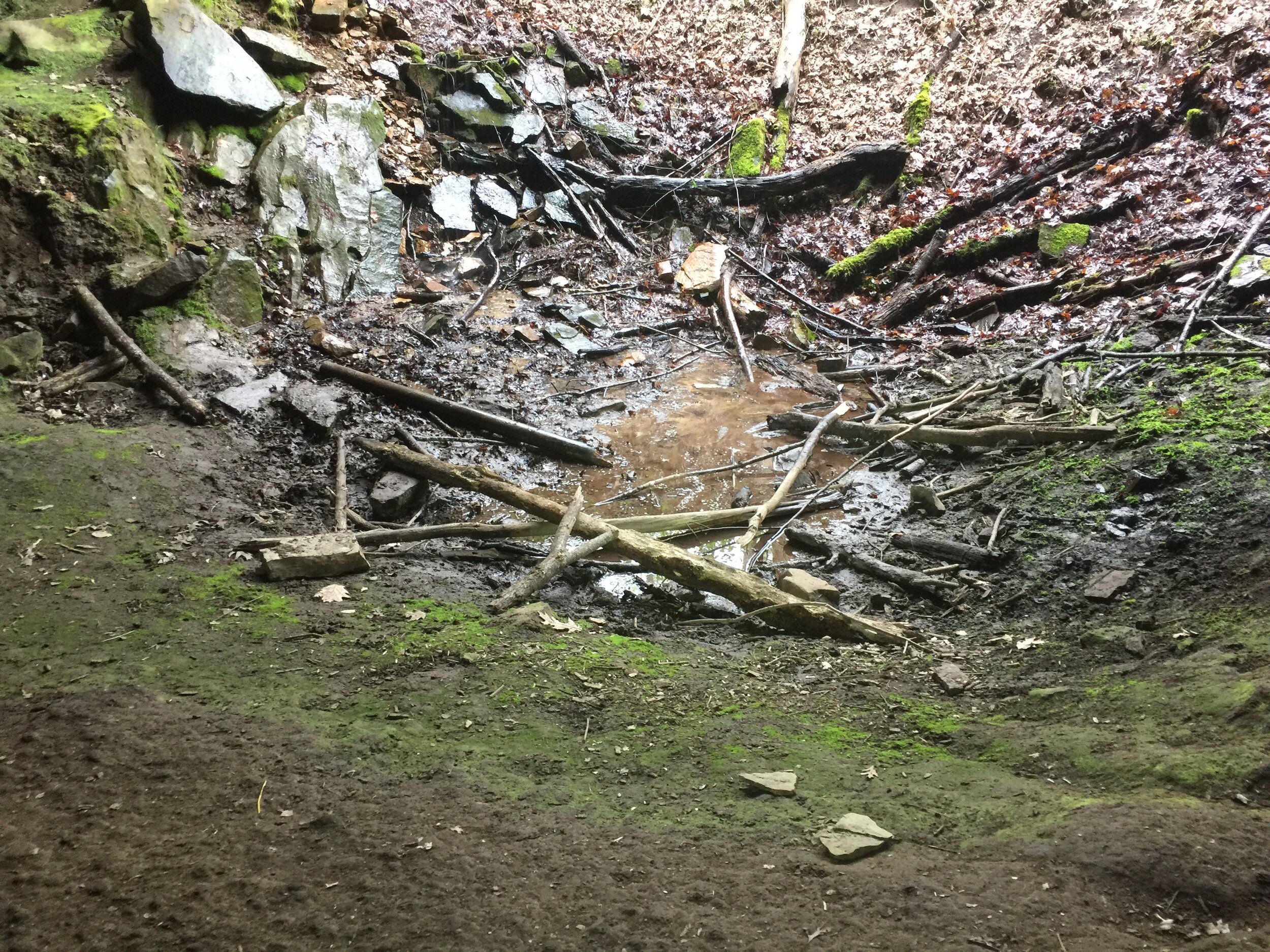
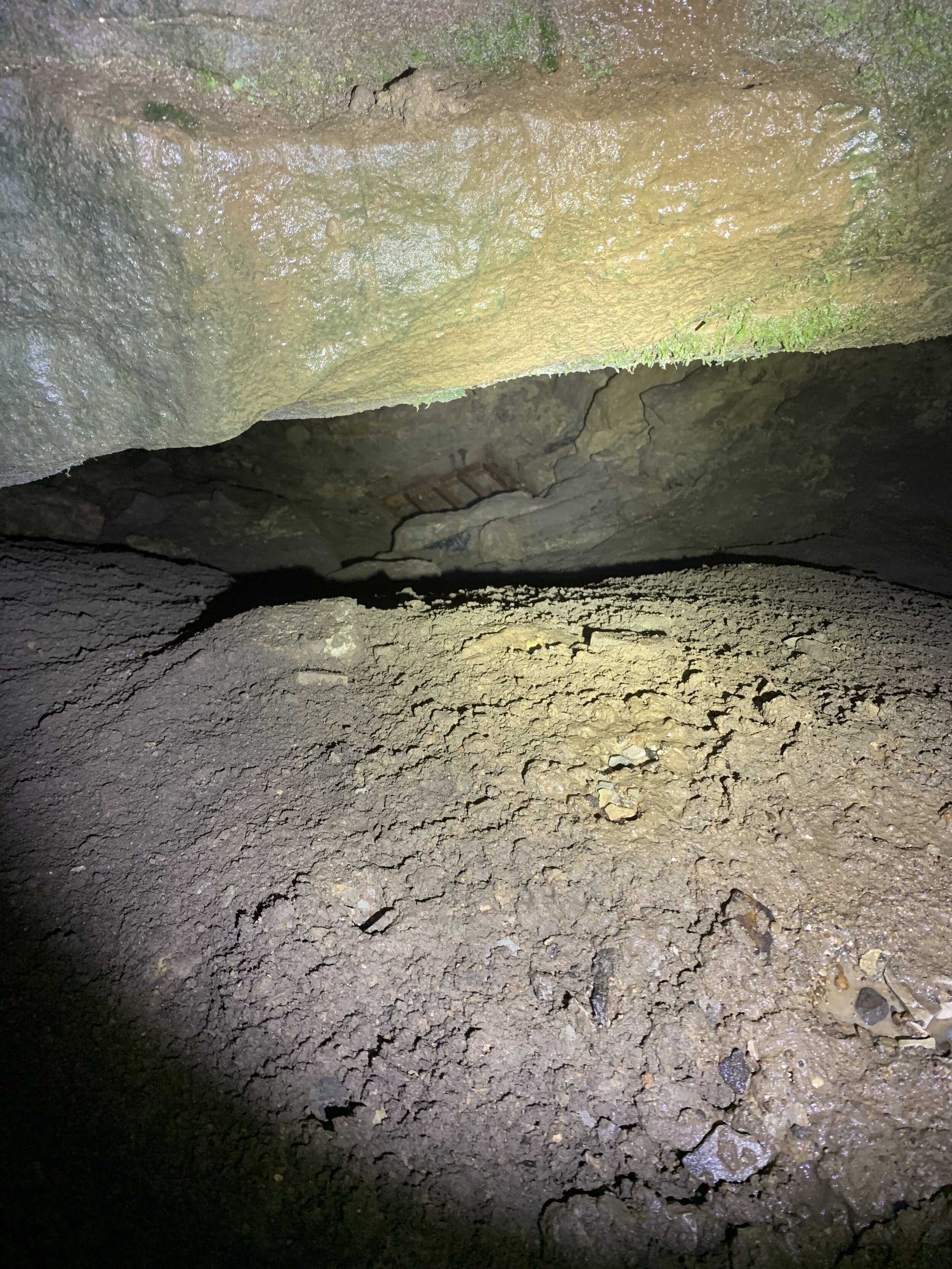
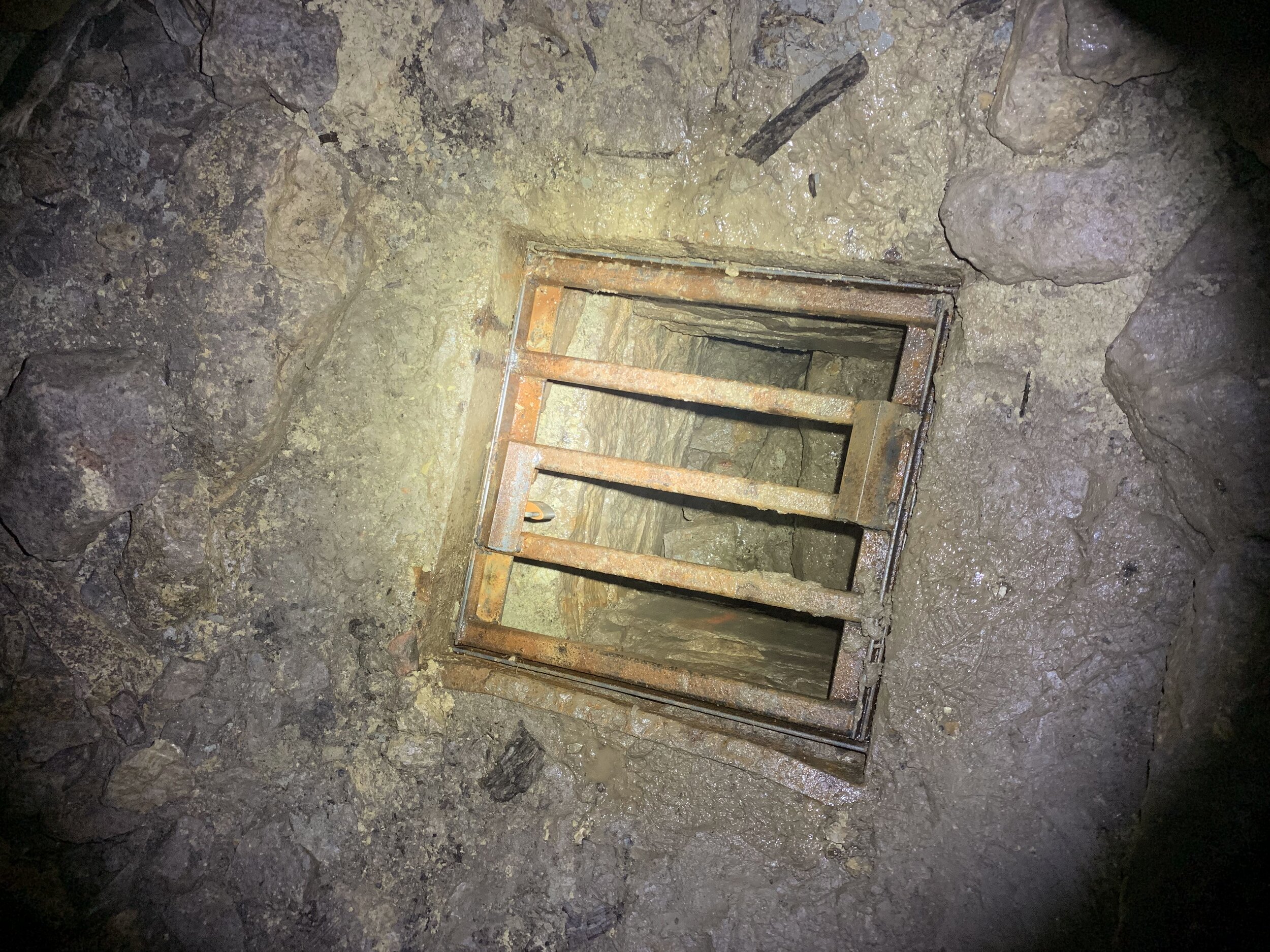
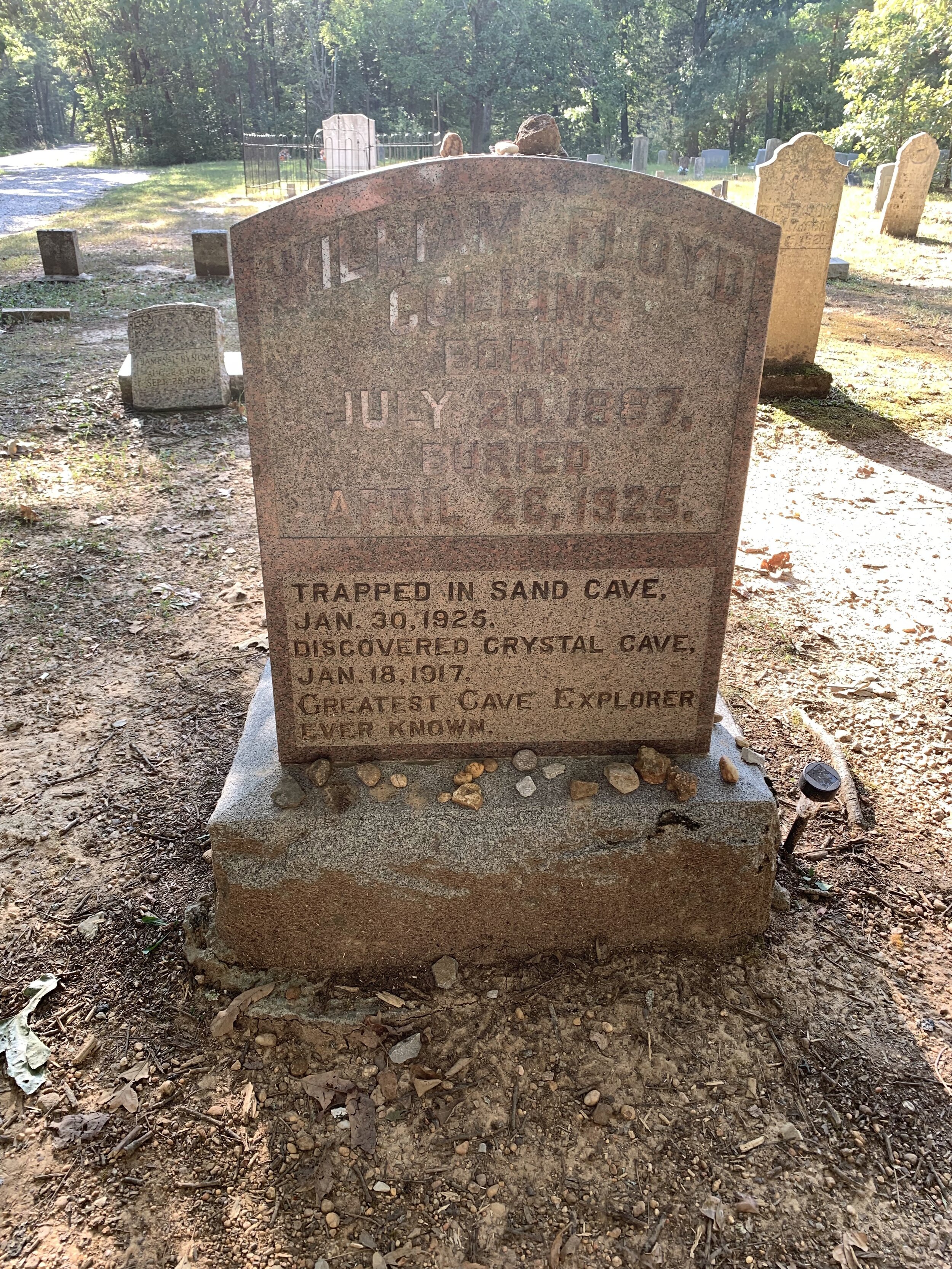
Today the name Floyd Collins has all but faded into history. Unless you live in the heart of Kentucky's cave country odds are that you've never heard of Mr. Collins. For a brief moment in 1925 Floyd's perilous situation focused the attention of the world on rural Cave City Kentucky, ultimately making him the second most covered news story of the 20th century (second only to the kidnapping of the Lindberg Baby). Although his tale ended in tragedy, this attention would ultimately highlight the unique natural wonders of the area, and eventually lead to the founding of Kentucky's only national park.
William Floyd Collins was an amateur cave explorer in Edmundson county Kentucky in the early 1900's. The local economy was almost entirely dependent upon the phenomenal cave system of the area (Mammoth Cave, later proven to be the largest cave system in the world). Floyd's family owned and operated "Crystal Cave", a particularly beautiful cave that was unfortunately a bit too far off the beaten path. During this era of the so-called "Kentucky Cave Wars" cave operators were notoriously cut throat in stealing each other's business. With the entire area serviced by a single country road, caves nearer to the main roads would often put up signs claiming to be their more grand and famous neighbors from further down the road. This meant that location was key to securing customers, and Crystal Cave was located at virtually the end of the road.
In search of a new cave in more prime real estate, Floyd struck a deal with another landowner whose property contained "Sand Cave". Although it was much smaller, Sand Cave was in an ideal location not too far from town. To pursue Sand Cave Floyd first had to use dynamite to open up the entrance, and then spent days crawling through tiny unstable passages in search of a larger cave system below.
On January 30th 1925 Floyd finally emerged from this tiny crevice into the large cave system he was searching for (likely an extension of Mammoth Cave, although the dangers of Sand Cave have prevented anyone from proving this). His victory was short lived however, as a fading lantern light forced him to make a hasty exit from the cave. During this scramble back through the tiny passages he managed to dislodge a rock which pinned his leg and prevented him from escaping the cave.
Floyd's friends and family quickly realized what had happened, but the tiny and unstable nature of the passage made it impossible for them reach Floyd's pinned leg. Their calls for help were answered by no less than the Army National Guard. What followed was a weeks long epic attempt to free Floyd from the cave by digging a rescue shaft down and behind his location, in hopes of reaching the trapped leg. The initial media coverage was provided by William Burke "Skeets" Miller, who would be awarded a Pulitzer Prize for the story. Unfortunately this coverage would see thousands of onlookers descend upon the area creating an almost carnival like atmosphere, and possibly interfering with the rescue efforts.
Initially rescuers were able to reach Collins through the cave’s cramped passage to provide food, water, and even heat via an electric light bulb. Unfortunately during the rescue efforts the movement in the tight space combined with heat from all of the rescuers working destabilized the cave enough to collapse the room, severing access to Floyd.
On February 17th the rescuers finally reached Floyd, only to find him dead (estimated to have died 4 days earlier). The further risky effort required to extract the body was deemed unnecessary, and the rescuers sealed their shaft, entombing Floyd's body where it lay. In April of that year Floyd's father decided he couldn't stand the thought of his son laying in this natural grave, and so a successful effort was made to retrieve the body. He was then interred in a plot near his beloved Crystal Cave on the family's property.
Floyd's tragic end and the attention that it had brought to the area greatly increased tourism, and even led to the call that would eventually see the area become Mammoth Cave National Park. This increased traffic made the local cave properties much more valuable, and Floyd's father eventually sold Crystal Cave. The new owners quickly seized upon Floyd's notoriety and exhumed his body, placing it in a glass topped coffin within the cave itself.
As the Cave Wars escalated someone (likely the owner of a rival cave) managed to steal Floyd's body from within the cave. The remains were eventually found abandoned in a nearby field, but the damaged leg that had trapped Floyd deep within Sand Cave had been removed, never to be found.
Eventually the National Park system managed to buy up all of the local caves. With the purchase of the Crystal Cave property the parks system also assumed possession of Floyd's remains. He was then removed from Crystal Cave and reinterred in the cemetery at nearby Mammoth Cave Baptist Church.
If you’re planning a trip to visit the Bluegrass State’s only National Park, you owe it to yourself to stop by and pay your respects to Floyd. A man whose passion for the breath taking beauty of the local caves cost him his life, but in that tragic end ensured that his beloved caves would be shared with the world. Sand Cave where his epic story unfolded is located just outside of the main entrance to the park. Right as you see the big “Mammoth Cave National Park” sign, you’ll also see a small parking lot. Stop here and hike the very short distance to the cave. Floyd’s grave, along with those of several other notable figures from the Cave Wars can be found at the Mammoth Cave Baptist Church cemetery, which is located along a small service road just off the main parking lot of the park visitors center.
Want to Experience This Adventure Yourself?
Mammoth Cave National Park: 1 Visitor Center Parkway Mammoth Cave, KY 42259-0007
Sand Cave: https://goo.gl/maps/WMTKt44uSdrCh8uQ8
Floyd’s Grave: https://goo.gl/maps/BbA4sbALpSCTNYMeA
Trackside
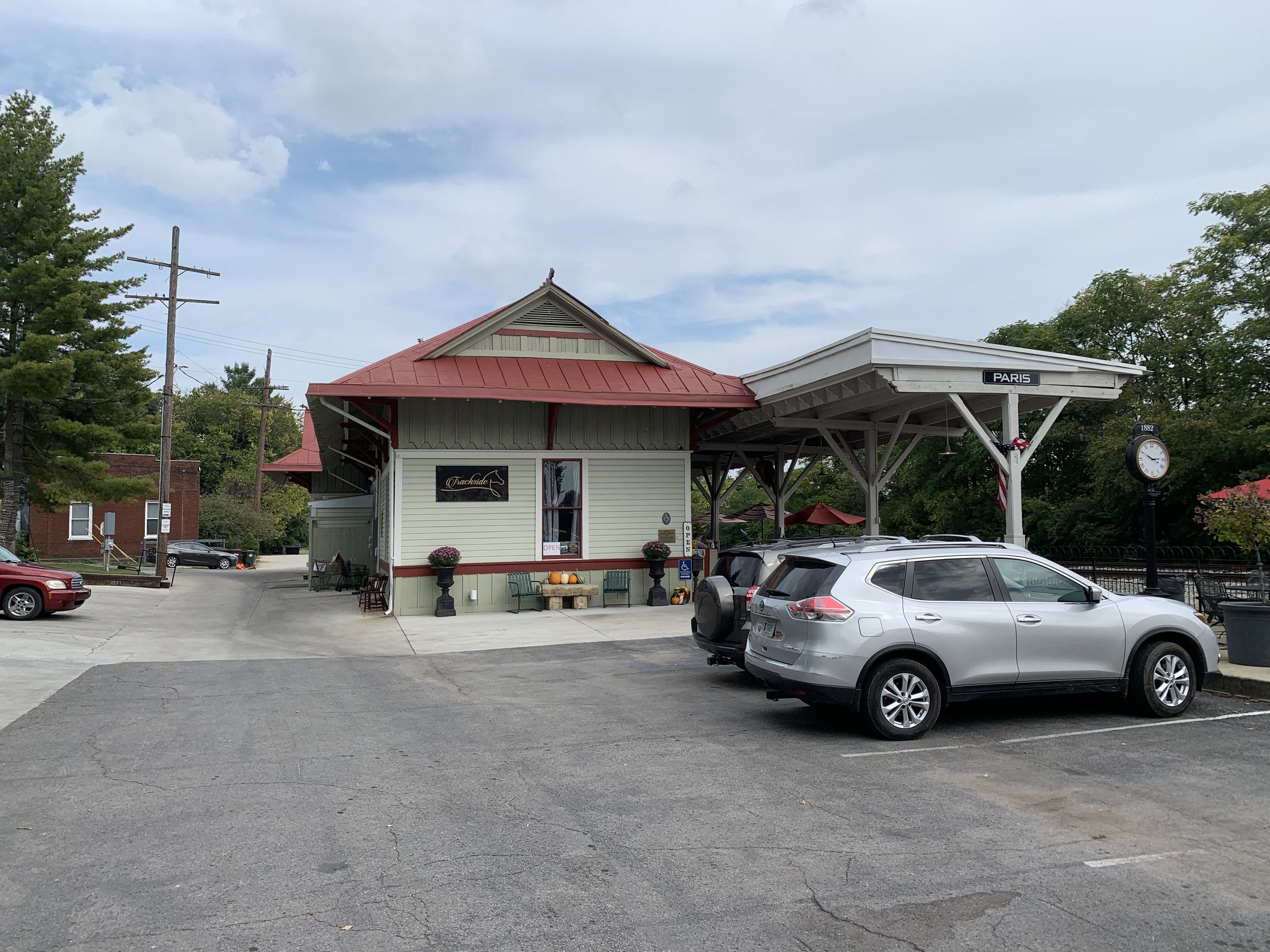
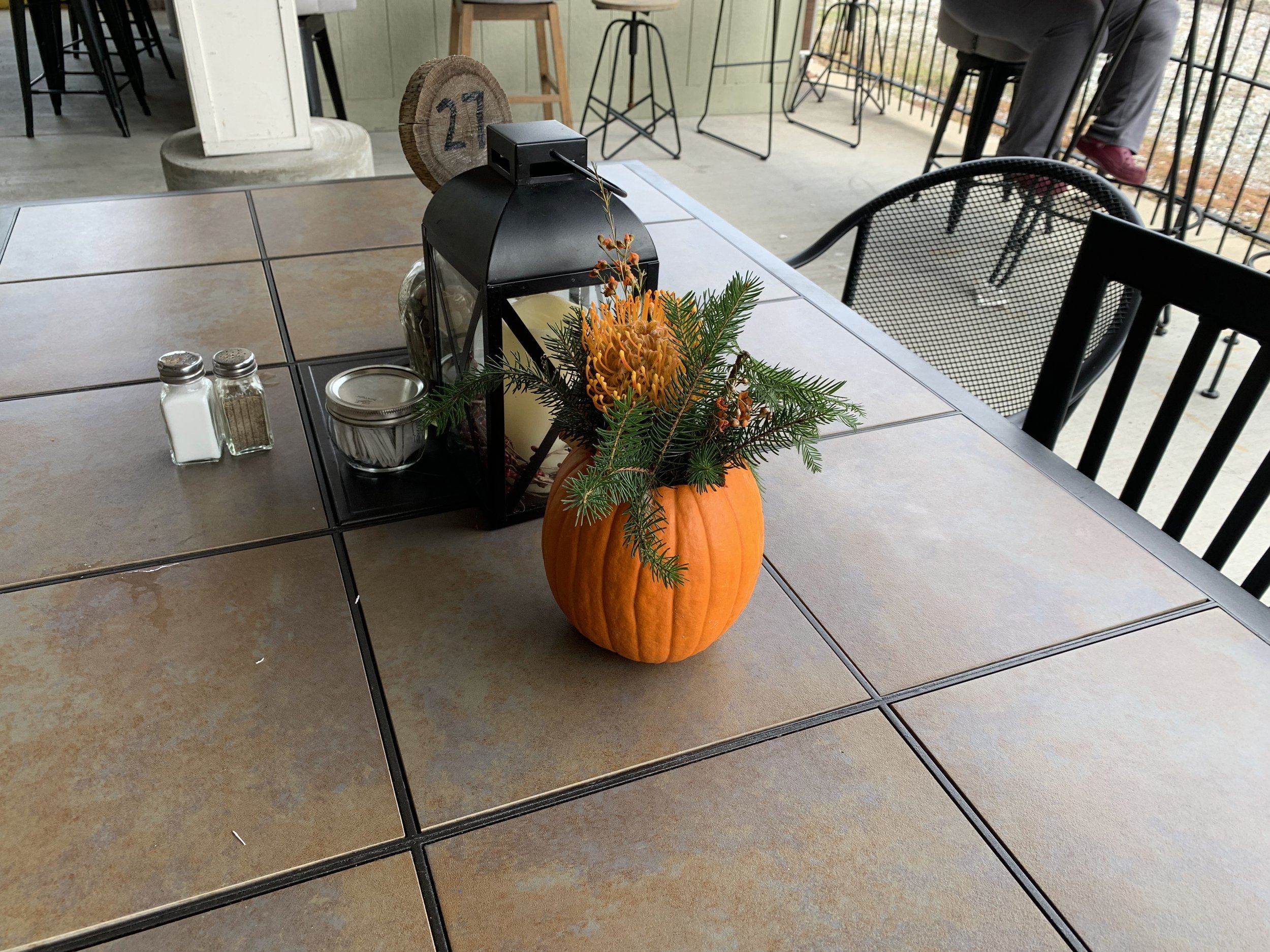
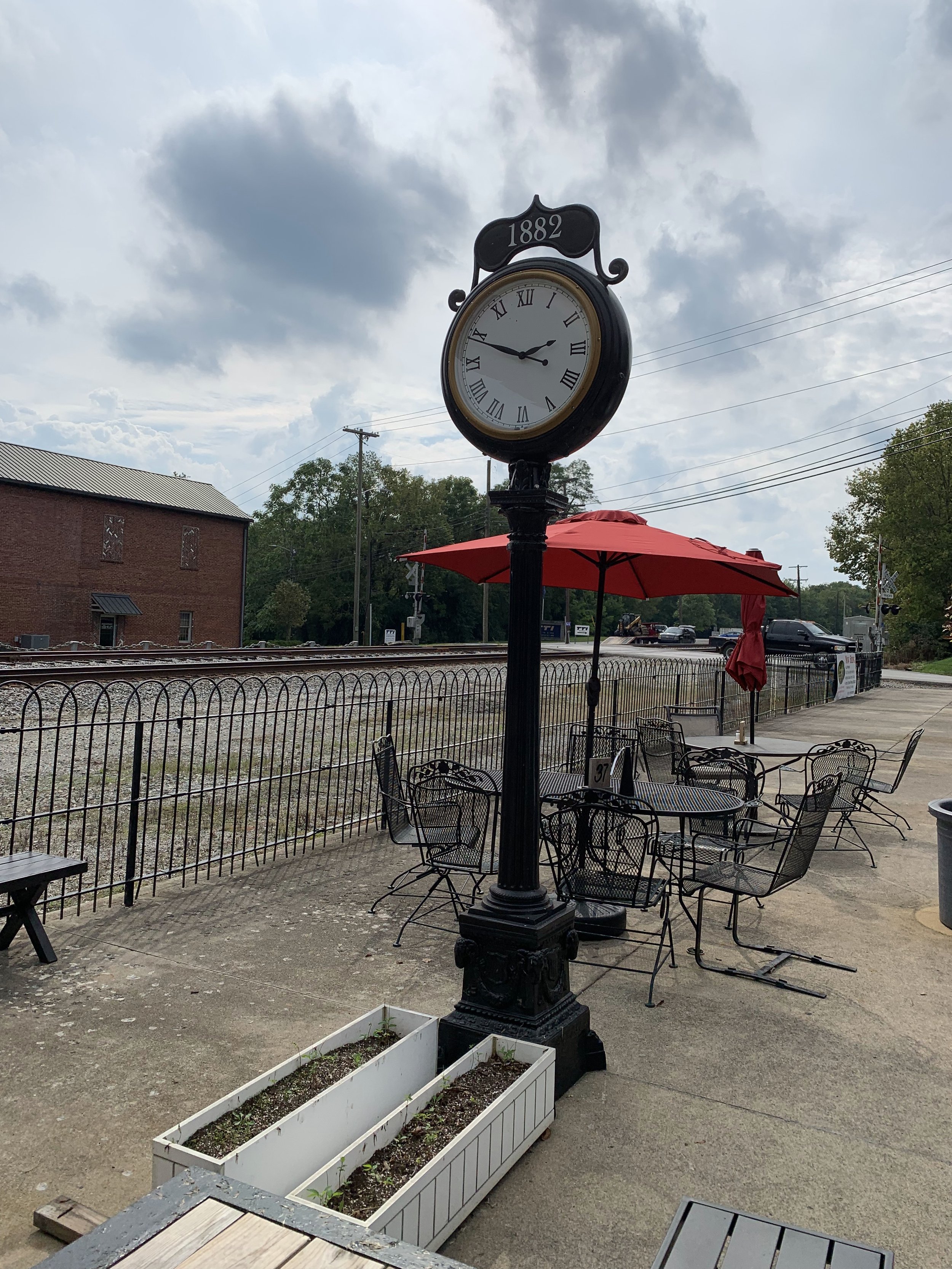
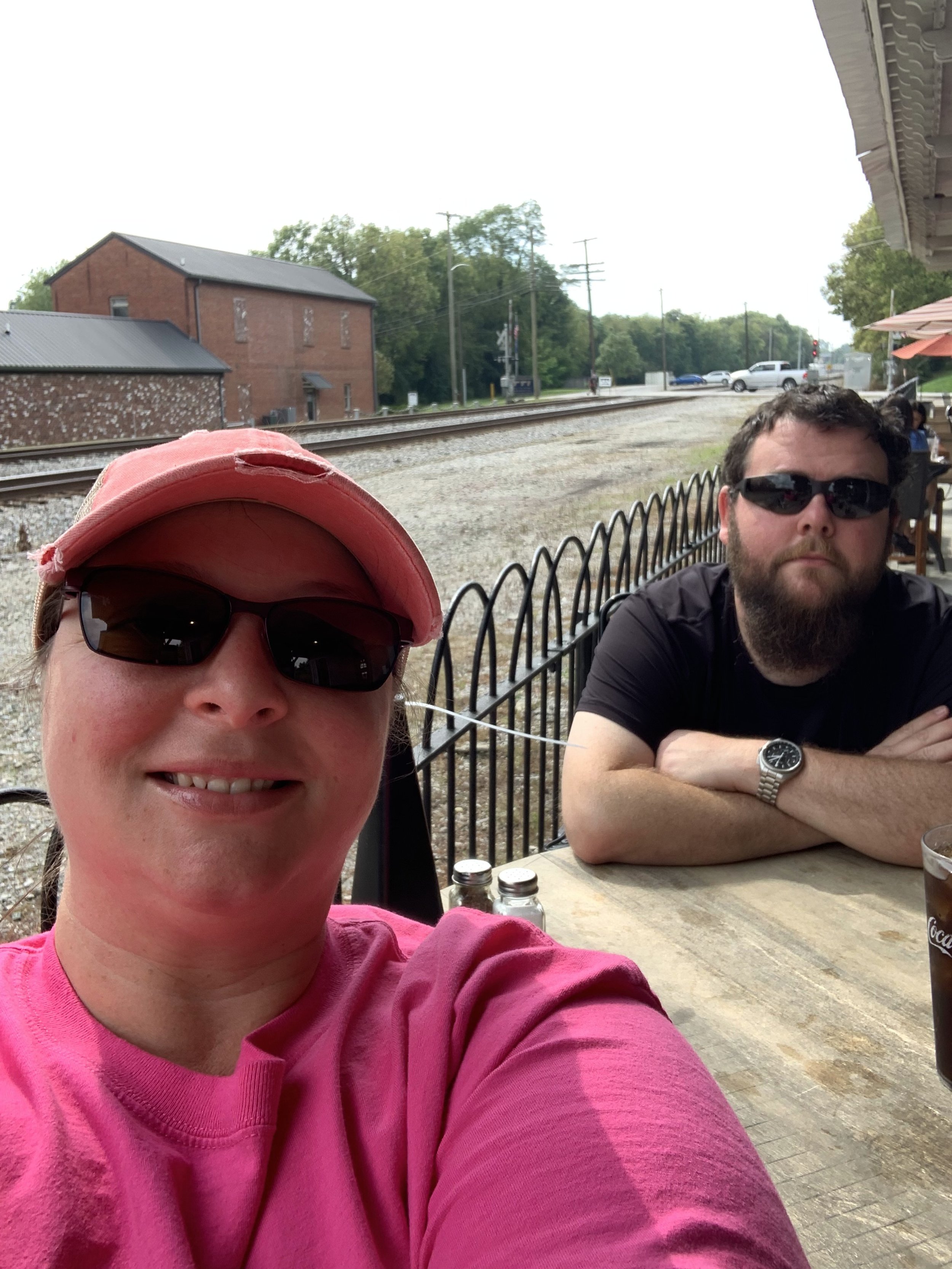



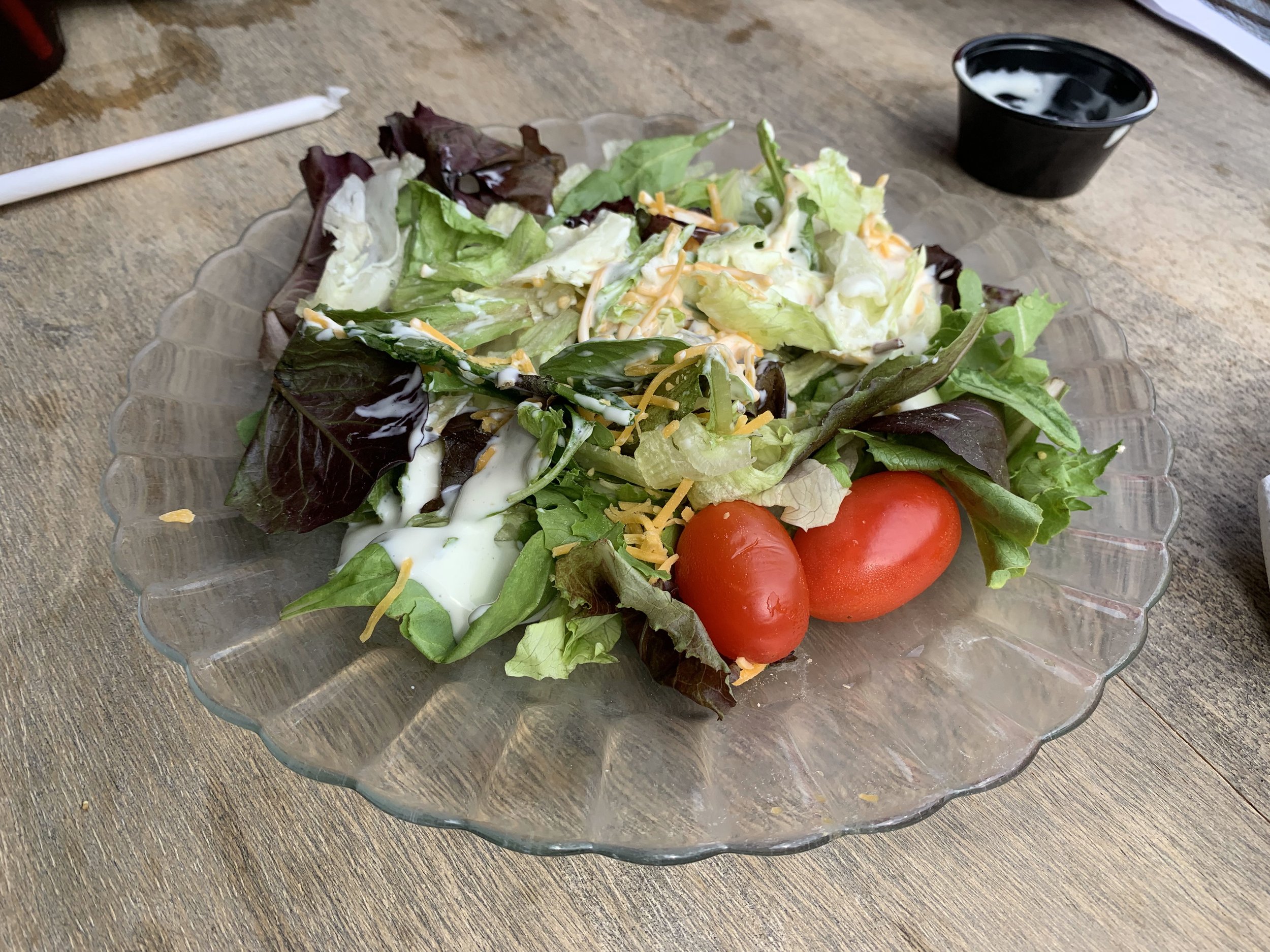
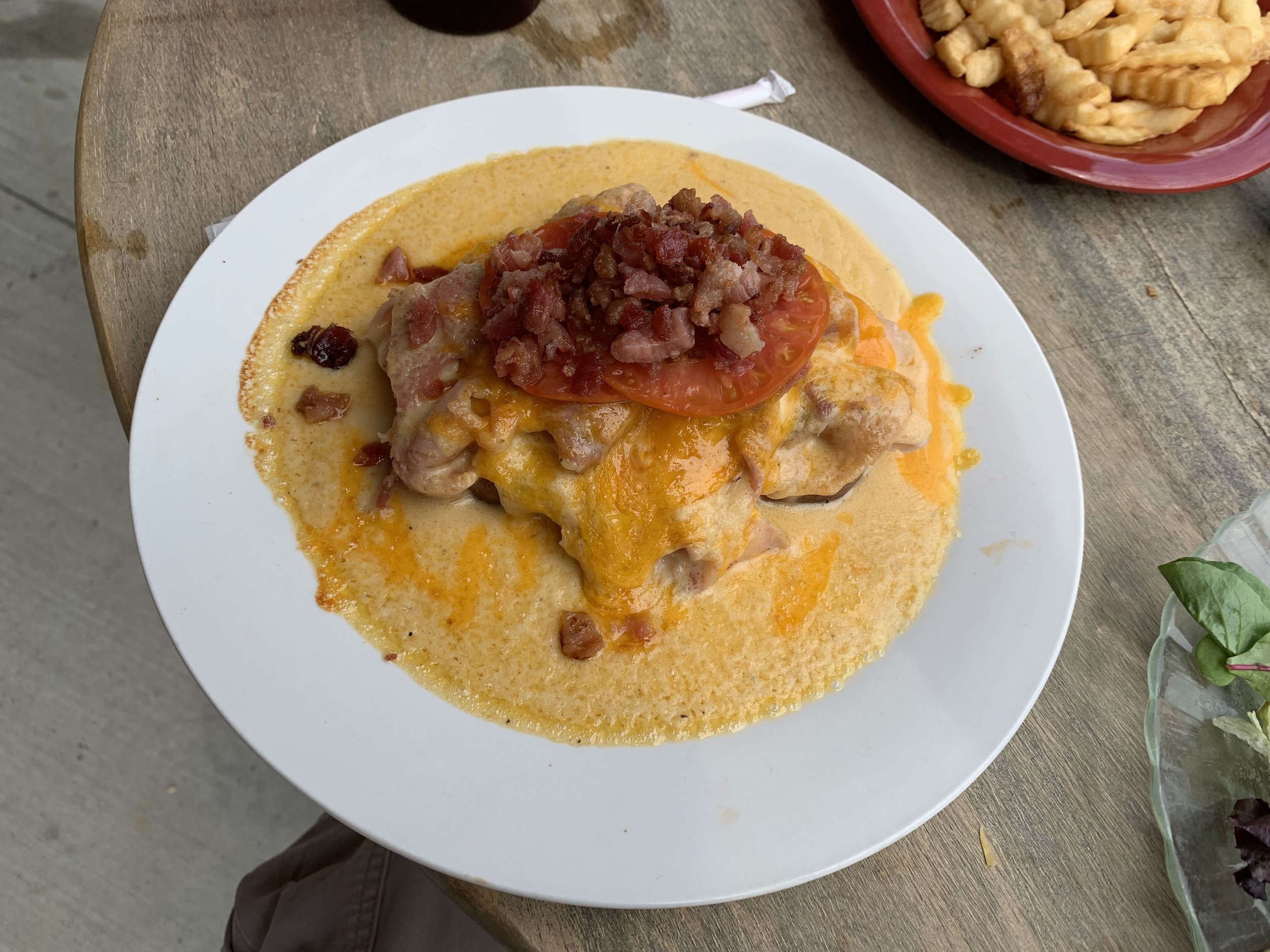
Located at the junction of Route 627 and the CSX railroad just outside of downtown Paris Kentucky is the Trackside Restaurant & Bourbon Bar. This unique southern eatery is housed in the beautifully restored former Paris Train Depot. The historic building was constructed by the Louisville & Nashville railroad in 1882 and expanded multiple times in the early 20th century to facilitate the growing needs of this bustling community. Over the years the depot served local farmers shipping their crops, famous actors and actresses coming to perform at the city's opera house, and even the likes of Teddy Roosevelt who allegedly made a whistle-stop speech here.
Today the restaurant's décor seems a mix of class and southern charm. For example the tables are built from an eclectic mix of everything from "live-edge" lumber, to barrel tops, to old farmhouse doors. Depending on the weather guests may have the choice of eating inside the depot, or at a collection tables lining the area just beside the track where passengers would once have stood waiting for their train. We visited on a day of perfect fall weather, so we got to take advantage of the outdoor seating.
All of the staff from the hostess to the various waitresses we interacted with were friendly, engaging, and full of southern charm. Drinks were kept full, food was brought promptly, and empty plates disappeared as soon as we were done with them.
The food is all southern fare, and everything we had was excellent. For an appetizer we had the fried green tomatoes. They were hot, crispy, and delicately seasoned fresh from the fryer. They came with a side of fresh home-made ranch dressing which offered just enough coolant to let you take a small bite without completely melting your face off.
For our entrees the wife had the chicken salad with a side of fries, and a bowl of the potato soup. The soup was her favorite item of the day. Creamy and succulent, the soup was filled with large rustic chunks of potatoes, onions, celery, and carrots. The celery and carrots were something I'd never seen done before, and they truly elevated the dish into something special, bringing both savory and sweet notes. The fries were crisp, and seasoned with just a touch of Cajun spice. The chicken salad was clearly made from fresh shredded chicken, with mayonnaise, onions, and grapes. She had the choice of having it served sandwich style or on a bed of lettuce, but opted for the lettuce option. It was well made, but but she didn't realize until it arrived that it was the "sweet style" chicken salad (with the grapes), which is not her favorite.
I opted for the hot brown with a side salad. The salad was good, but on the small side. It featured chopped lettuce, spring mix, tomatoes, cucumbers, onions, and then I chose the home-made ranch dressing. The hot brown was hands down the best I’ve ever had, and clearly the best dish of the day. Their take is an opened faced turkey and old ham sandwich, absolutely drenched in a smokey/cheesey house-made Mornay sauce, and then topped with bacon and fresh tomatoes. Just smelling this thing might give you a heart attack, but one bite and you'll know that it was well worth it.
All told we were there for probably an hour or so. Although we were just getting started on what would turn into a 4 hour road trip, it's just hard to feel like you're in a hurry when you're here. Between the excellent food, the charming staff, and perfect atmosphere you can't help but slip into an old southern state of mind where everything just moves a little slower. If you find yourself near Paris with an hour or 2 to kill, Trackside offers the perfect place to unwind and soak up the local culture.
Want to Experience This Adventure for Yourself?:
Trackside: 134 East 10th Street Paris, KY
The Seelbach Hotel

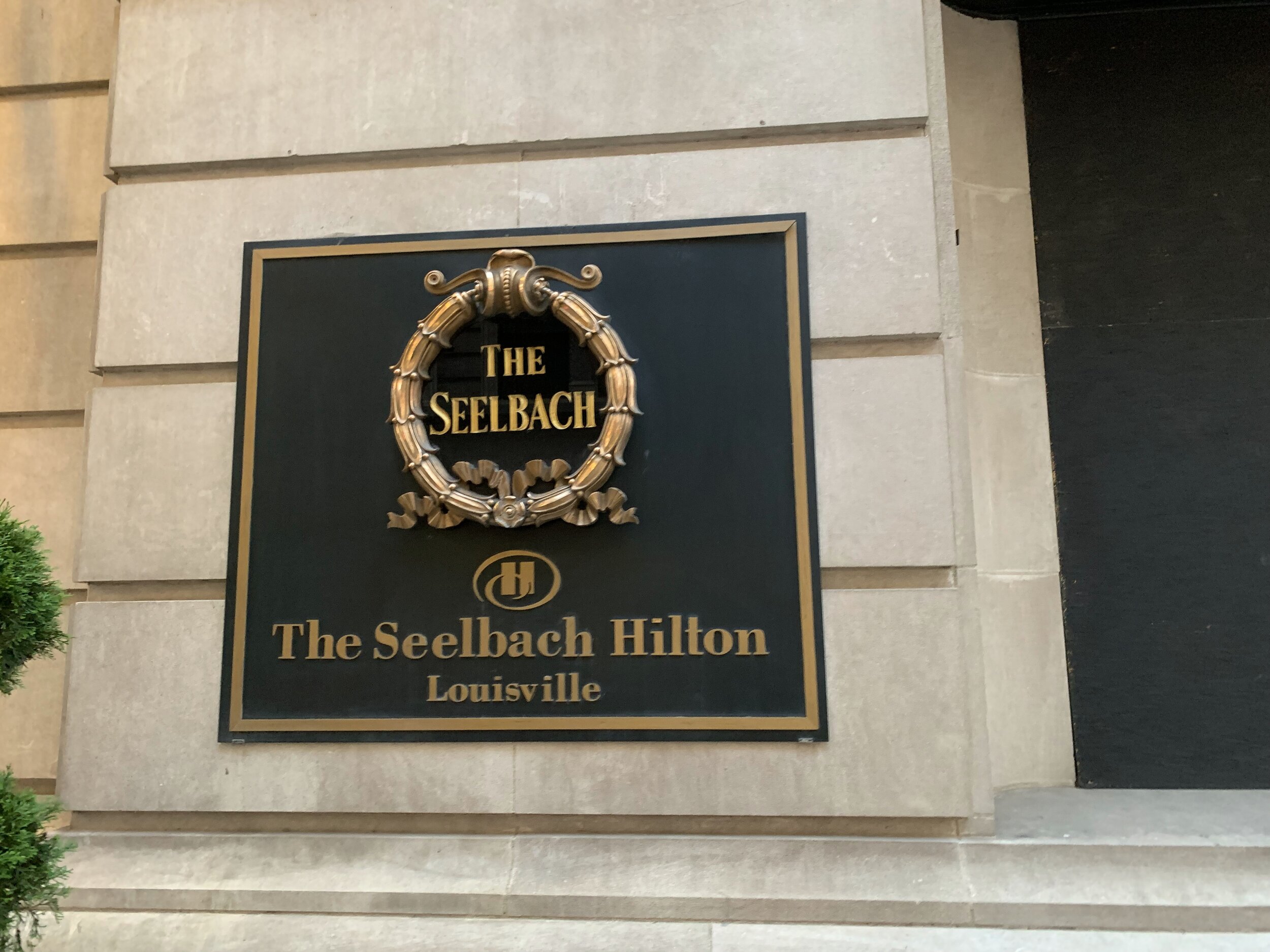
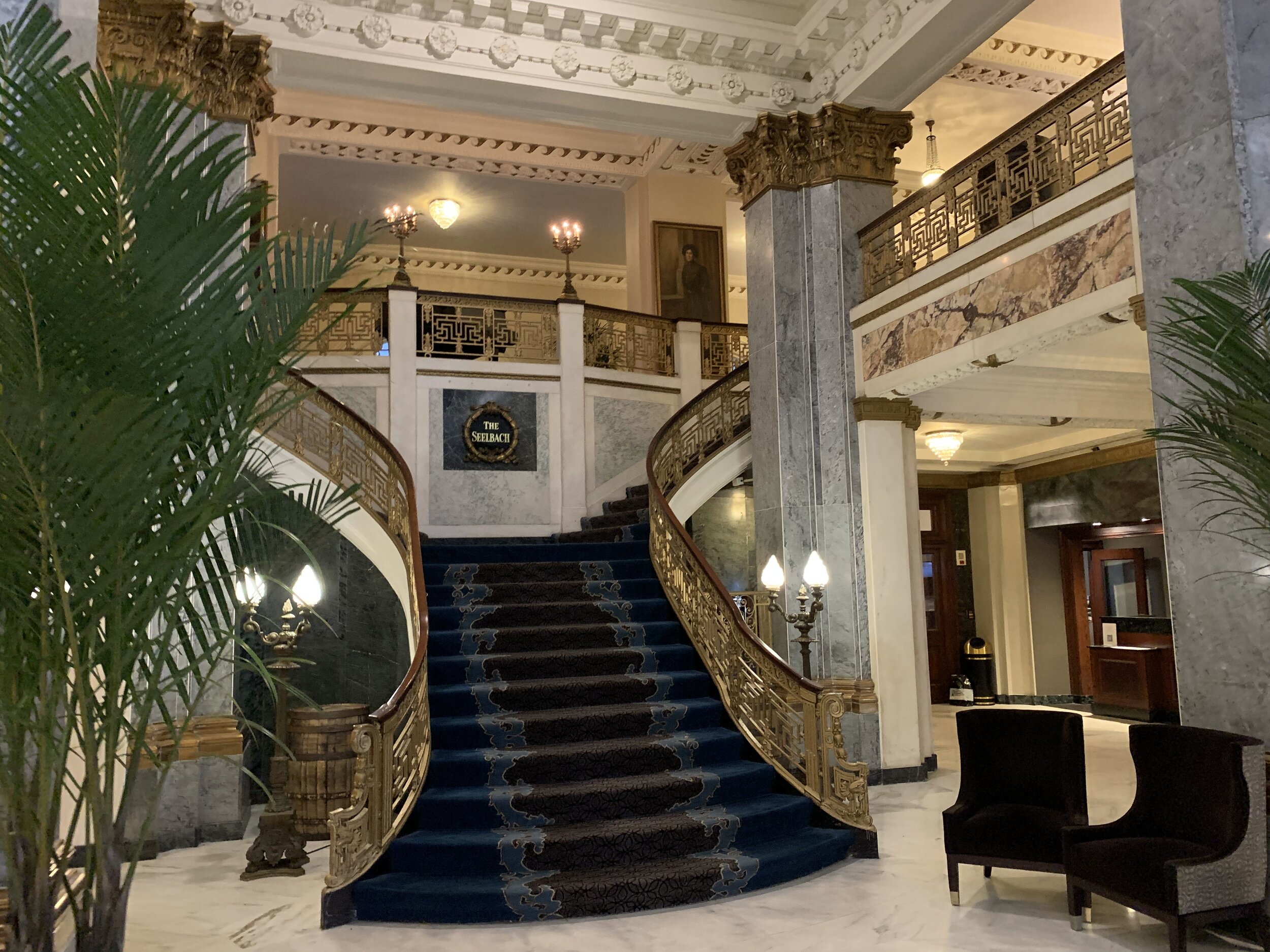
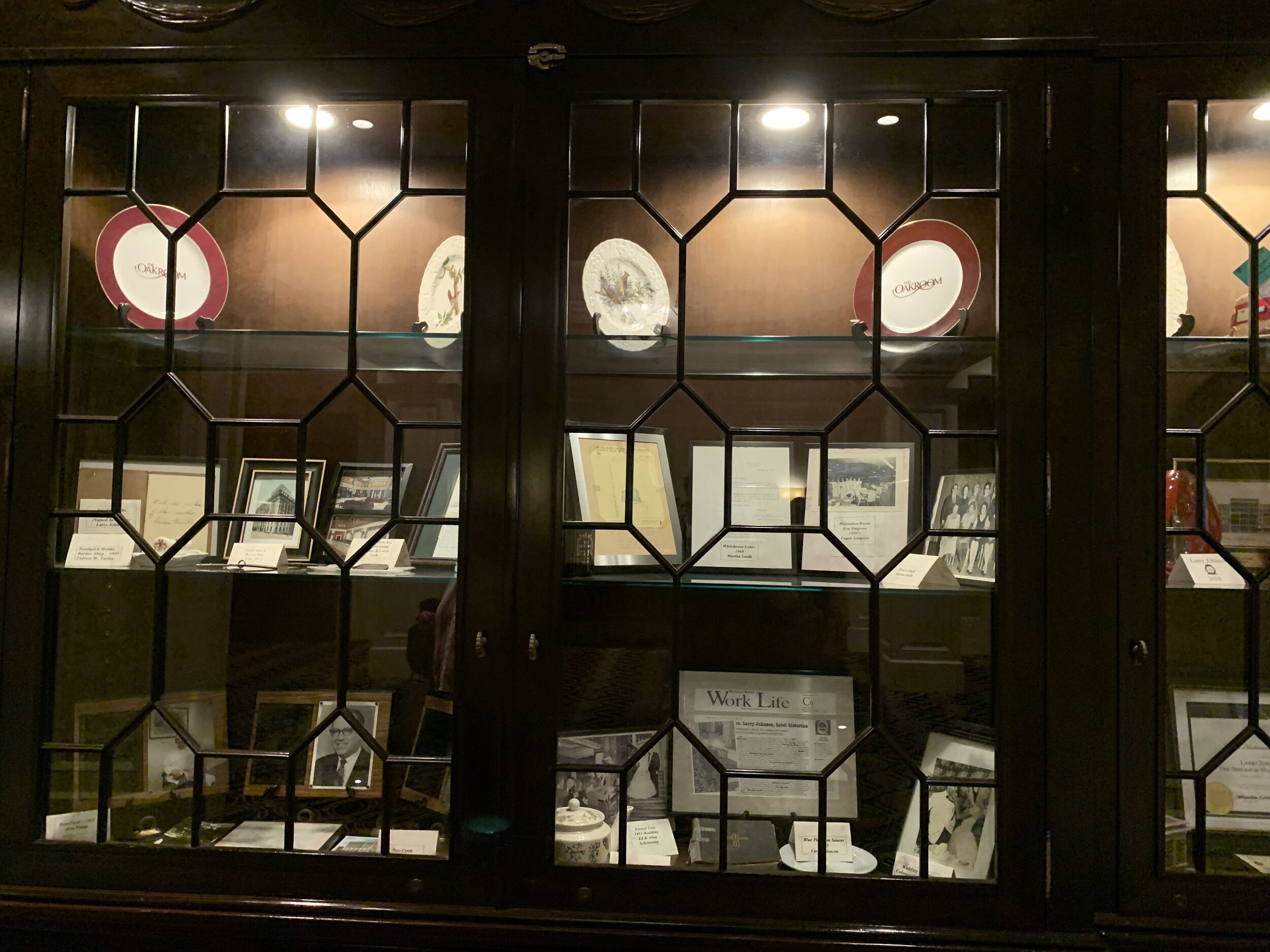
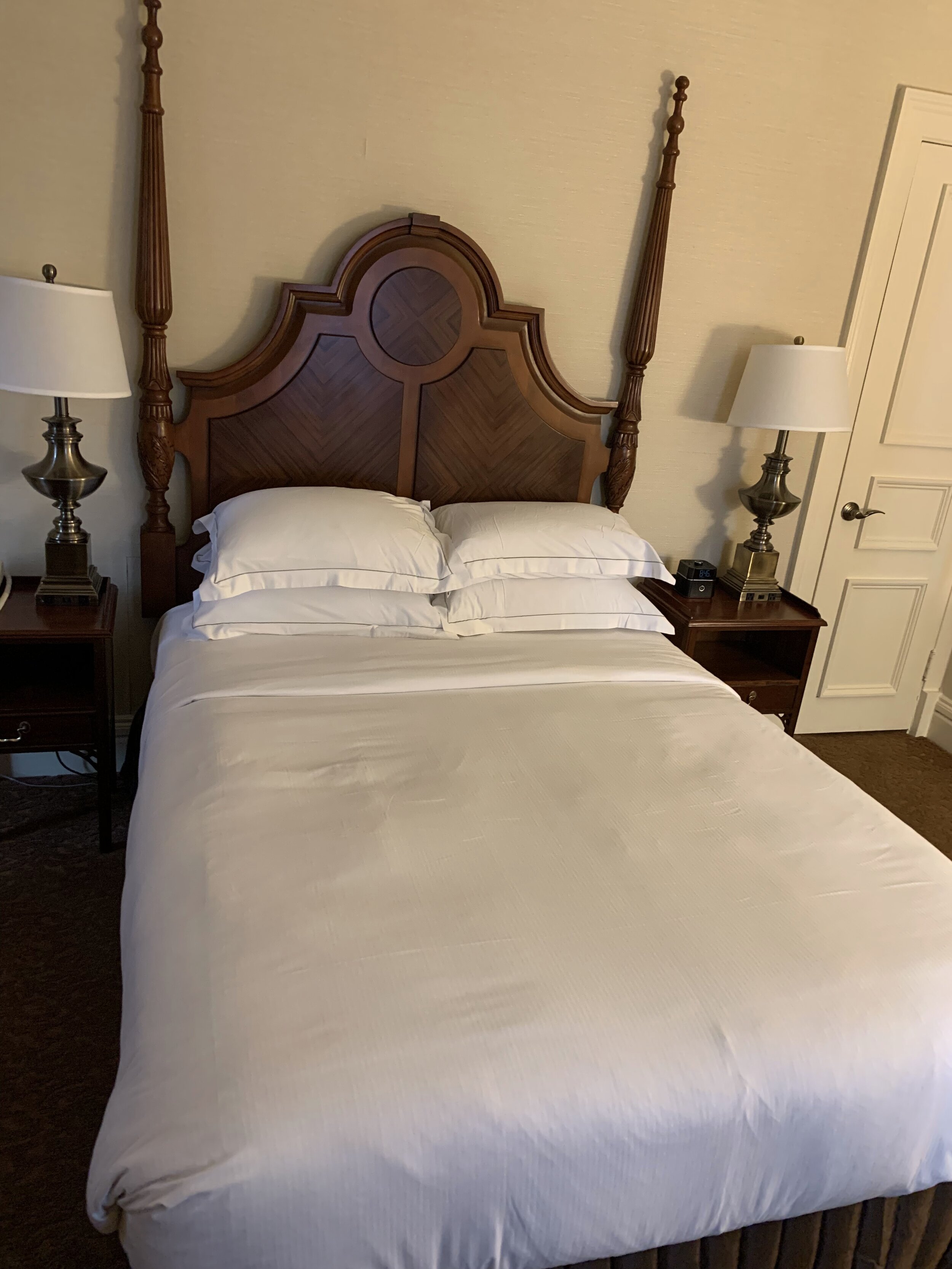
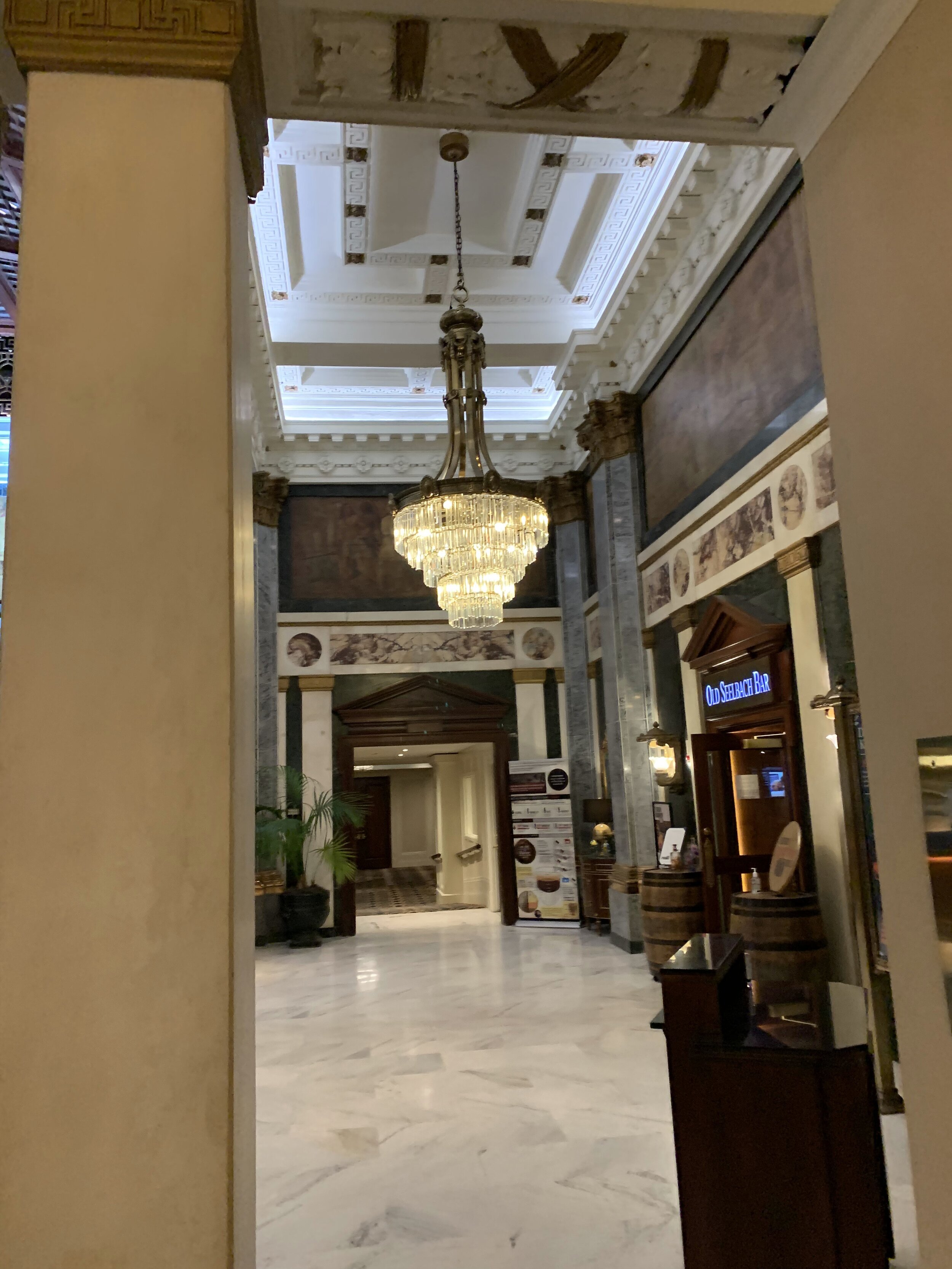
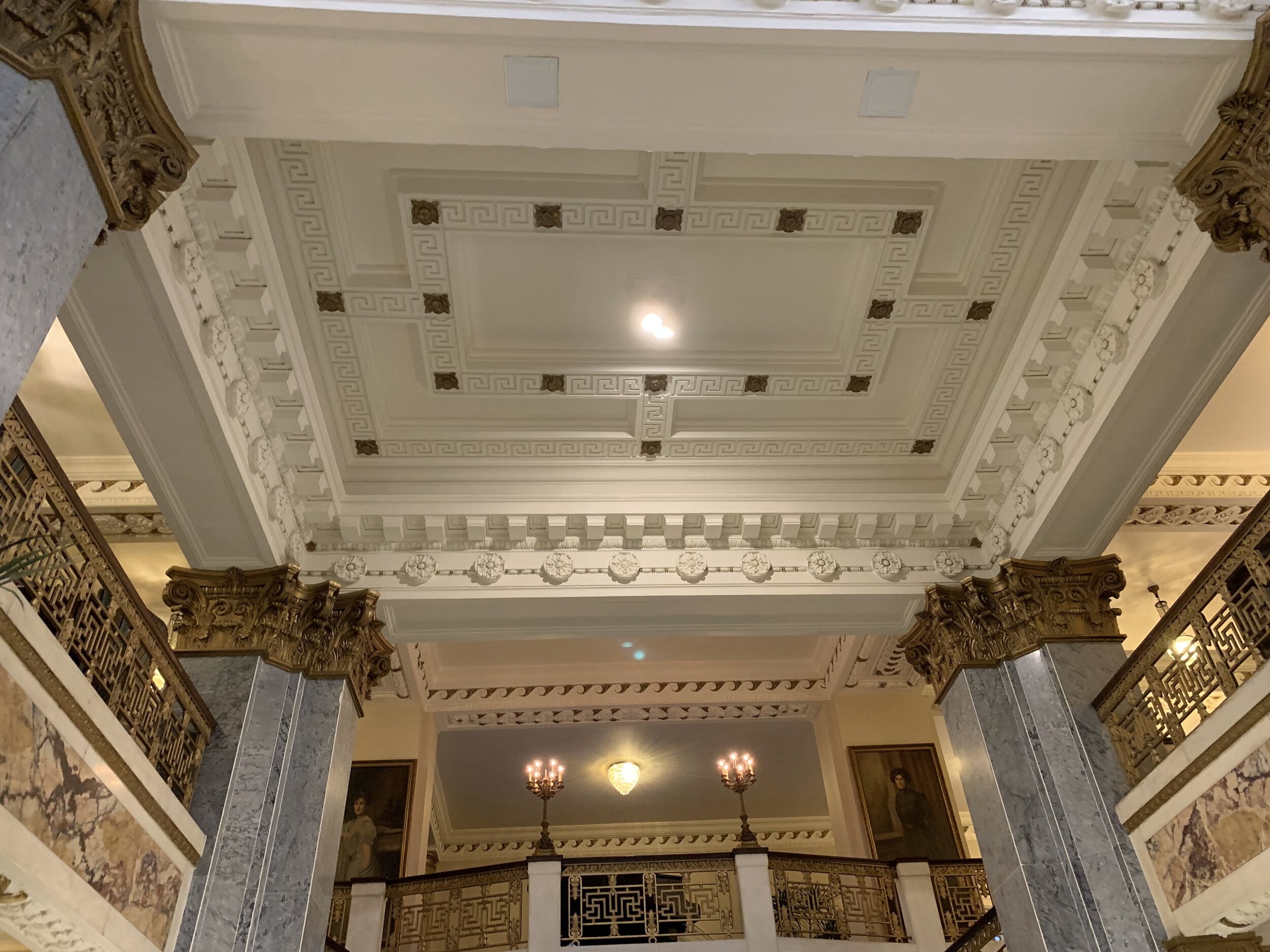
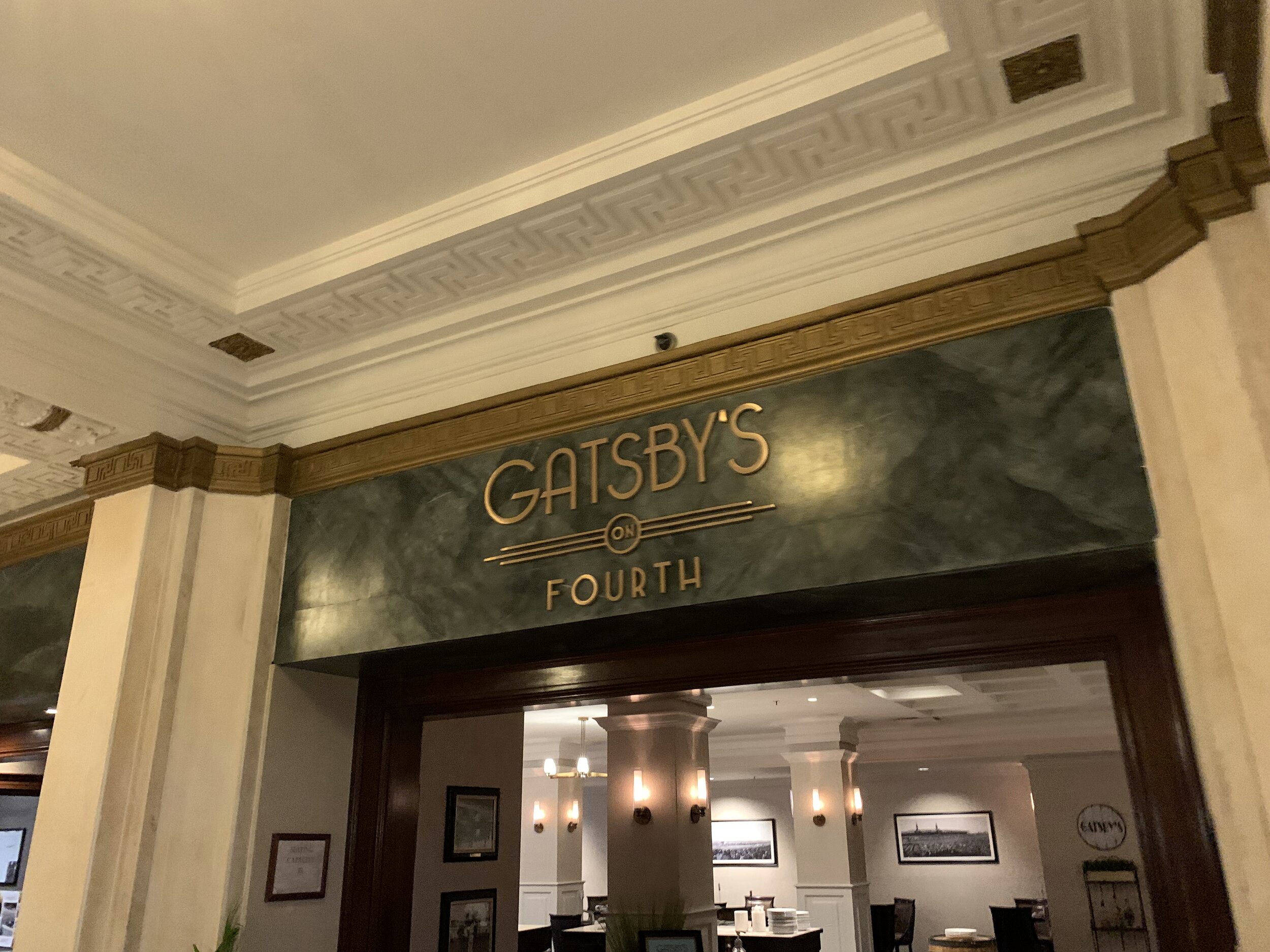
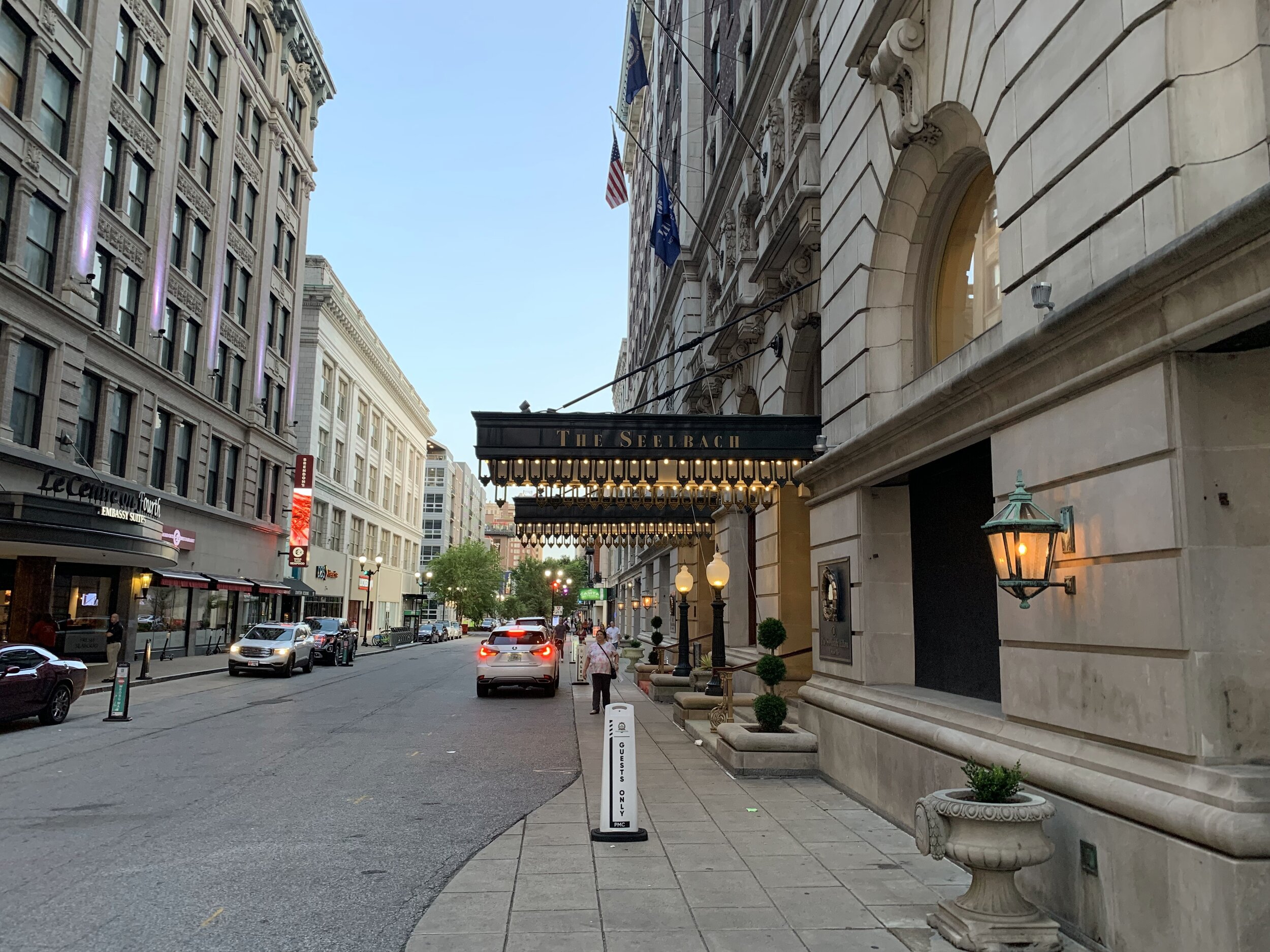
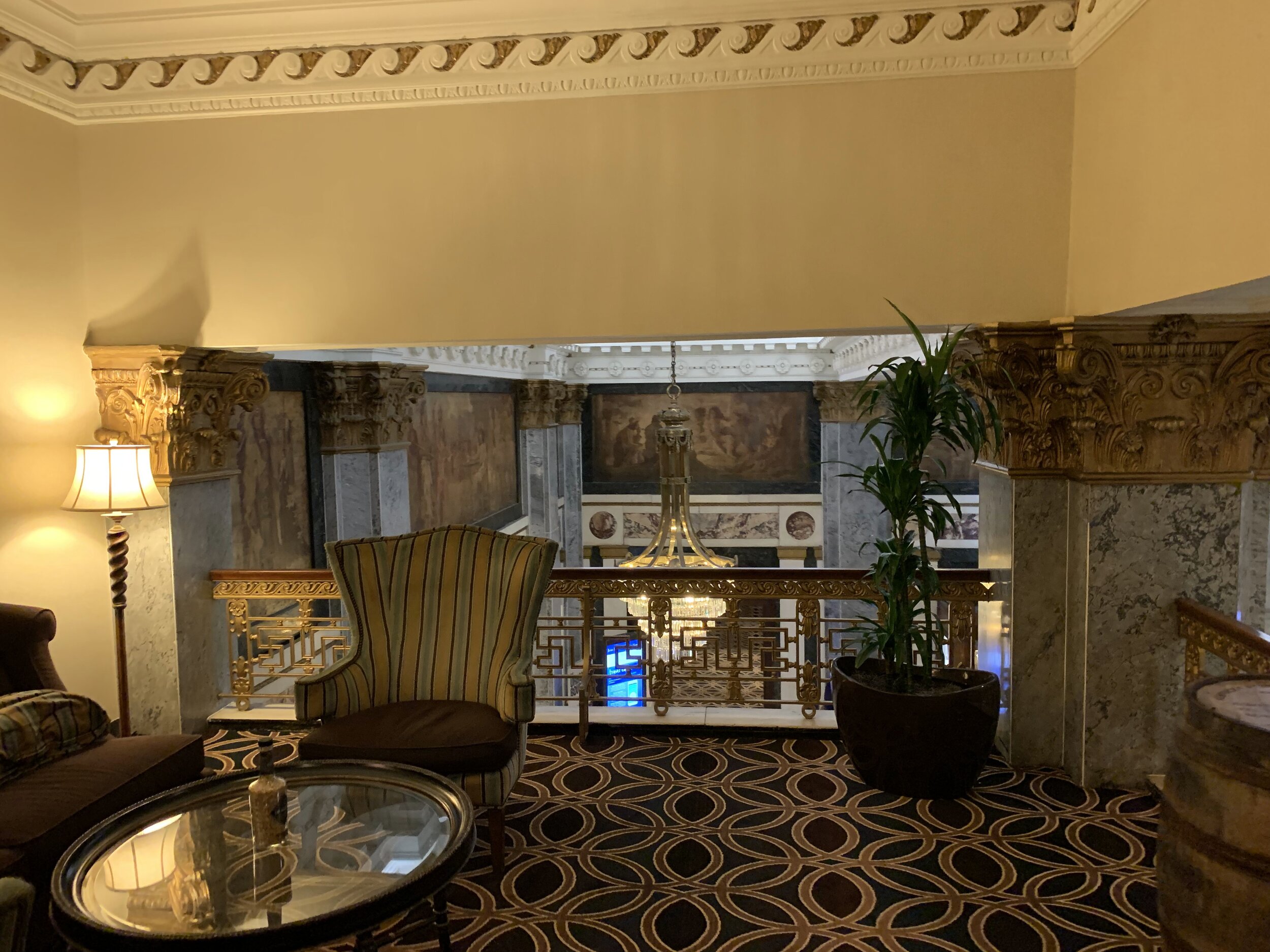
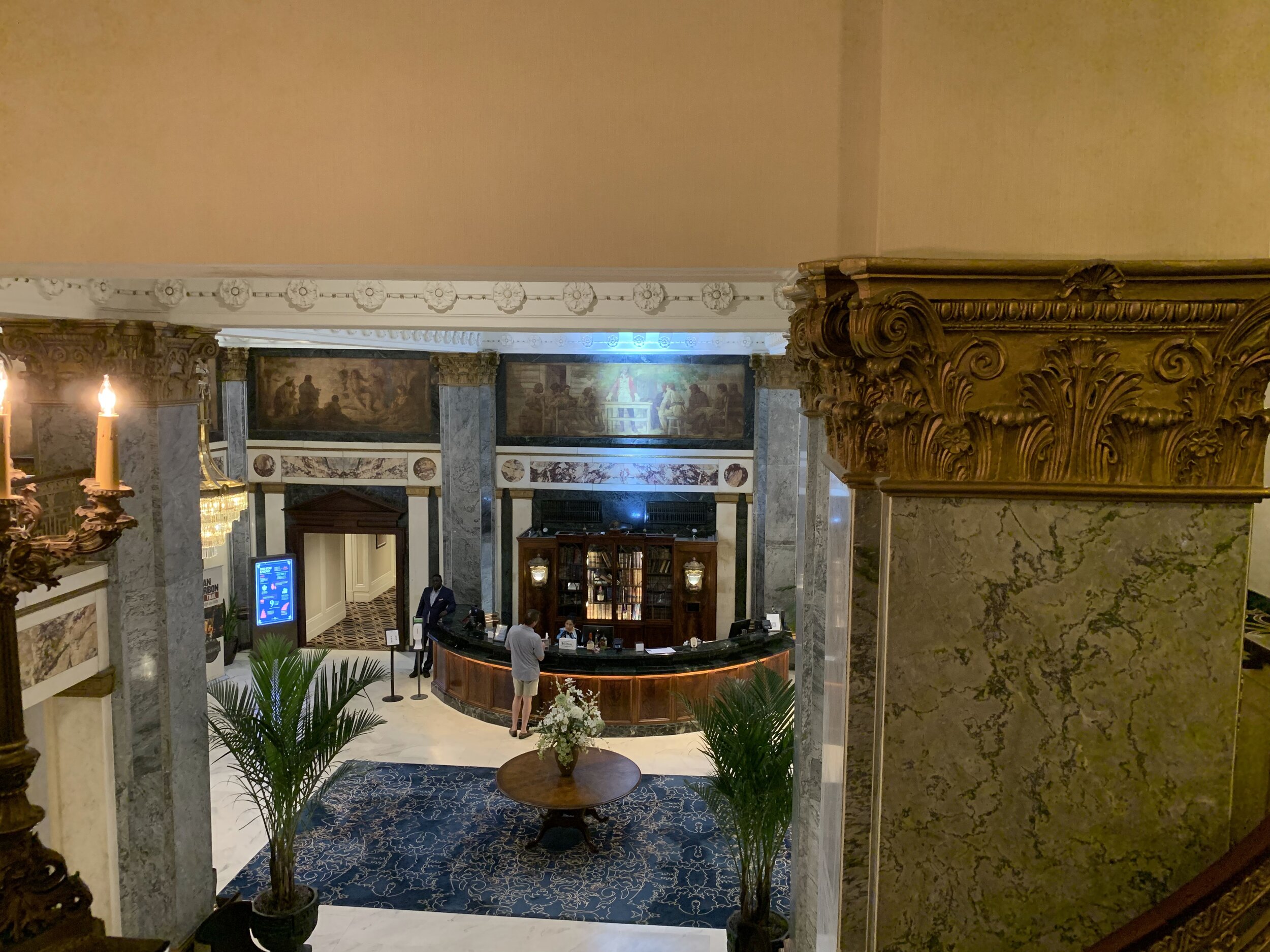
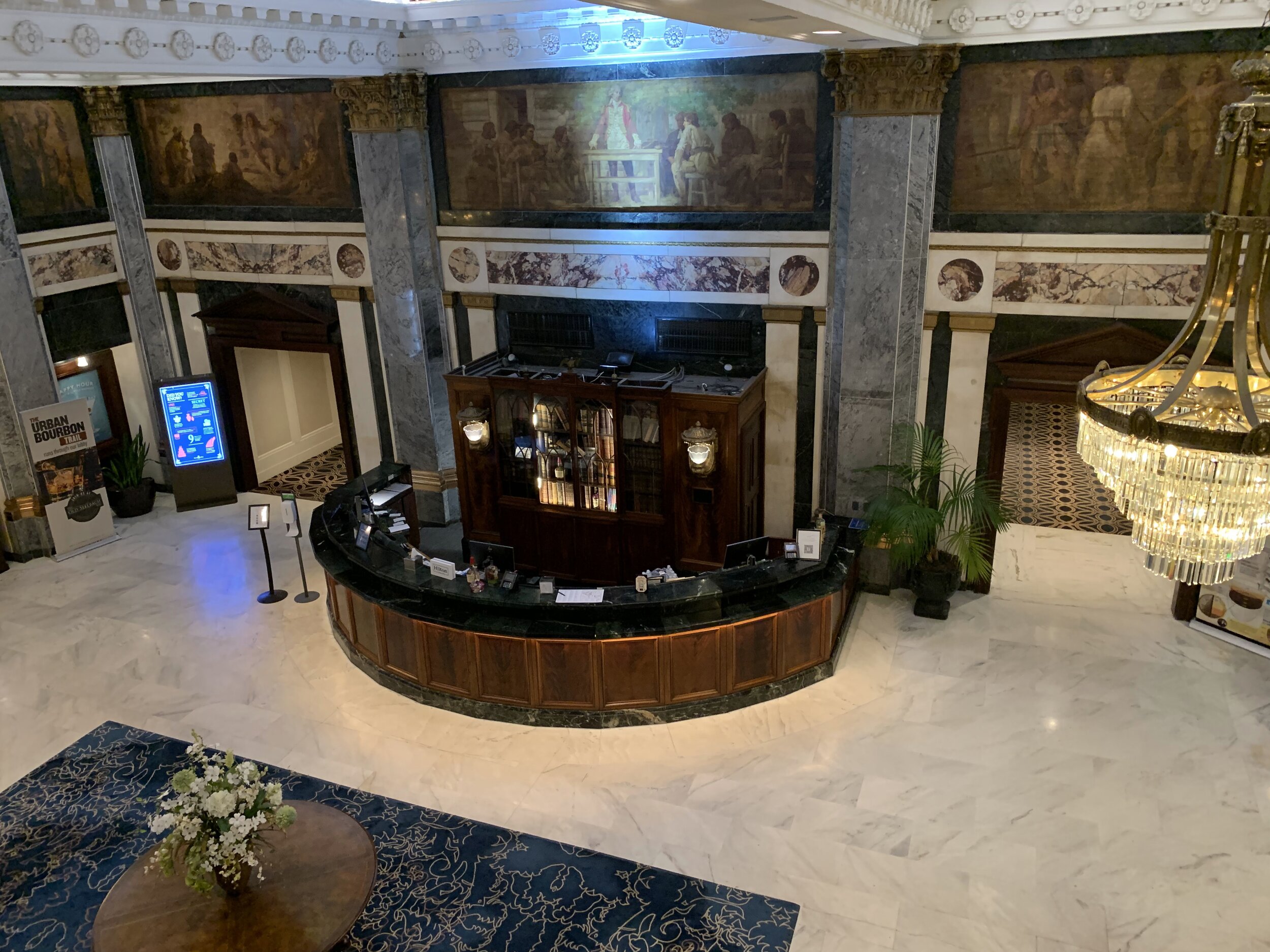
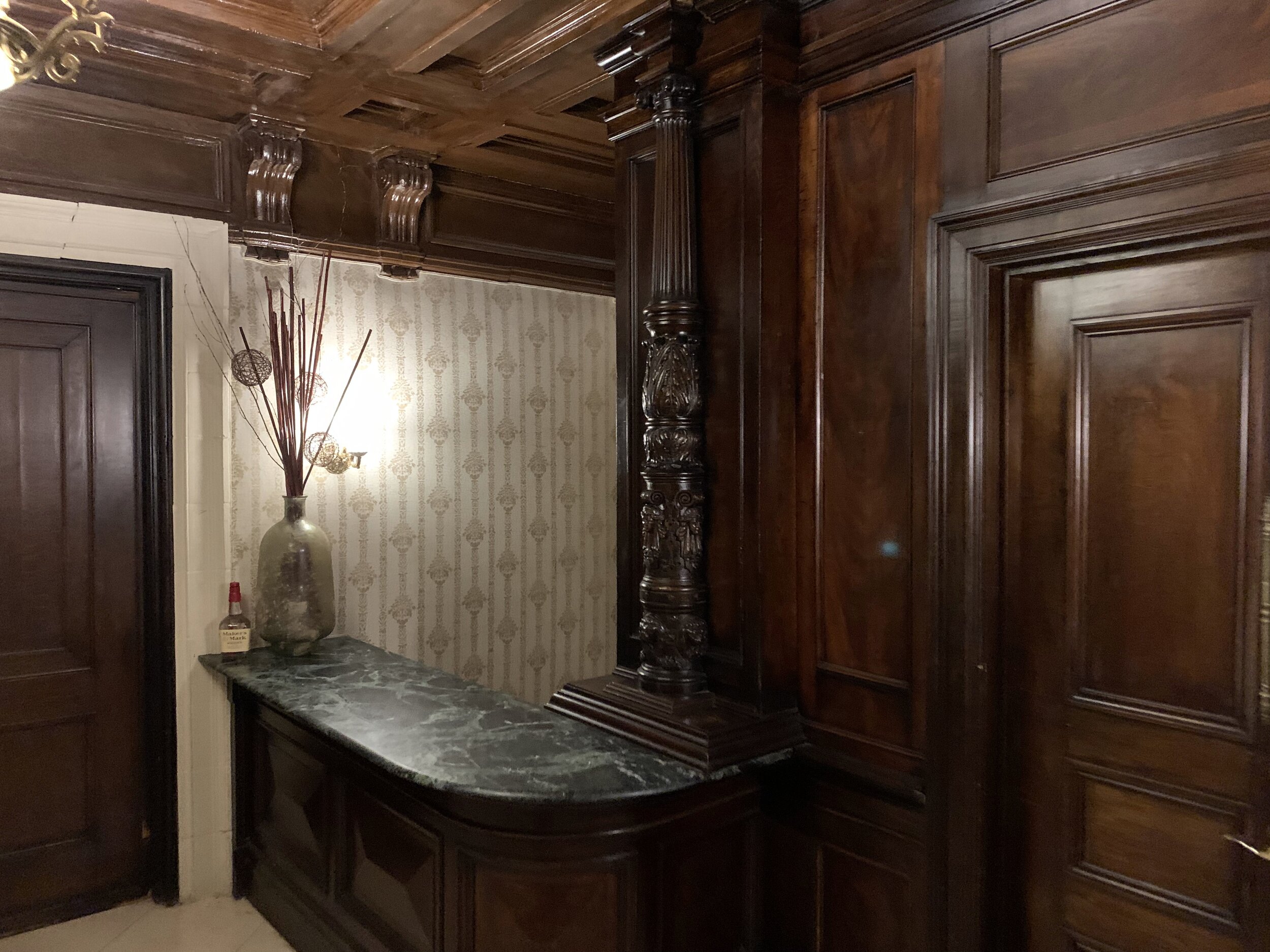
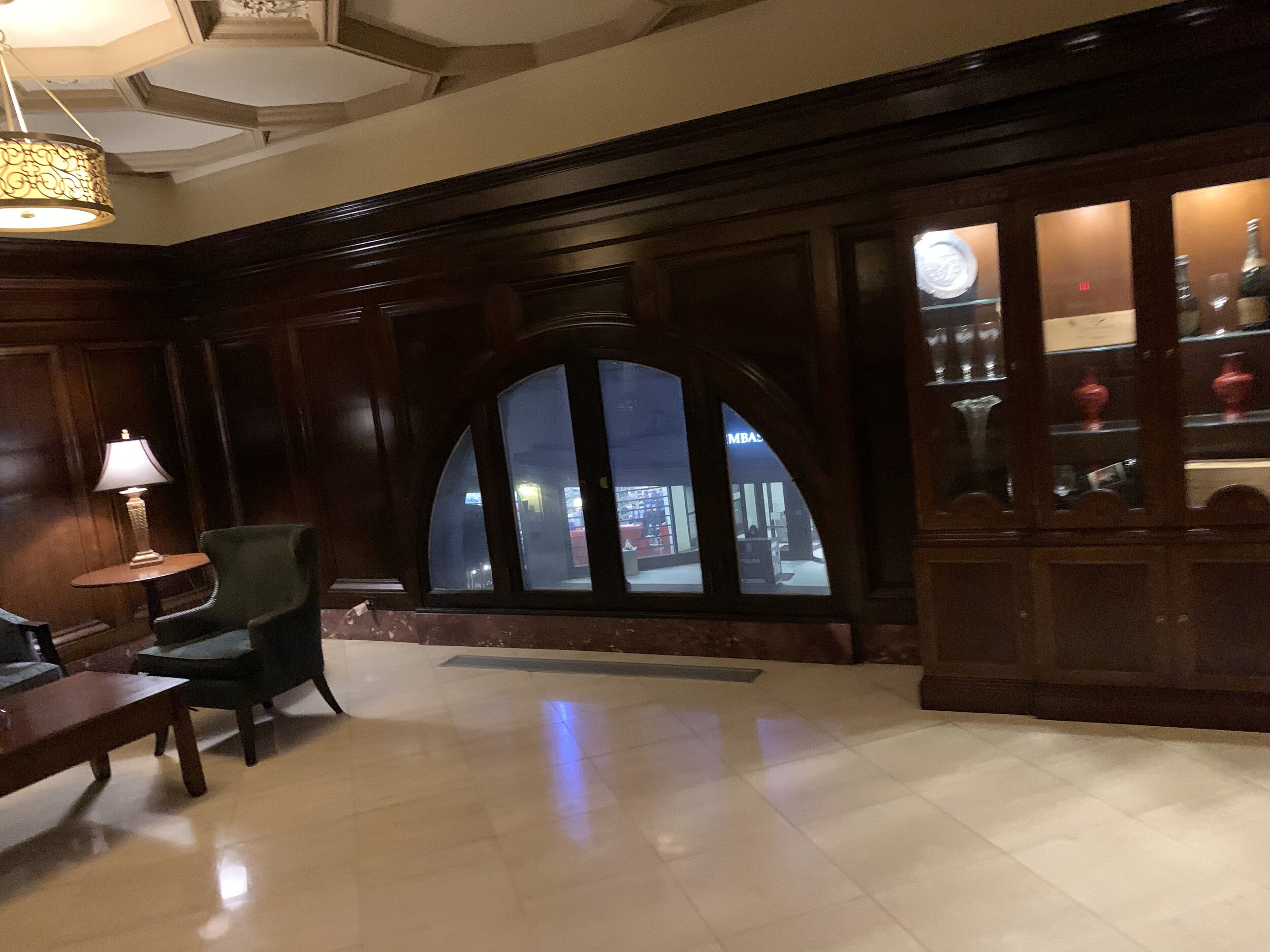
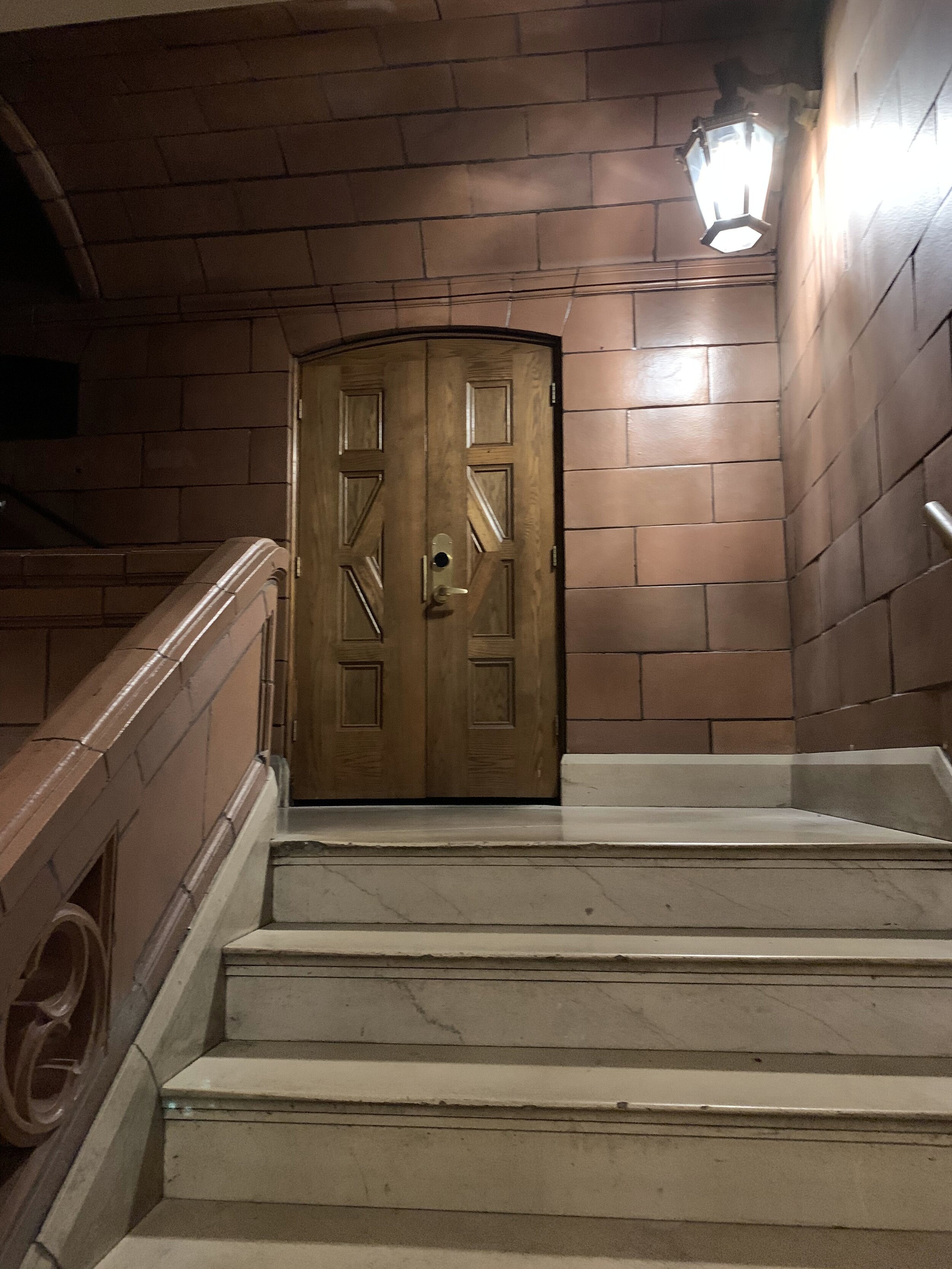
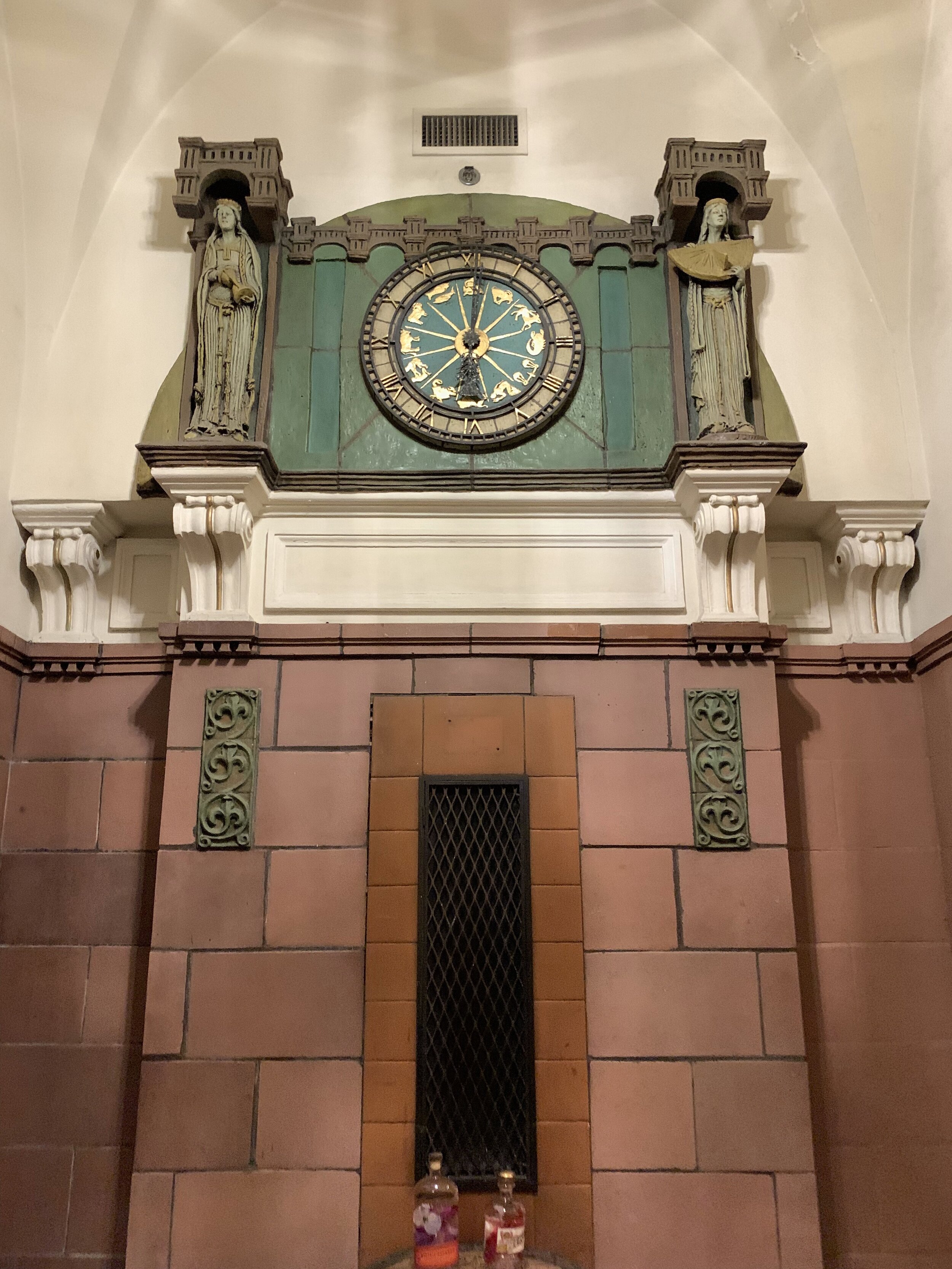
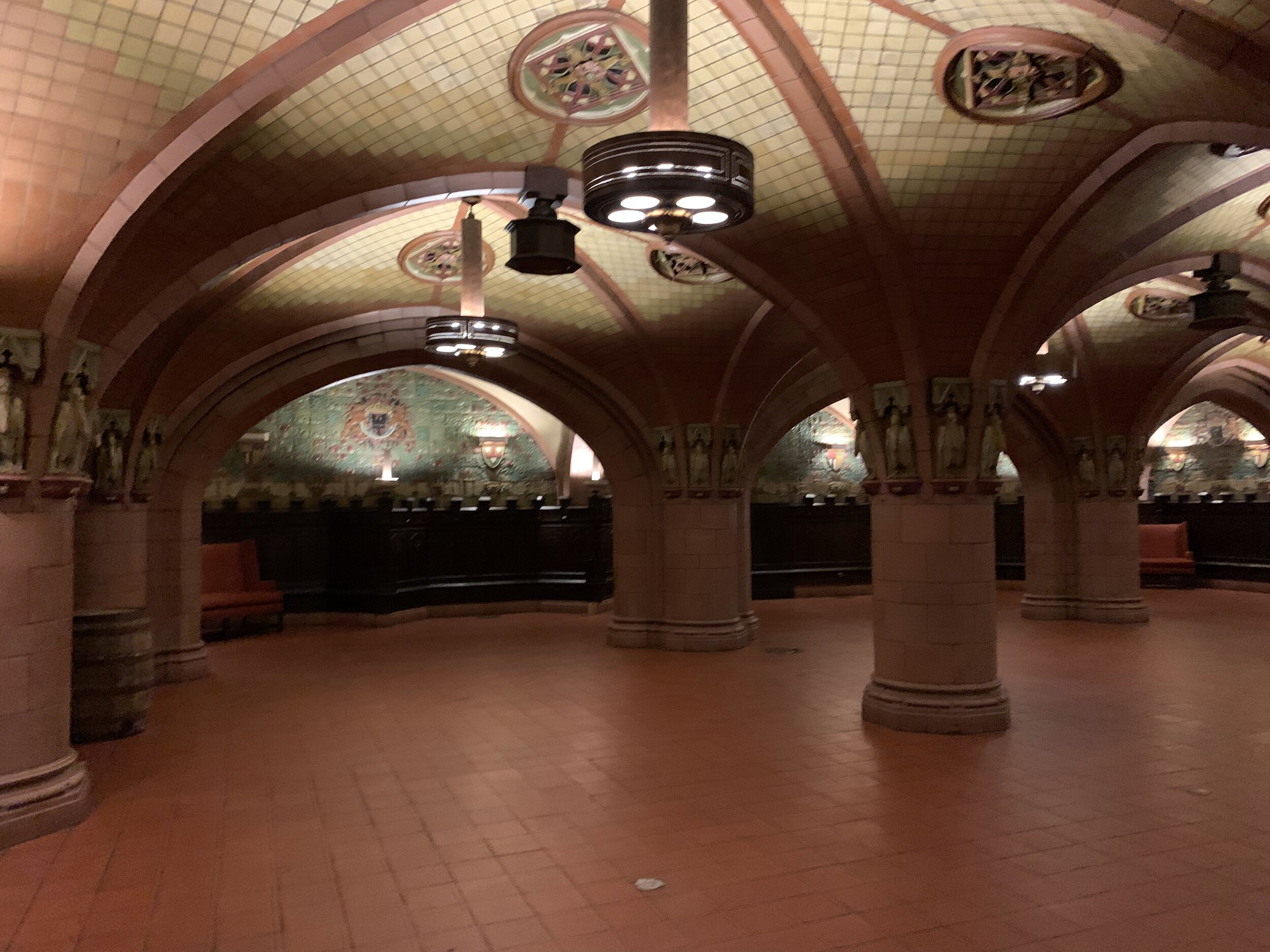
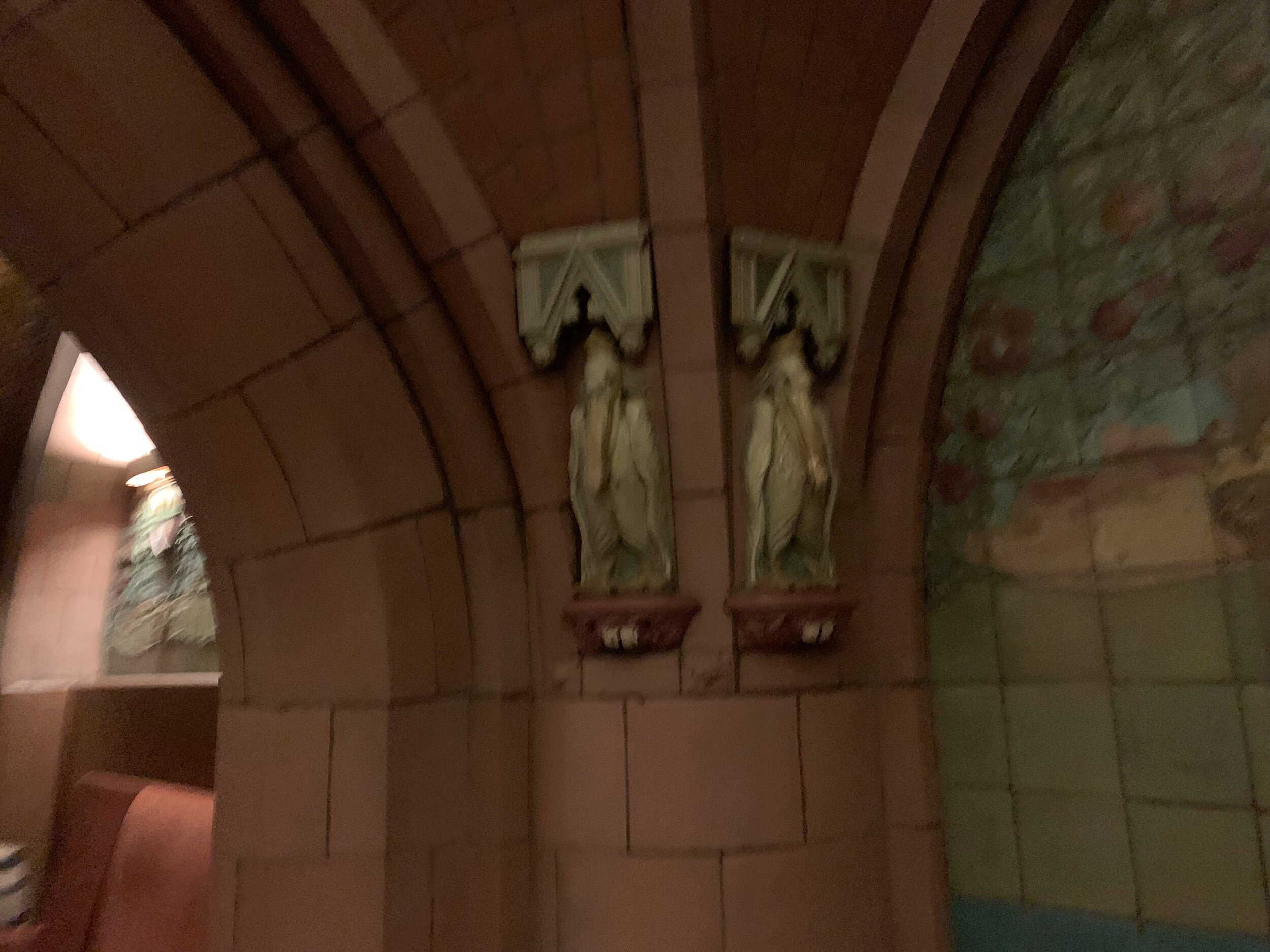
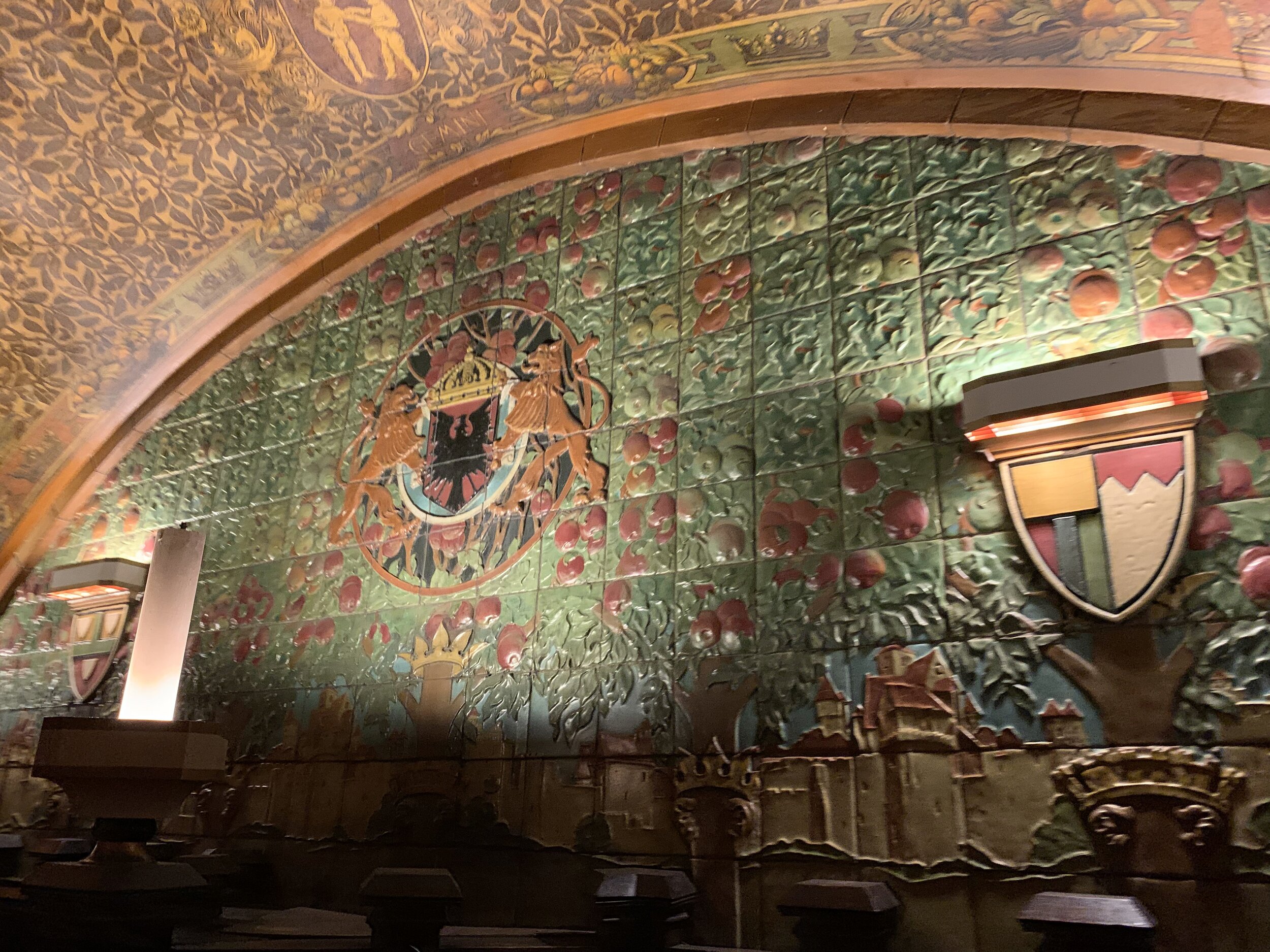

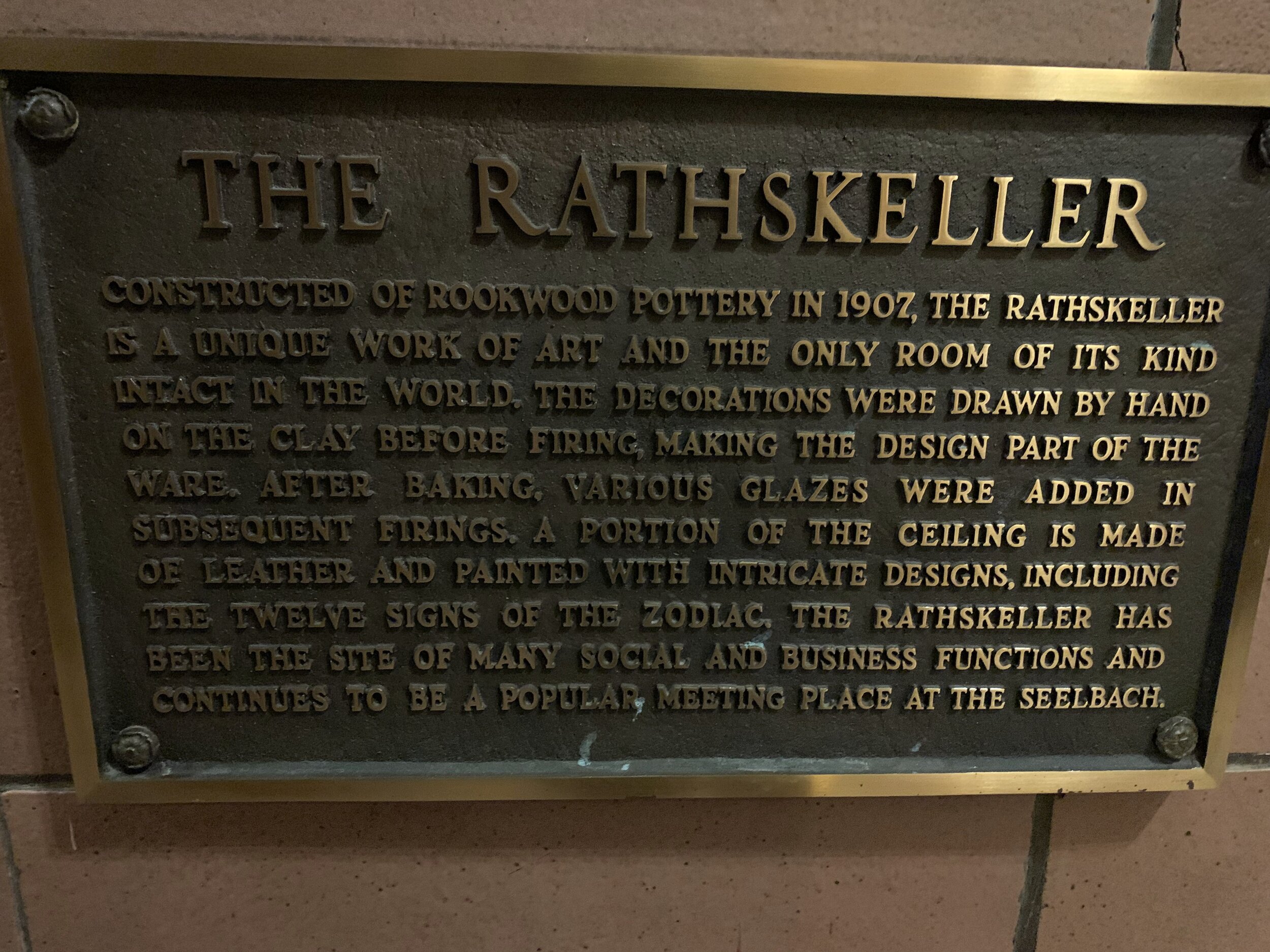
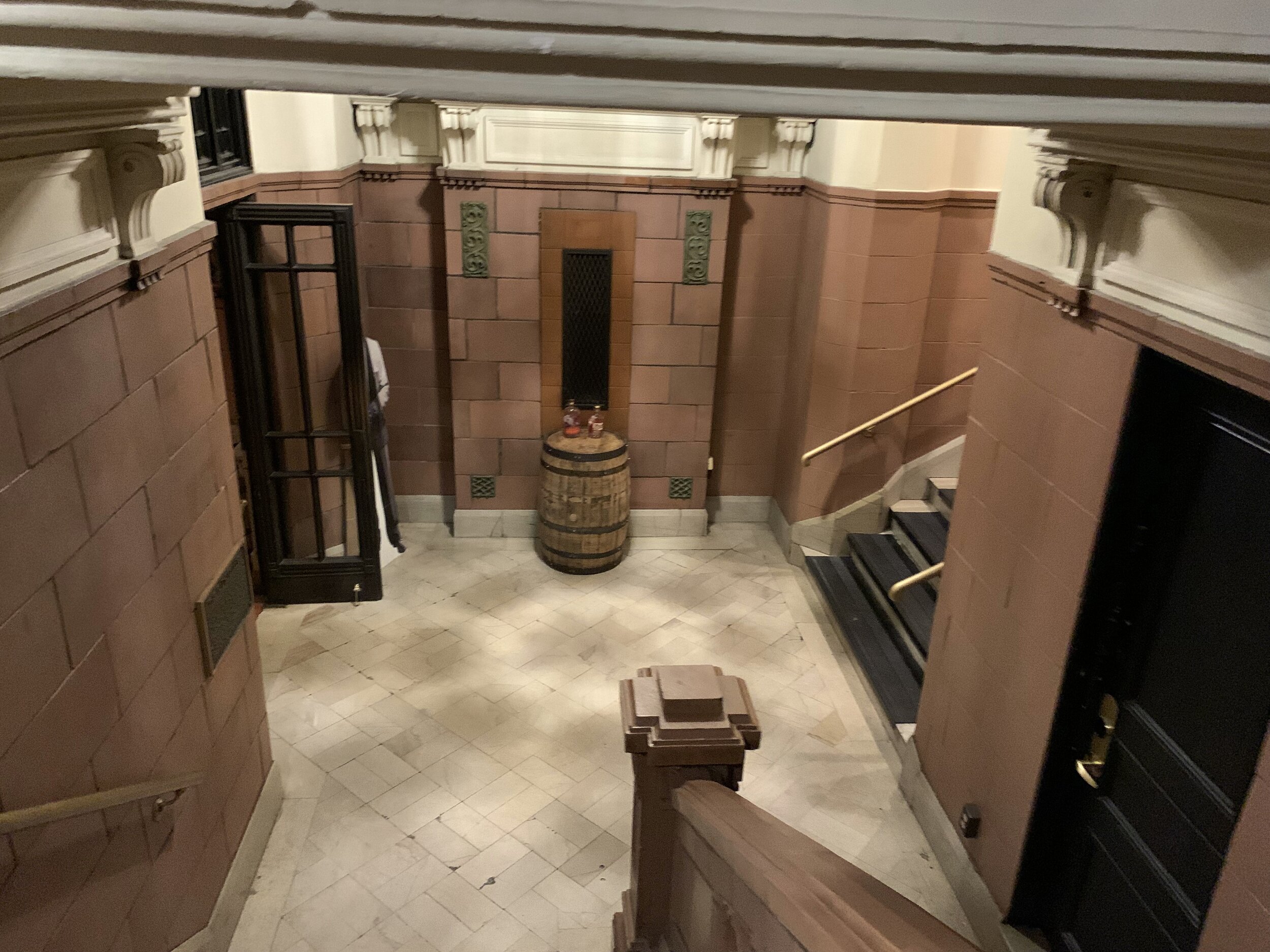
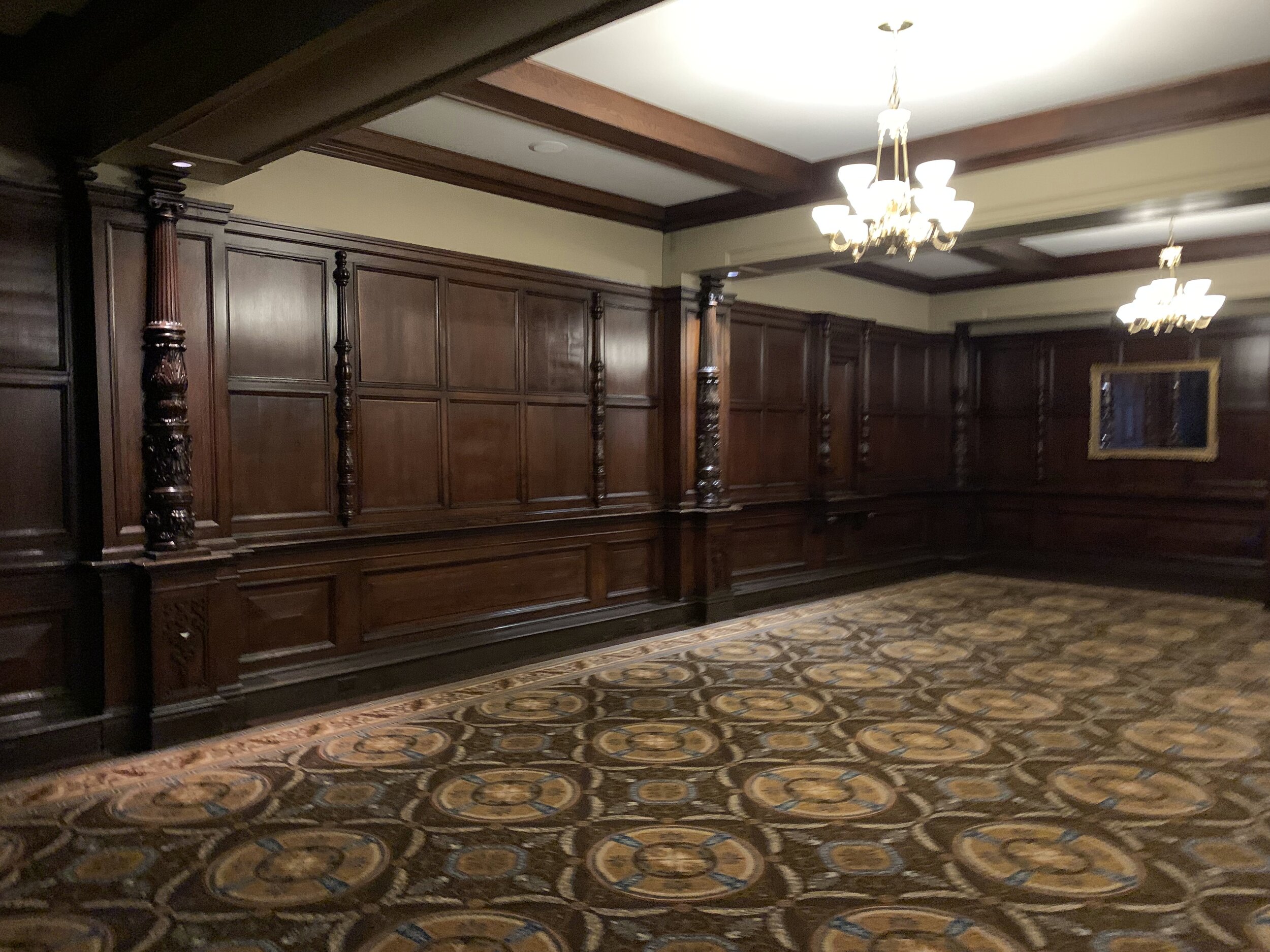
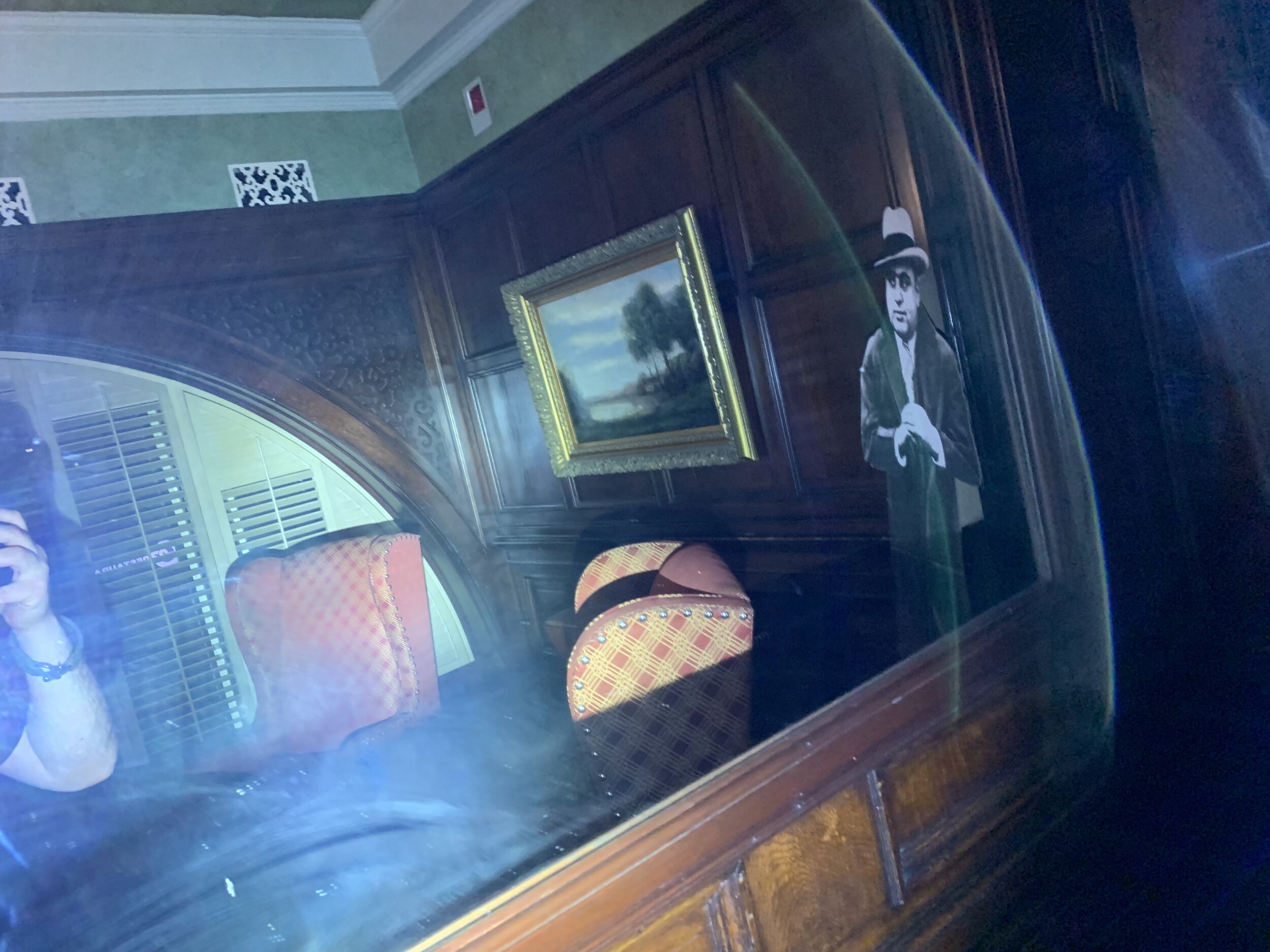

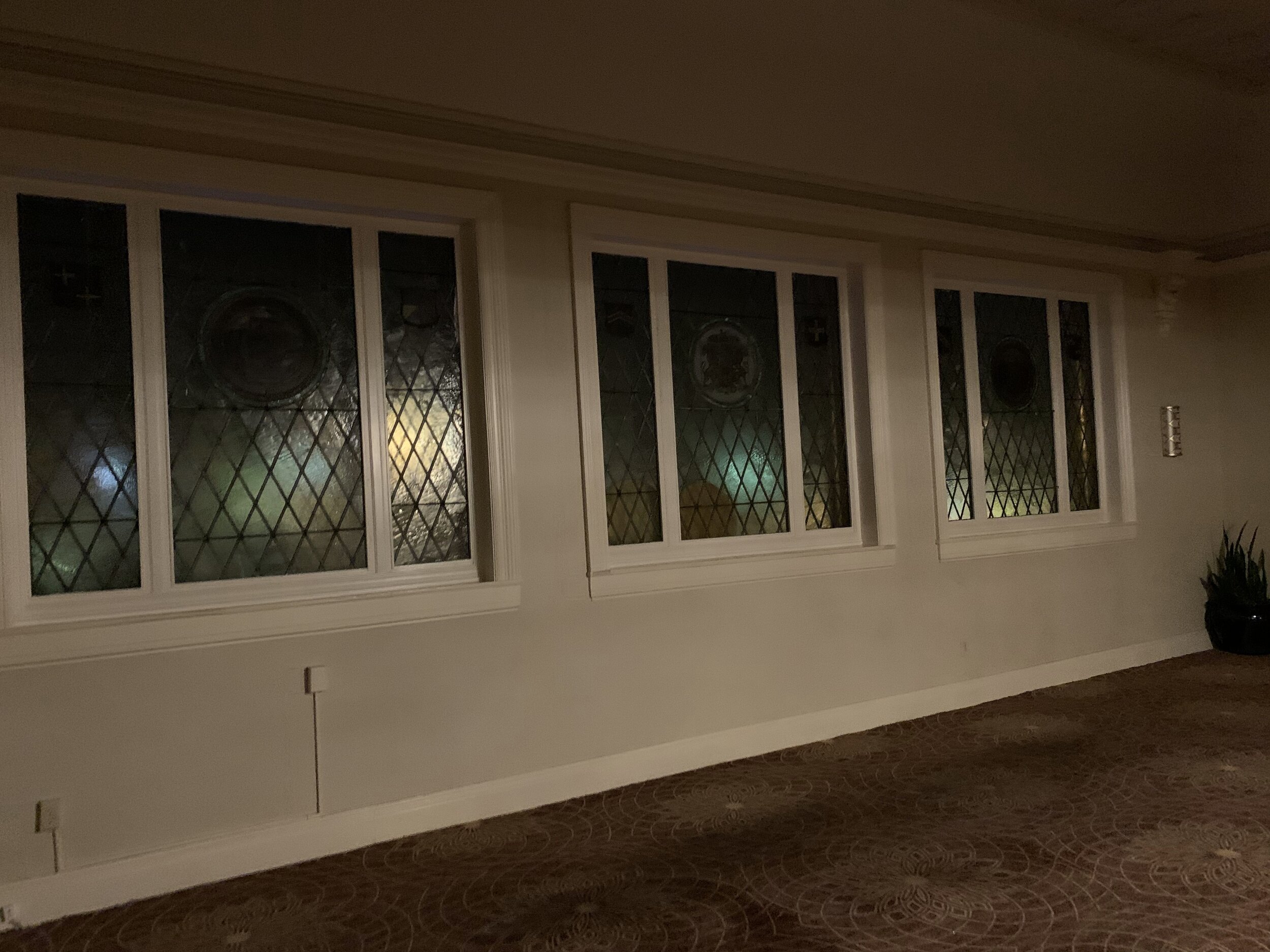

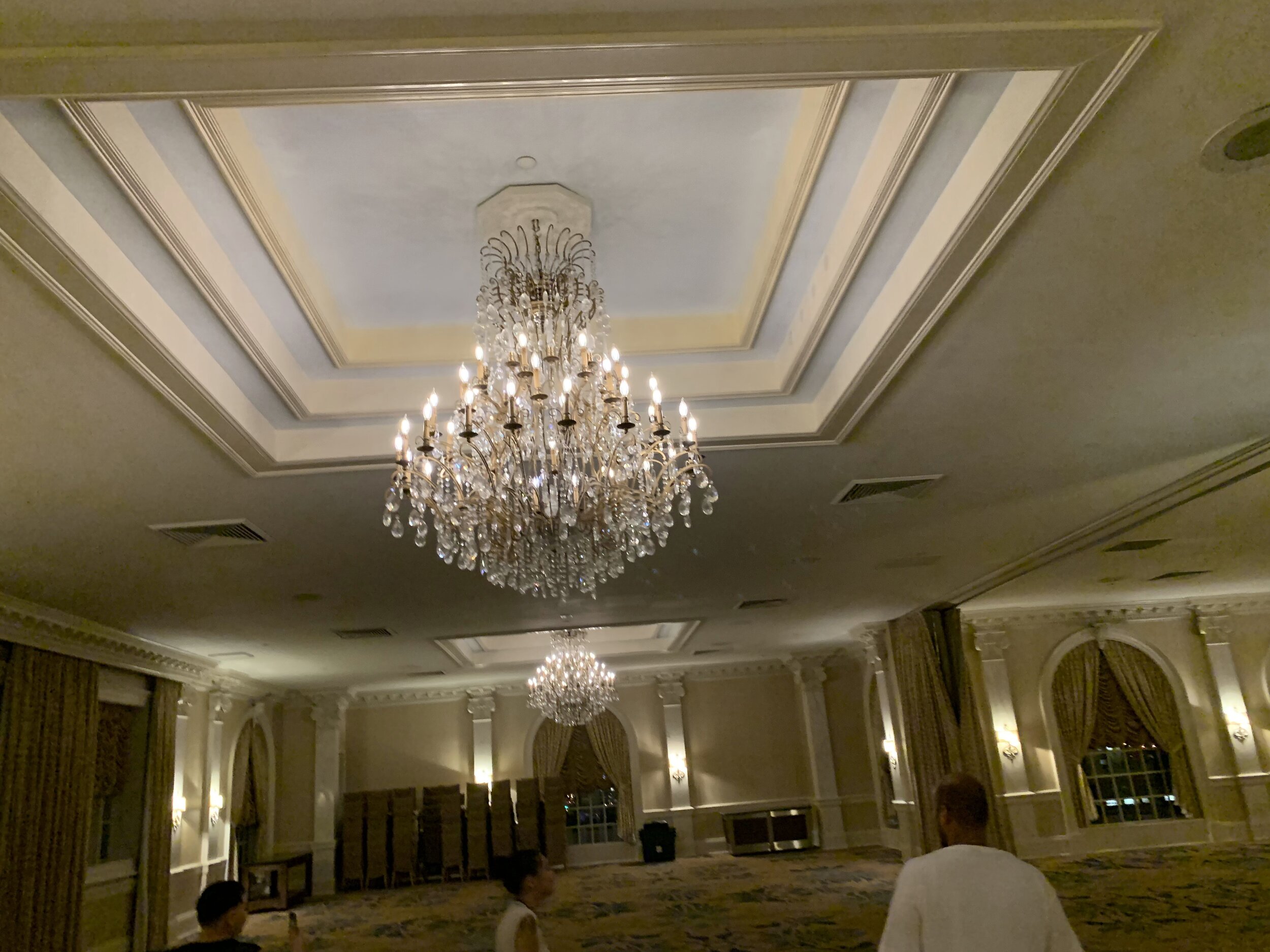
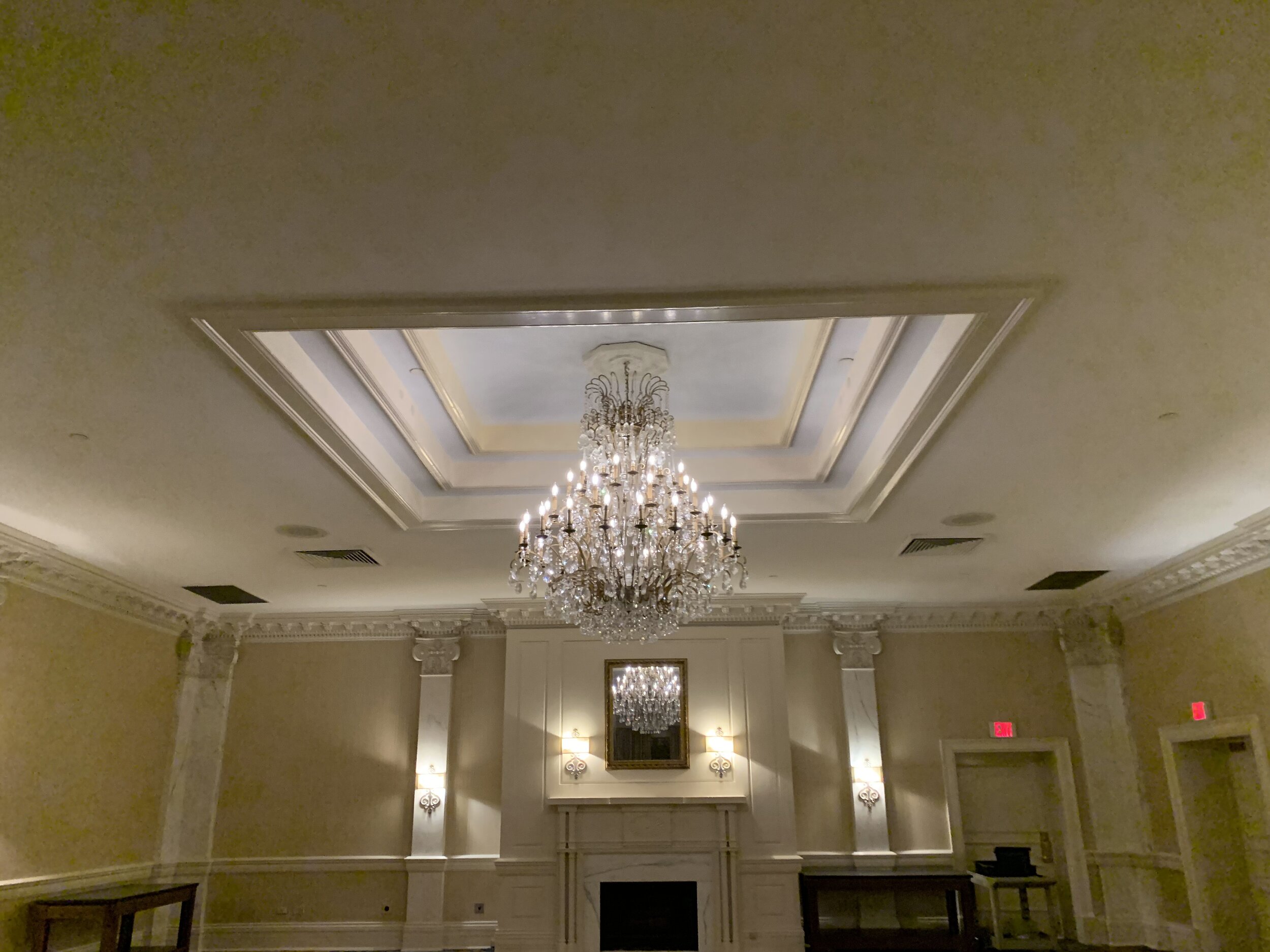
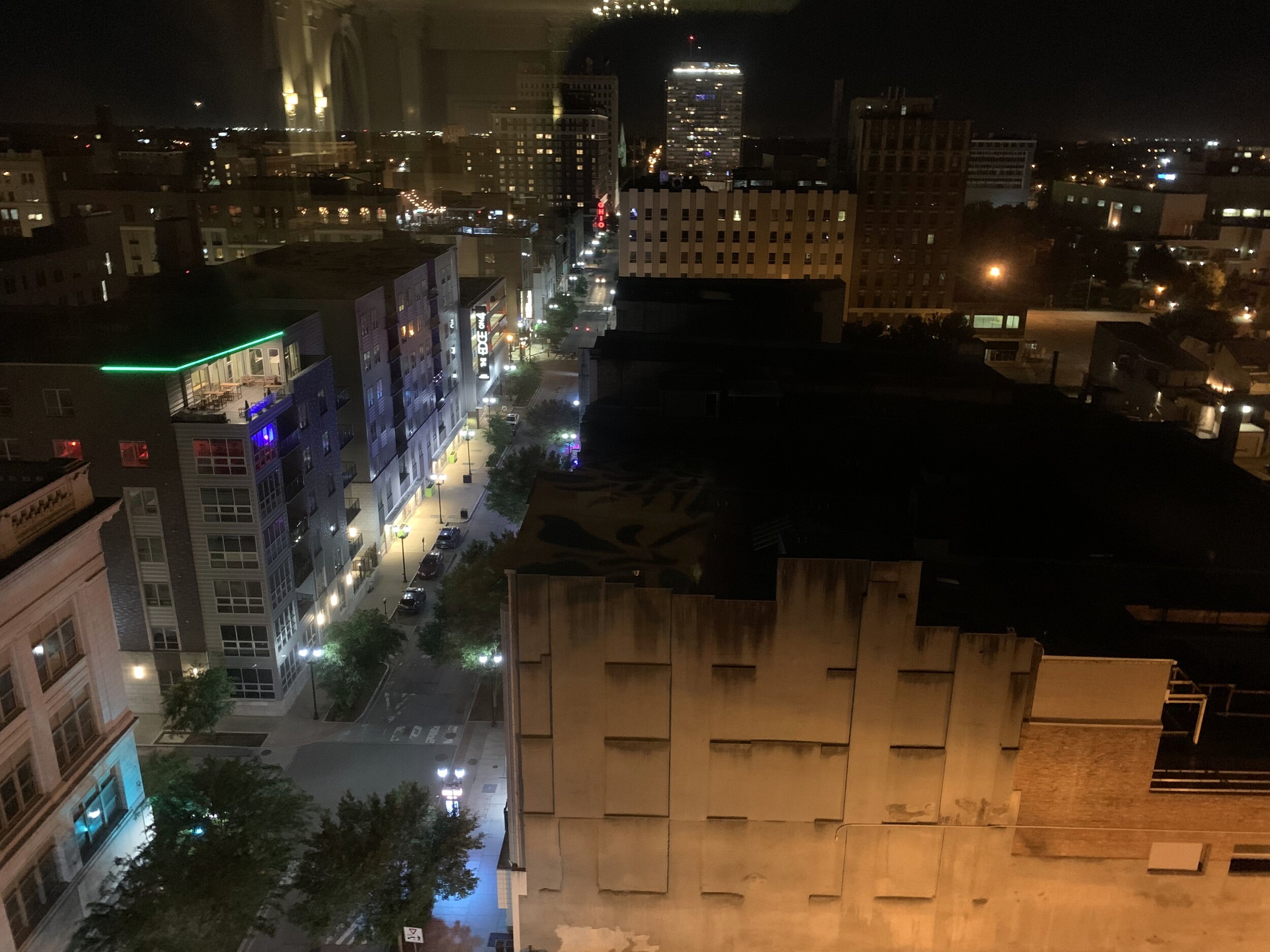
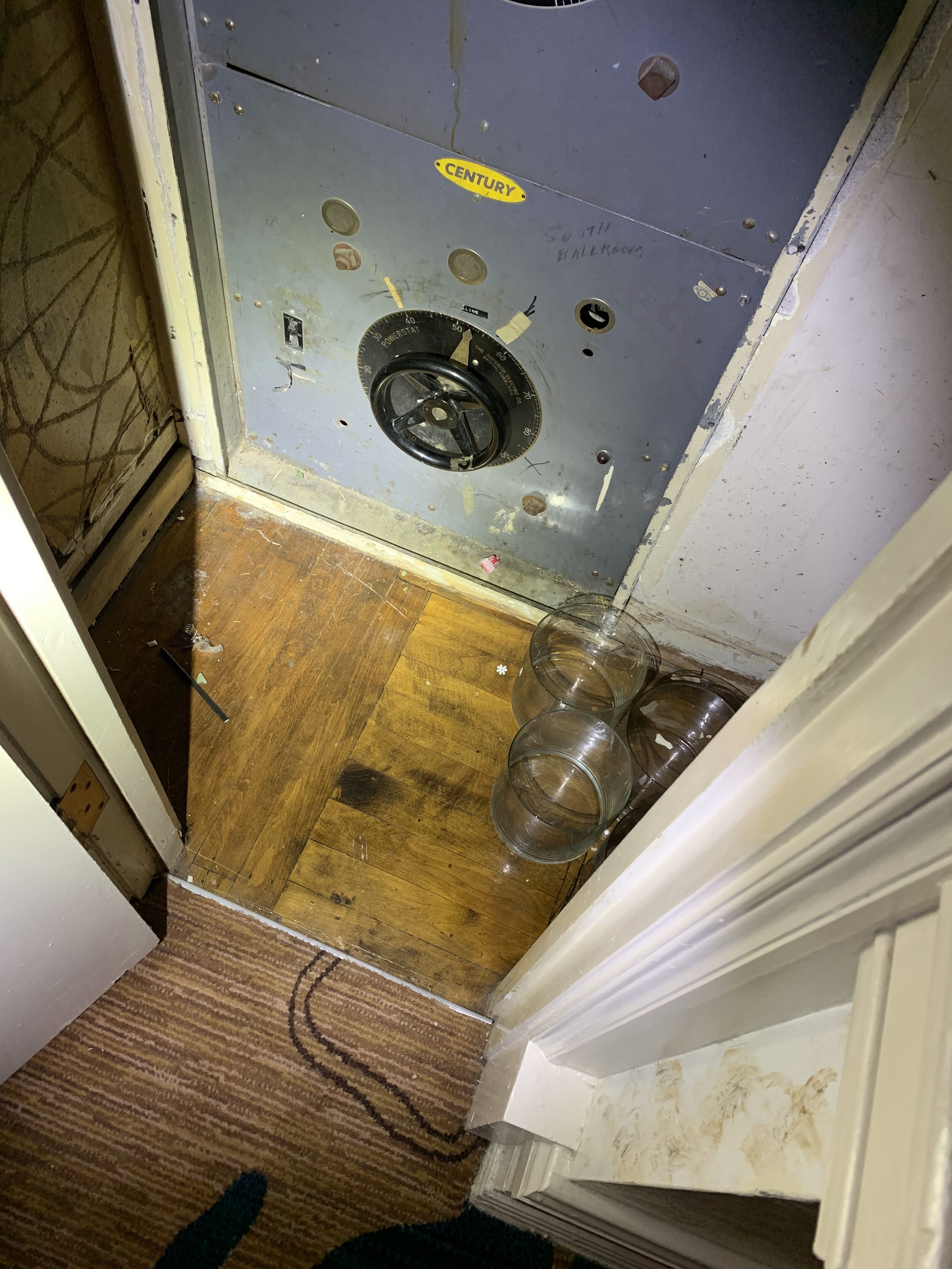
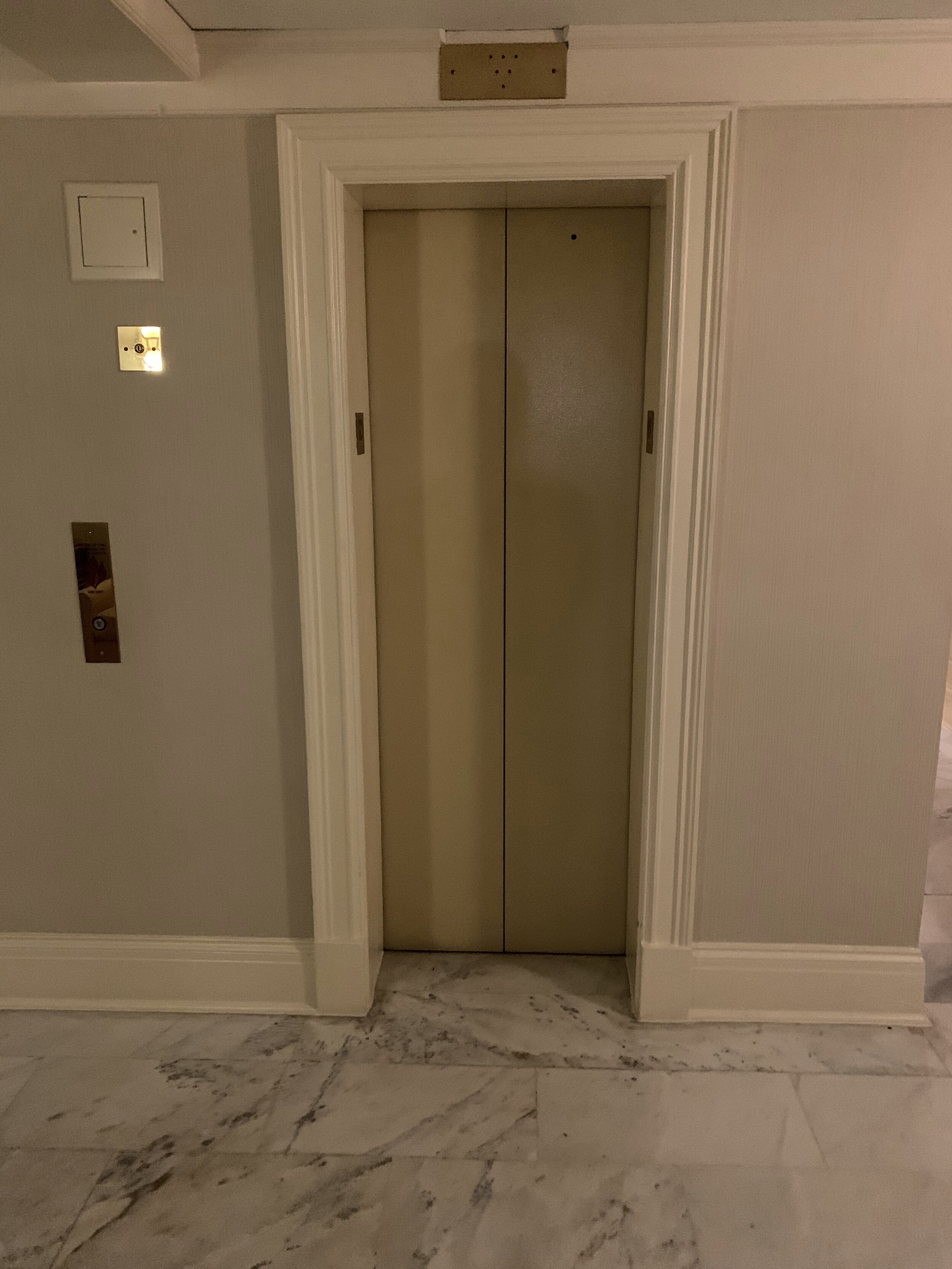
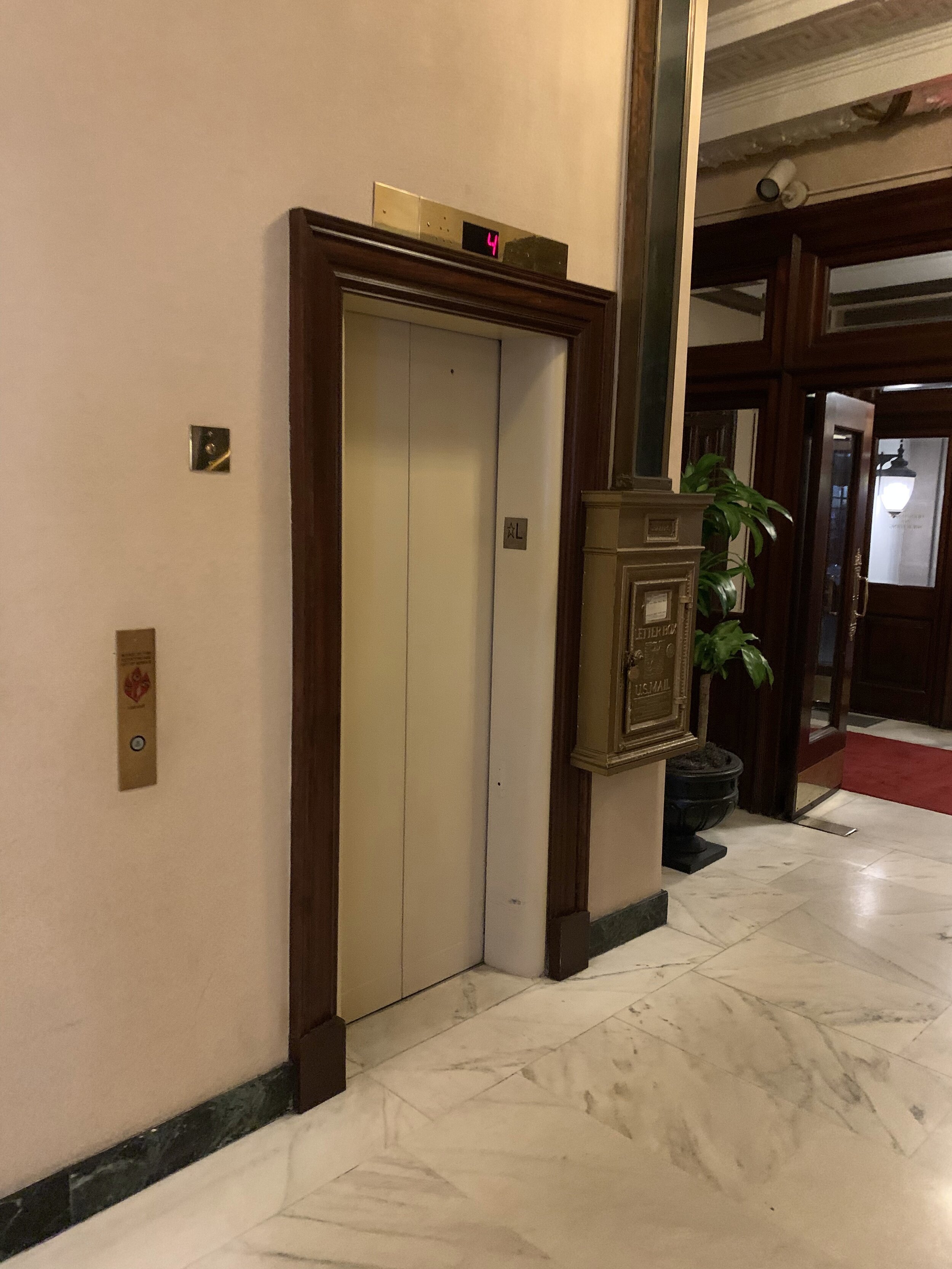
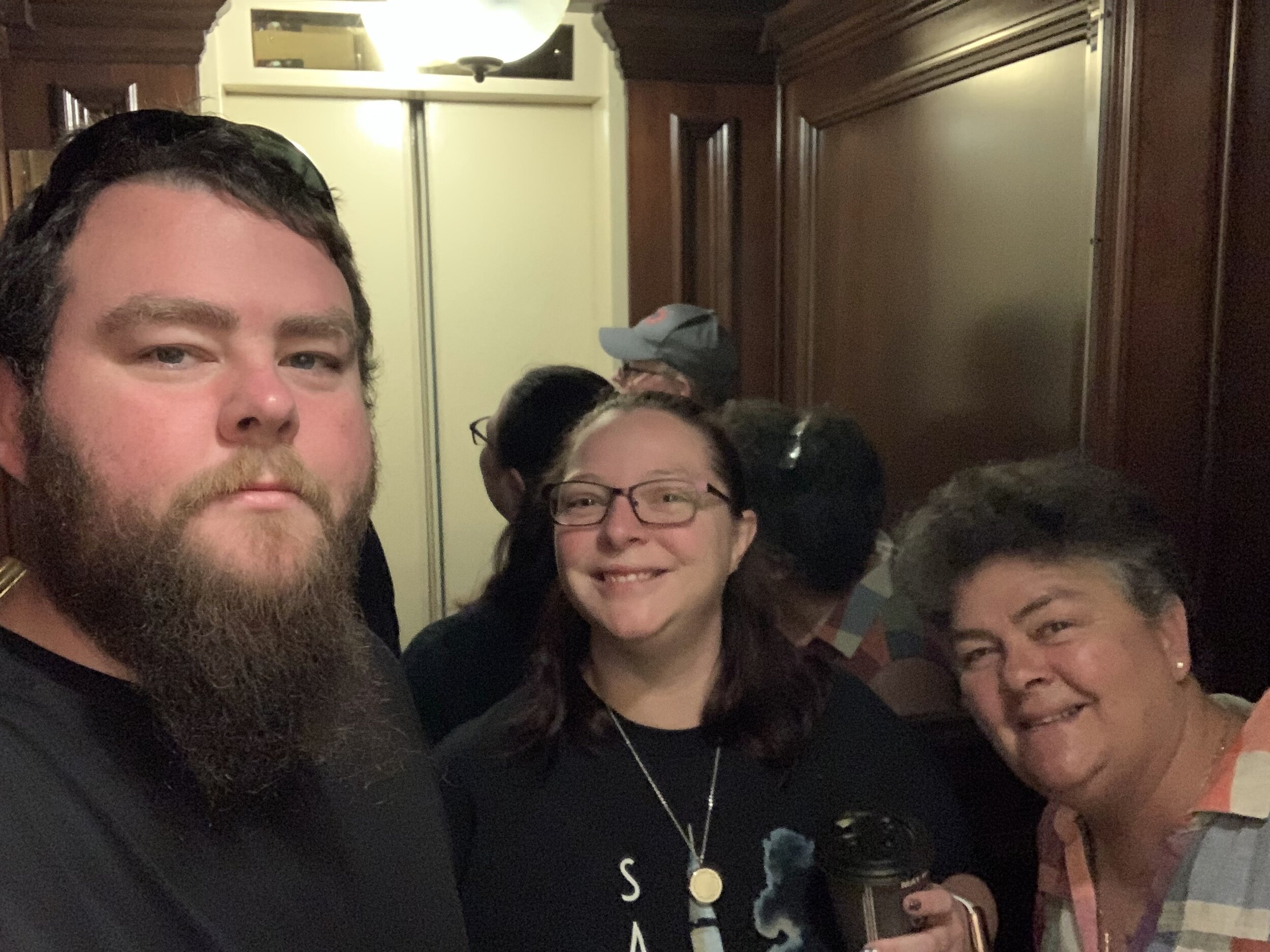

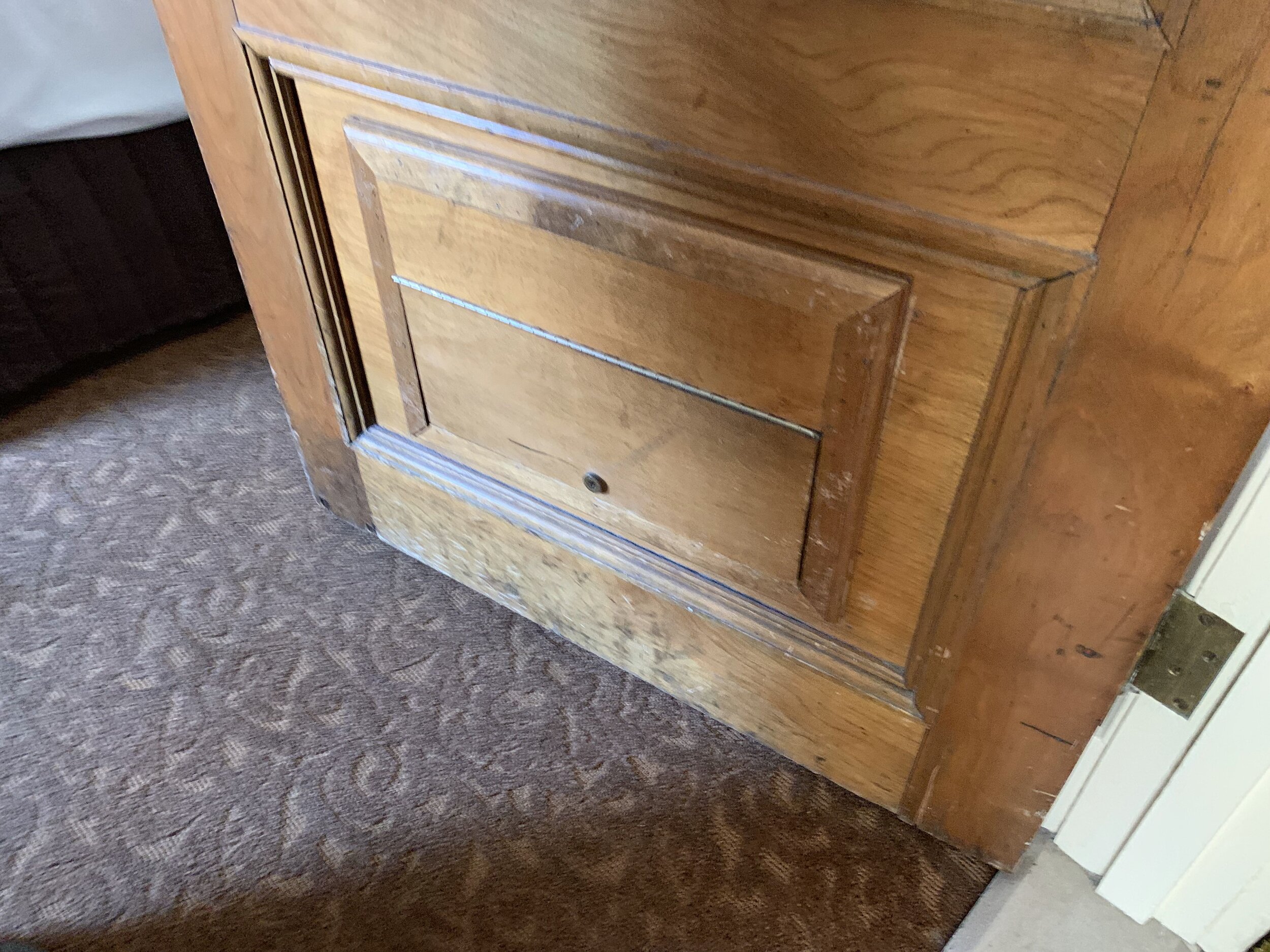
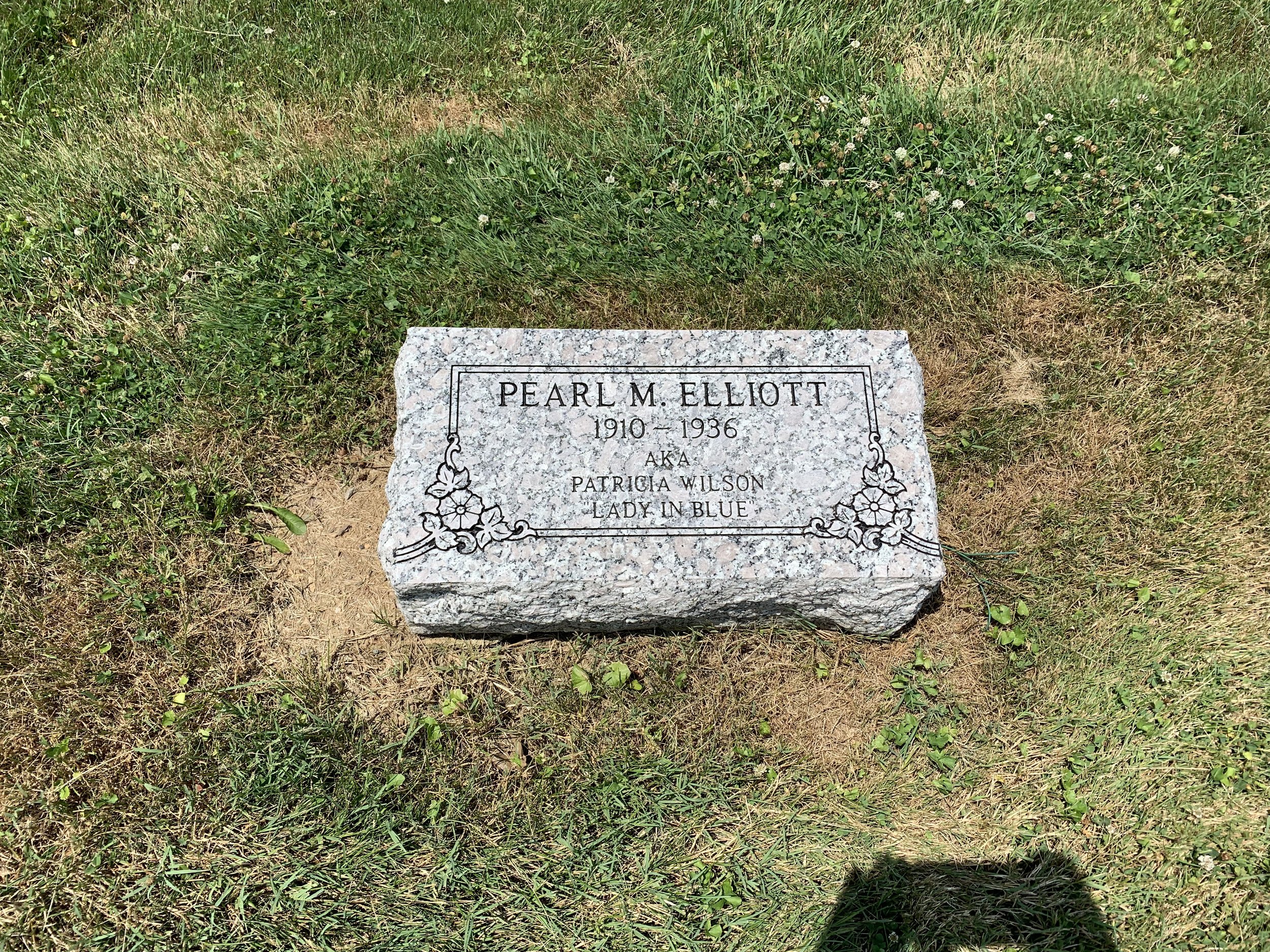
Louisville Kentucky is no stranger to historic hotels. Overlooking the Ohio River the luxurious Galt House combines modern elegance with local history and breathtaking views. Less than a mile south down 4th Street one can enjoy the ambiance of Gilded Age design while eating Kentucky’s famous “Hot Brown” at the Brown Hotel where the dish was invented.
Sandwiched in between those two titans of the local hotel scene is a magnificent piece of local history and architectural beauty. Opened in 1905 the Seelbach Hotel has played host to 14 U.S. Presidents, gangsters Al Capone and Lucky Luciano, Robin Williams, and numerous other celebrities. Most famously though, the hotel’s ornate “Rathskeller” bar was a frequent watering hole for American author F. Scott Fitzgerald. The author would later use the Seelbach as the inspiration for the “Mulbach Hotel” in his most famous work “The Great Gatsby”. Today the hotel lobby features a restaurant known as “Gatsby’s on Fourth” paying homage to their unique place in literary history.
Second only to her literary notoriety, the Seelbach is perhaps most famous for the ghost of The Lady in Blue that haunts her hallways. In 1936 Mrs. Patricia Wilson (buried under her maiden name of “Pearl” Elliot) was set to meet her estranged husband at the Seelbach in an effort to patch up their marriage. Unfortunately her husband never made it to that meeting, having died in a car accident en route to their meeting. Within a few days Mrs. Wilson’s body was found at the bottom of the service elevator shaft. Some say she killed herself out of grief, others say her death was a tragic accident, while some believe she may have been murdered by a boyfriend who later turned out to be a serial killer. If you’re not fortunate enough to make acquaintance with her ghostly blue apparition in the hotel's halls overnight, you can pay your respects at her grave at the nearby Evergreen Cemetery.
If staying at the hotel, be sure to check-in at the front desk around 10pm. The security guards who walk the halls all night, and know all of the hotel’s secrets, will give you a tour focusing on both its history as well as its otherworldly connections. They’ll show you Capone’s private booth with it’s 2-way mirror and secret exits, the hotel’s gorgeous “Rathskeller” bar with secret tunnels that lead into the Louisville underground, the ballroom that directly inspired the wedding scene in Gatsby, and so much more.
Although the Presidential Suite has met the needs of U.S. Presidents as recently as George W. Bush, the standard rooms are certainly not the most luxurious. It’s clear that she’s from a much older time, the rooms feel more like a small Brooklyn apartment than they do a modern hotel room. Conveniences are minimal (room, TV, bathroom, no mini-fridge). That said though, this simply adds to the charm of the hotel. If you’re spending your visit the right way, you’ll spend far more time enjoying the extravagant beauty of the hotel itself than the modest conditions of your room.
Want to Experience This Adventure for Yourself?
The Seelbach Hotel: 500 S 4th St, Louisville, KY 40202
Patricia Wilson/Pearl Elliot’s Grave: https://www.findagrave.com/memorial/28483898/patricia-wilson